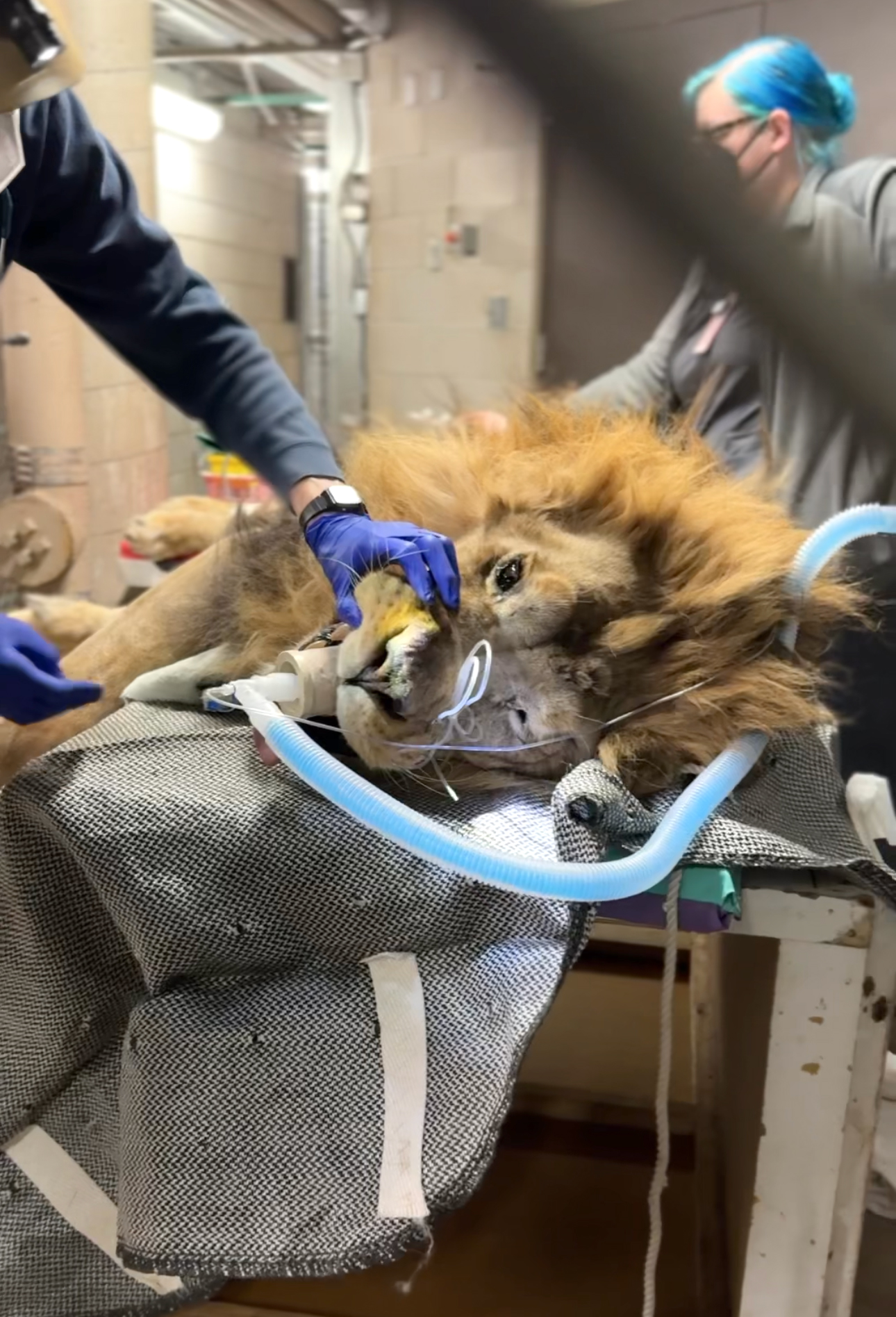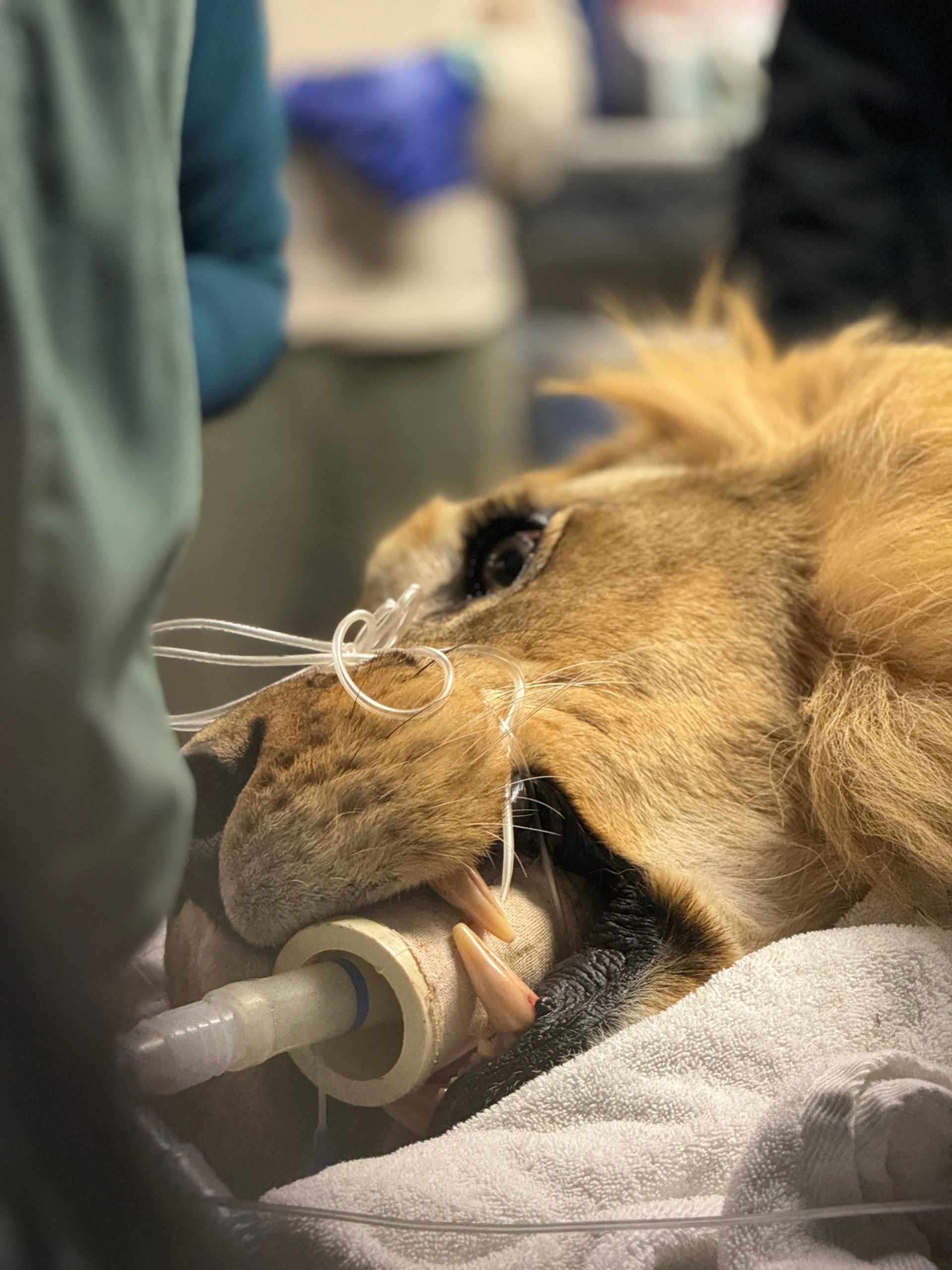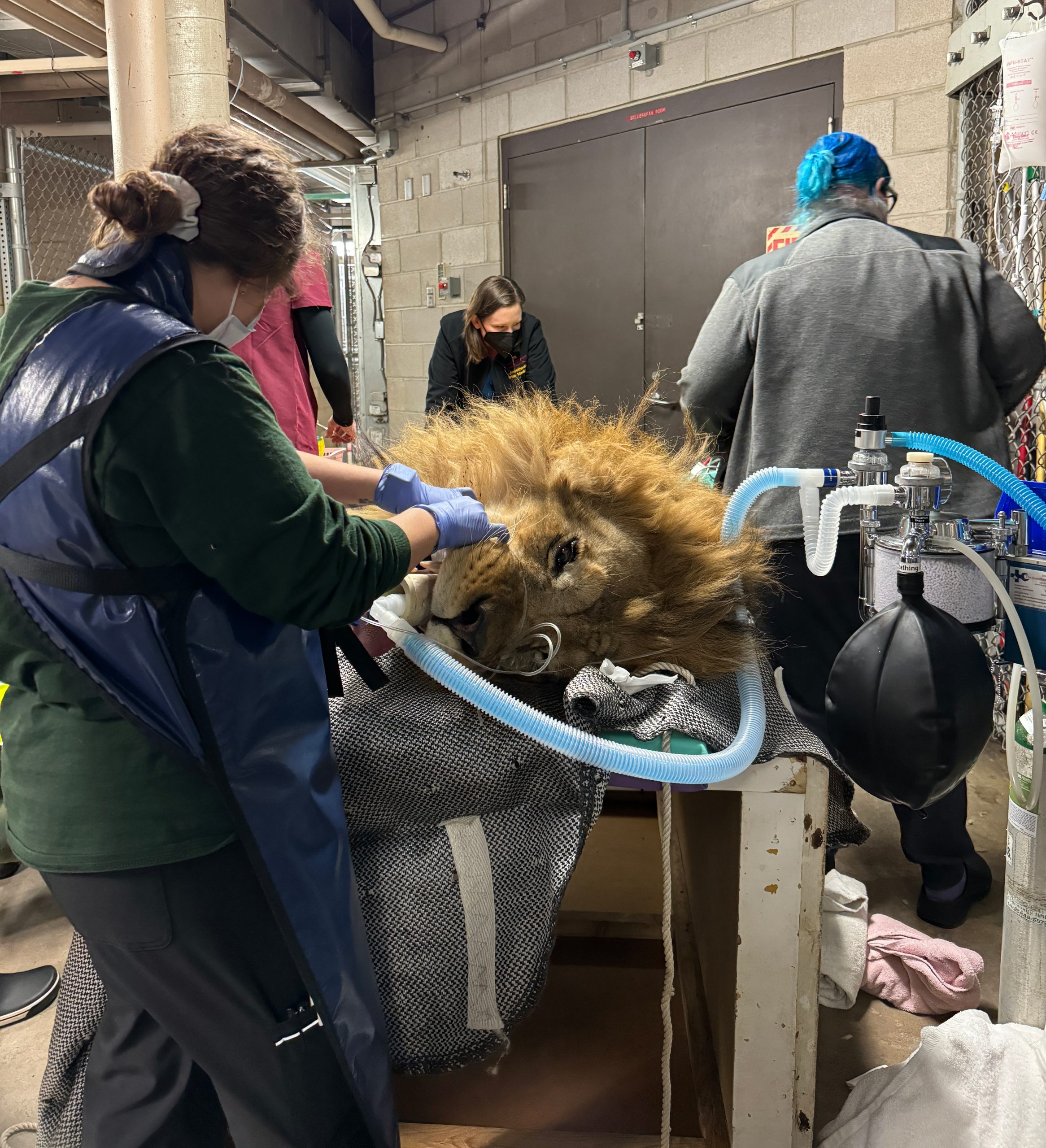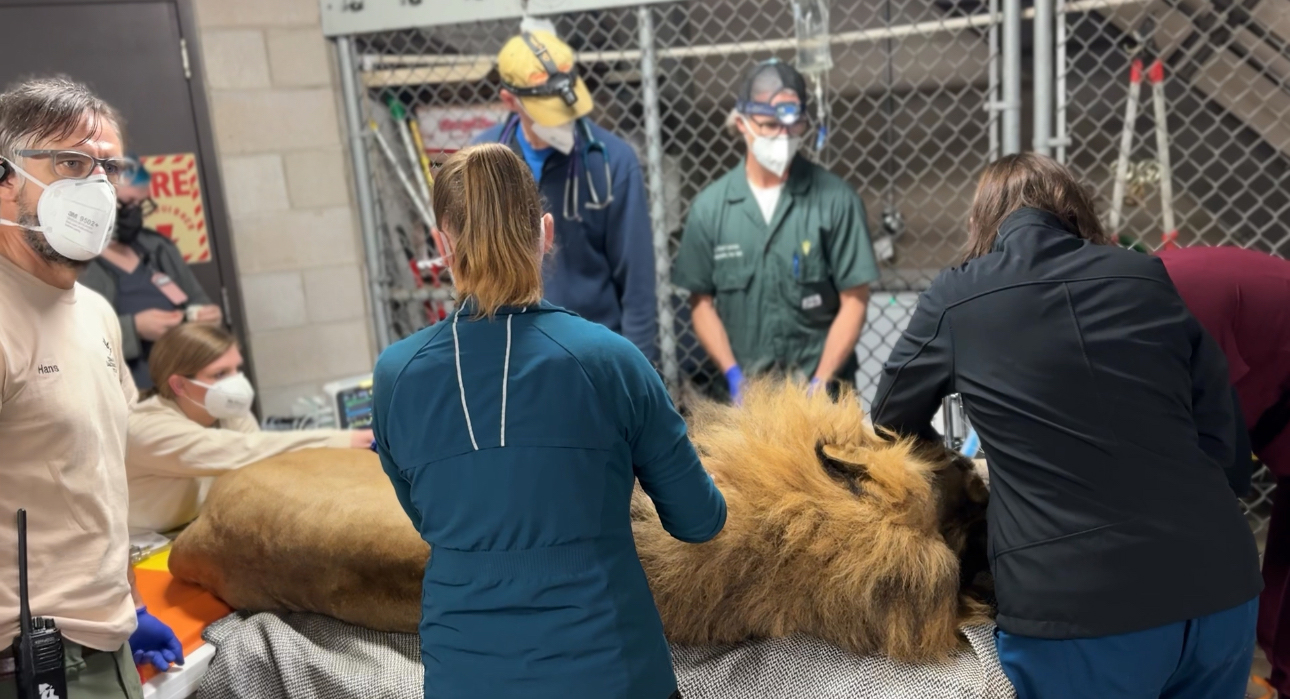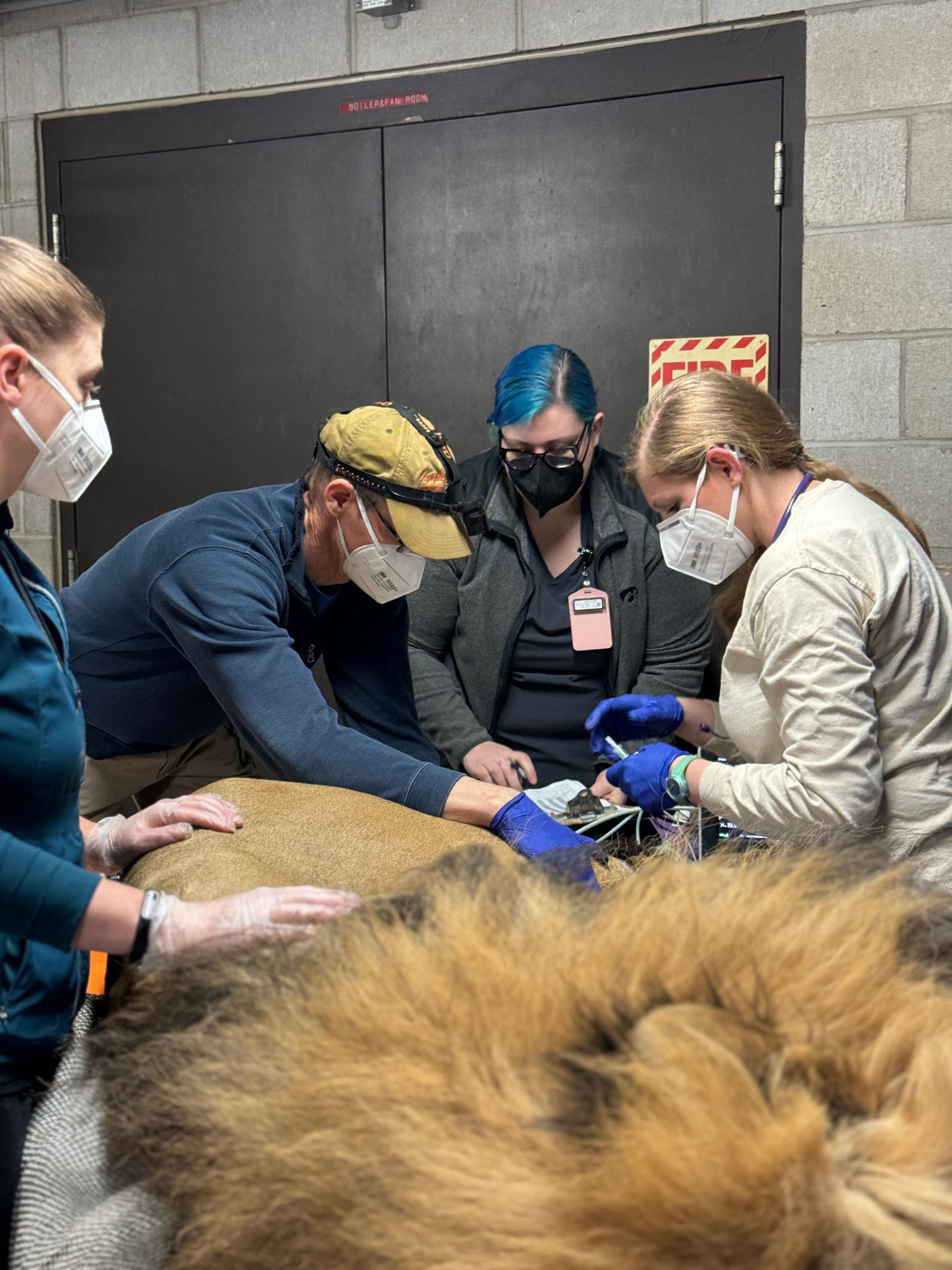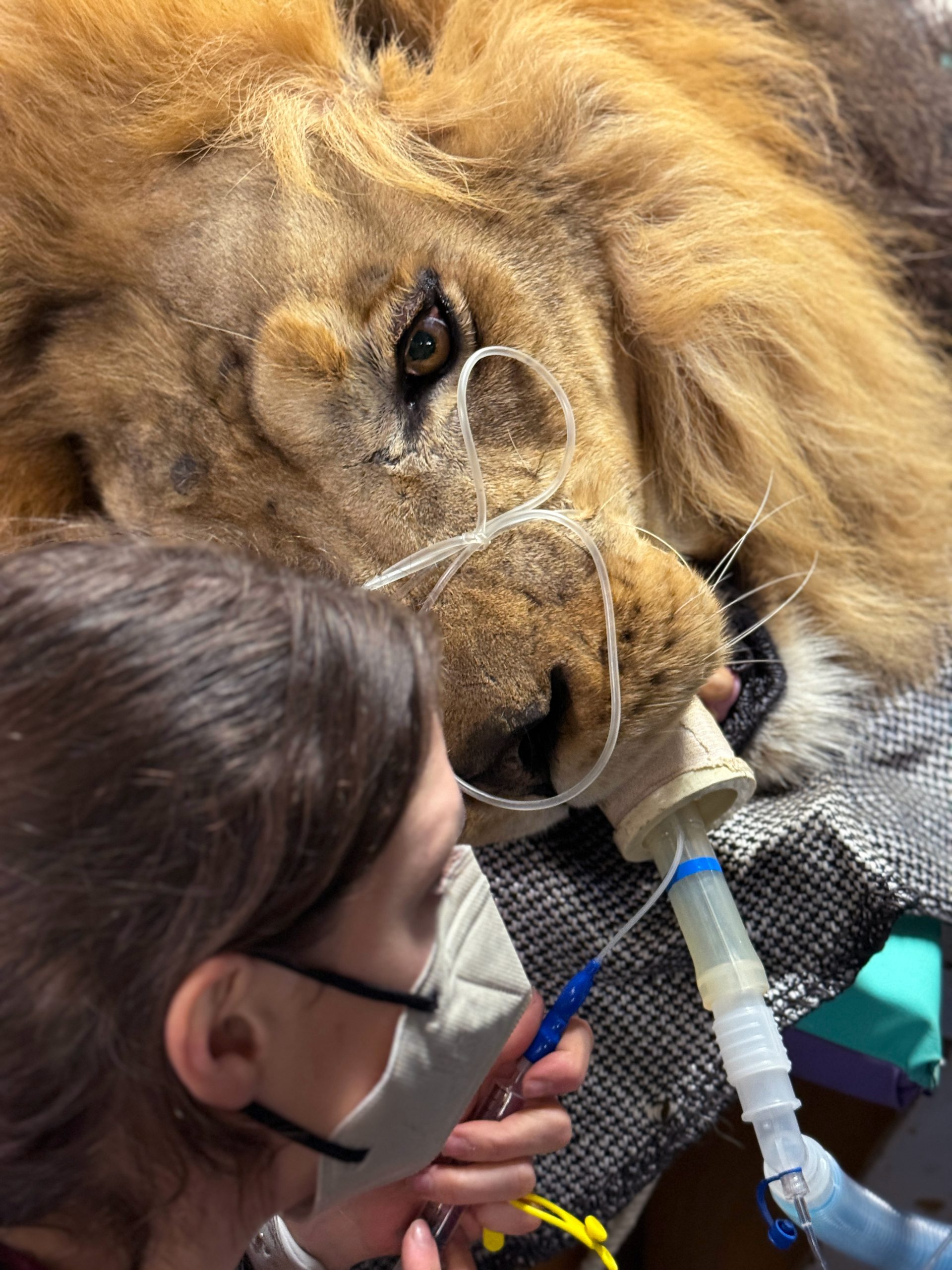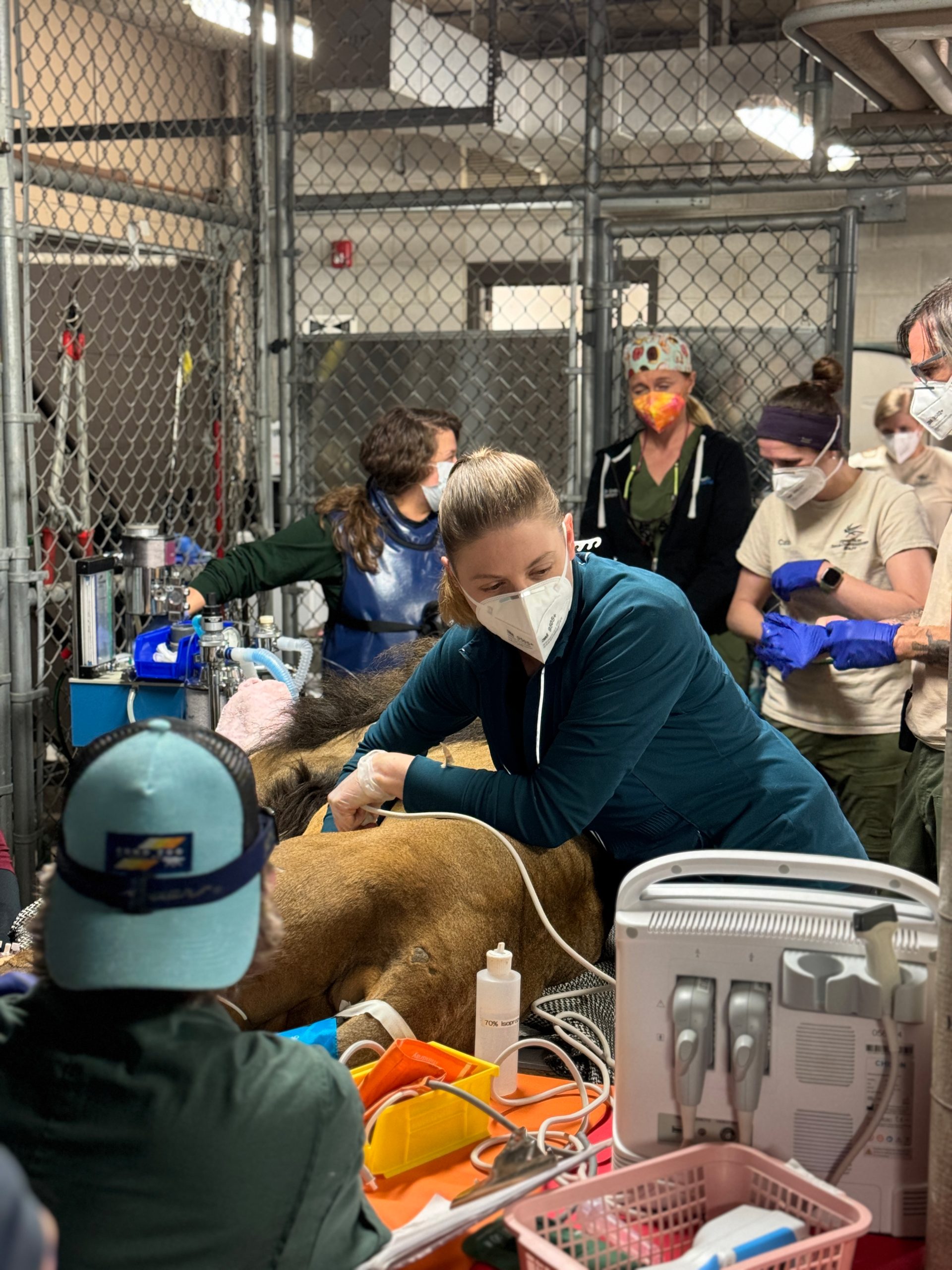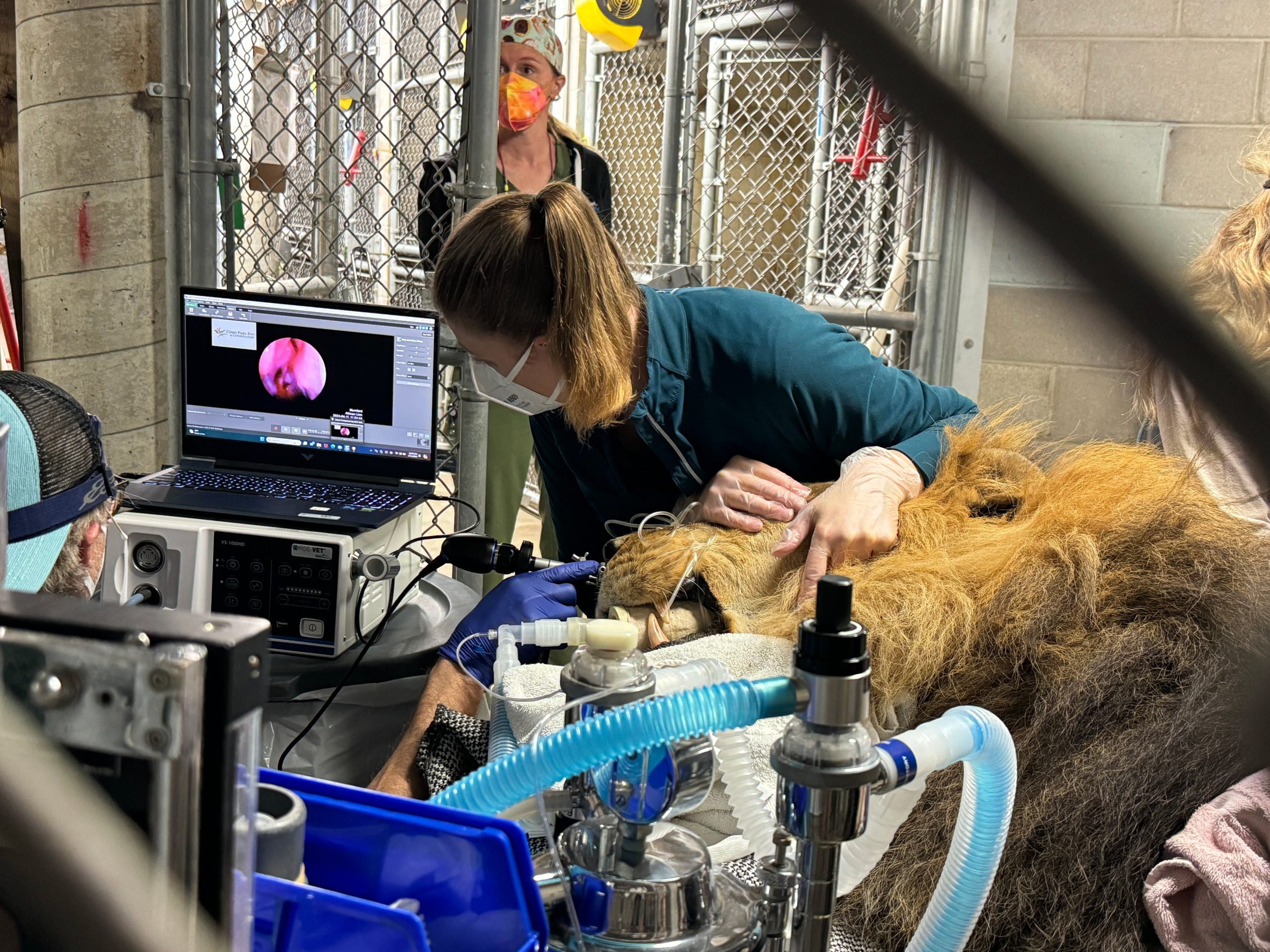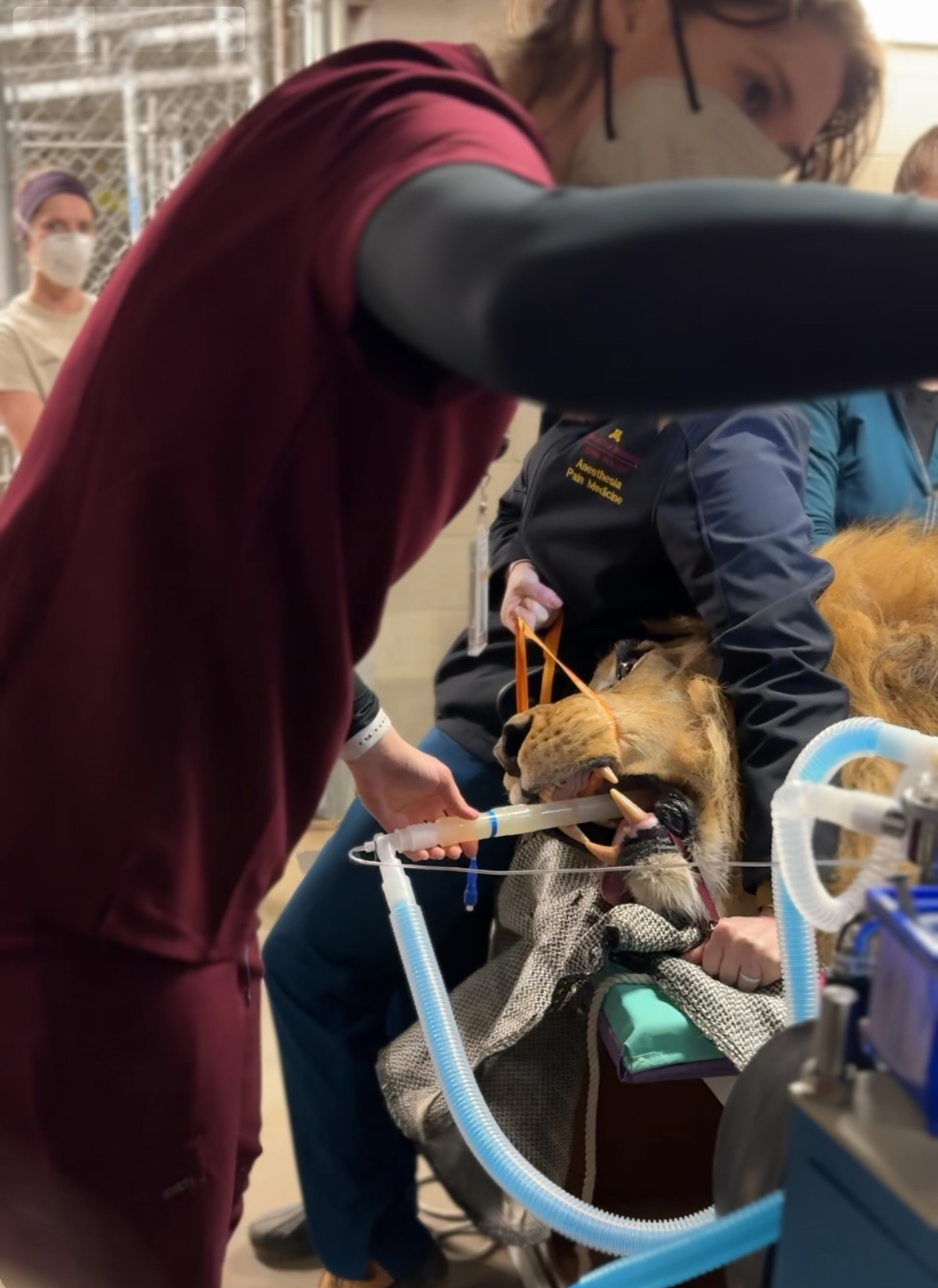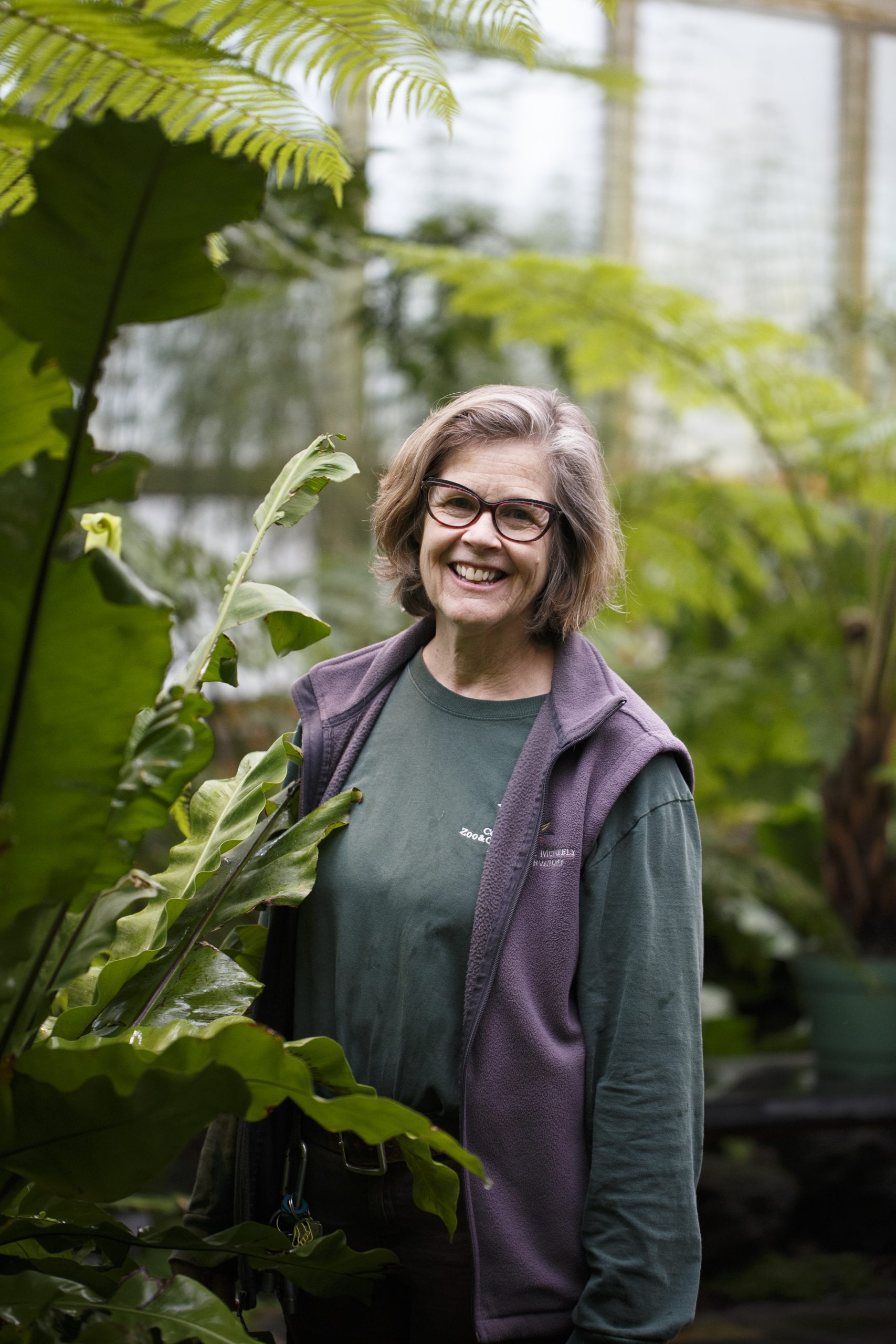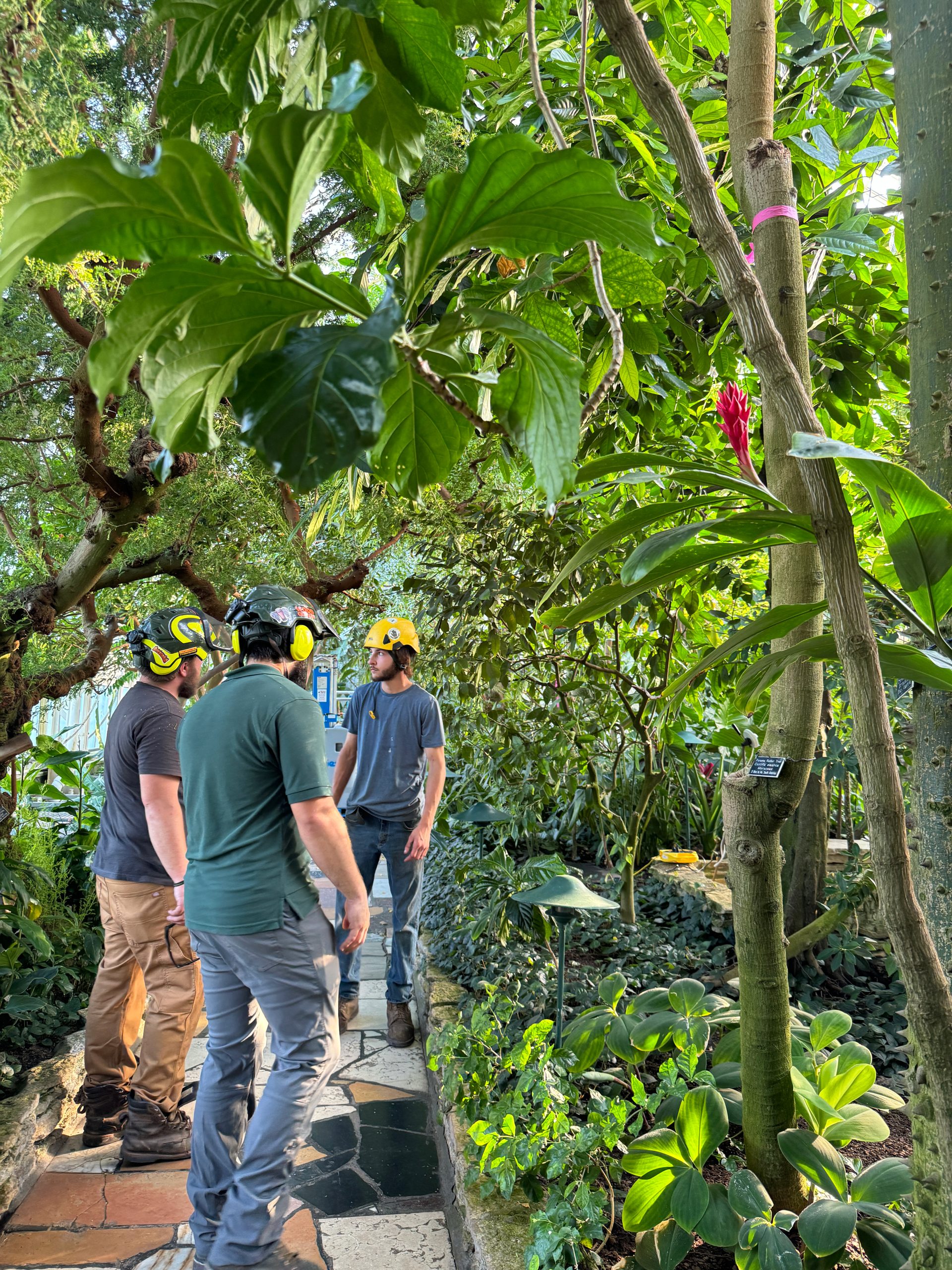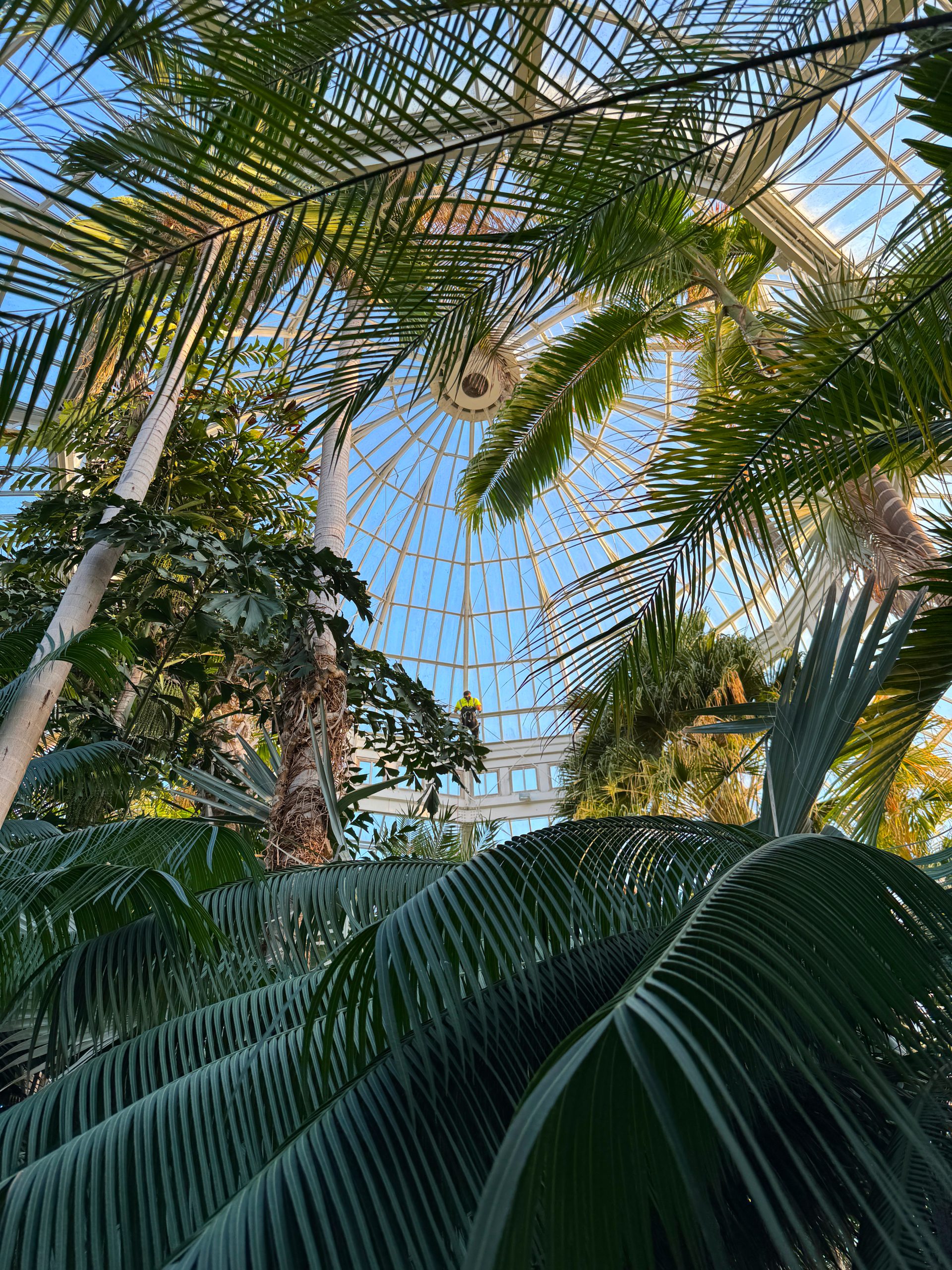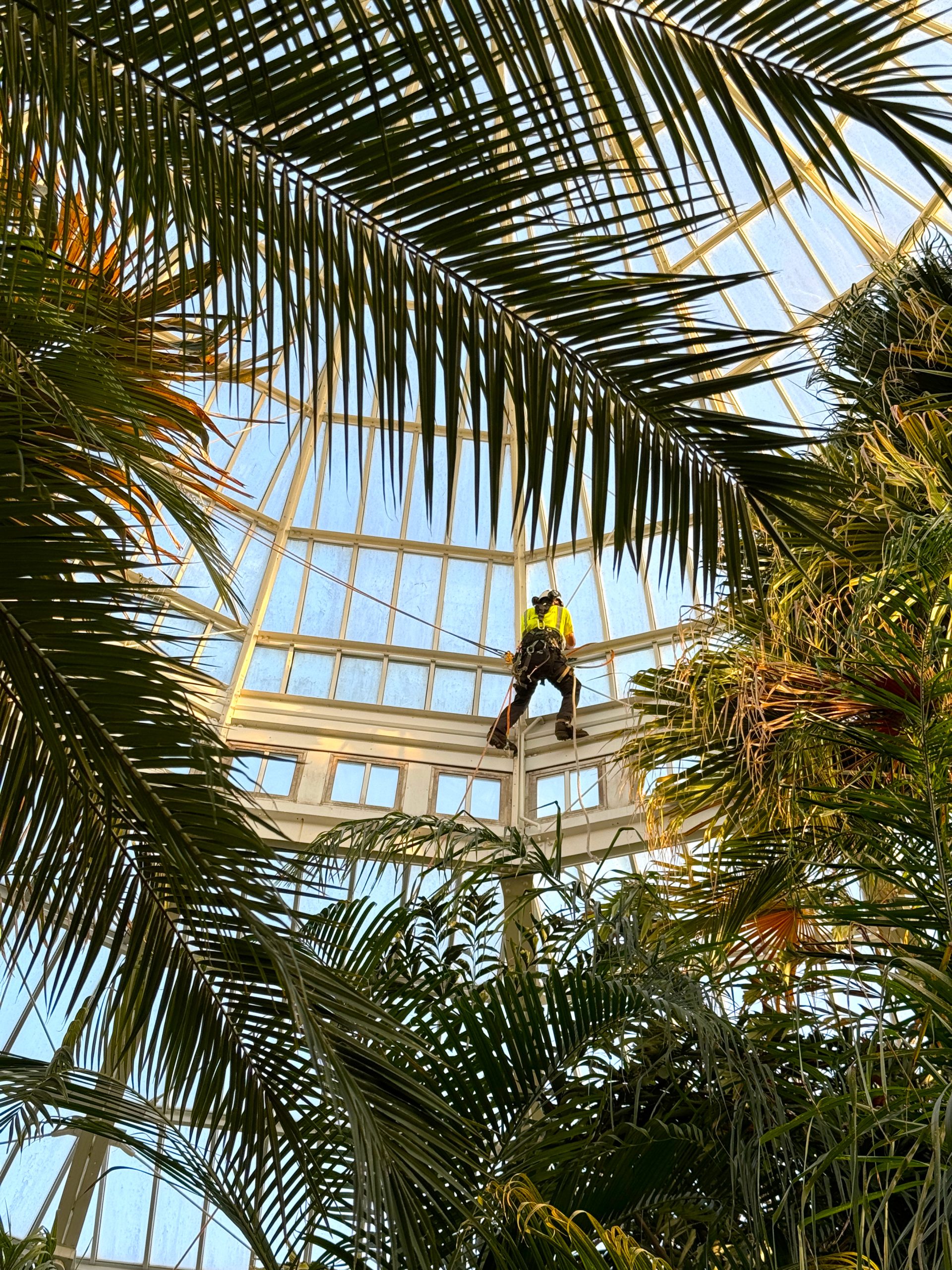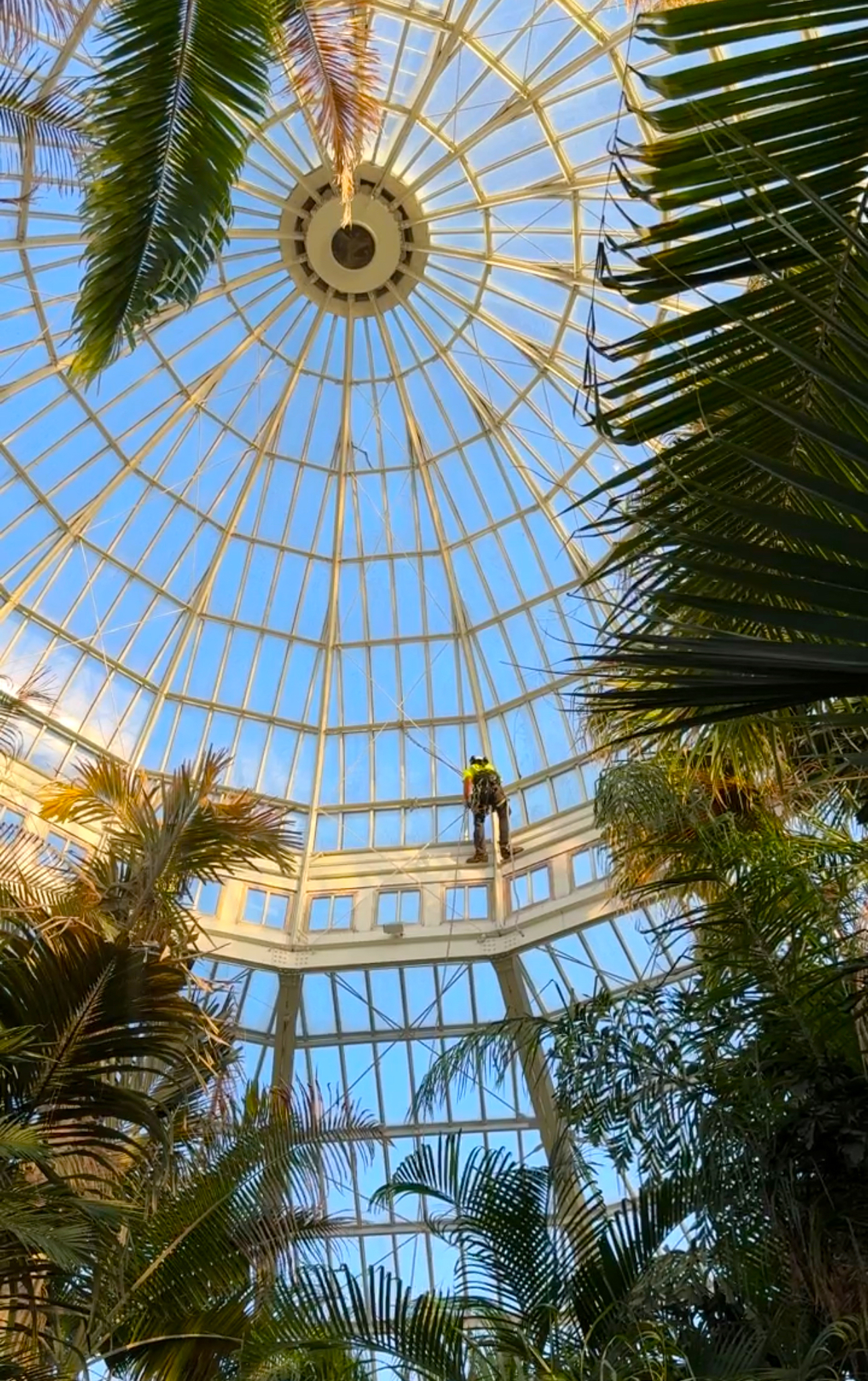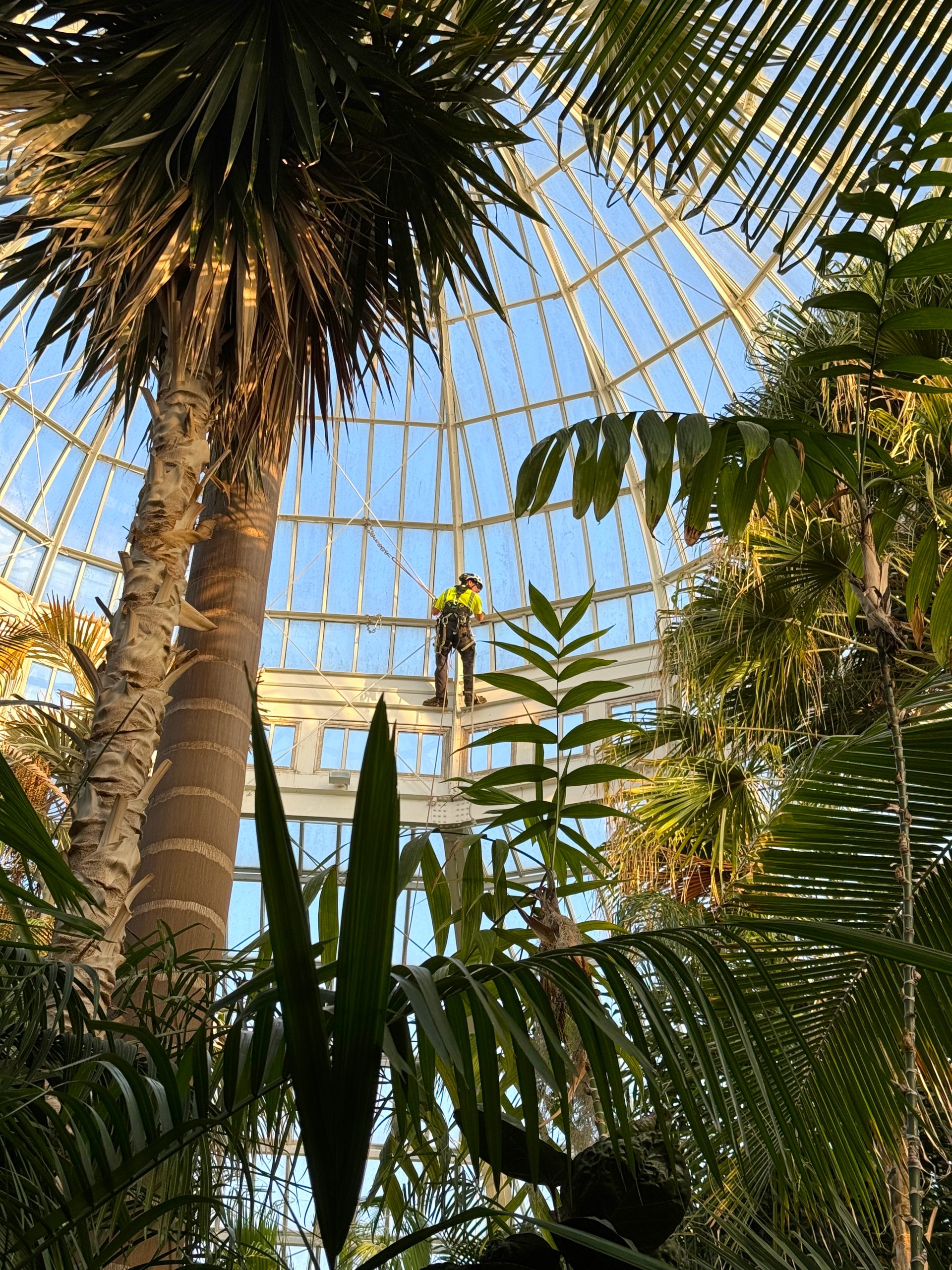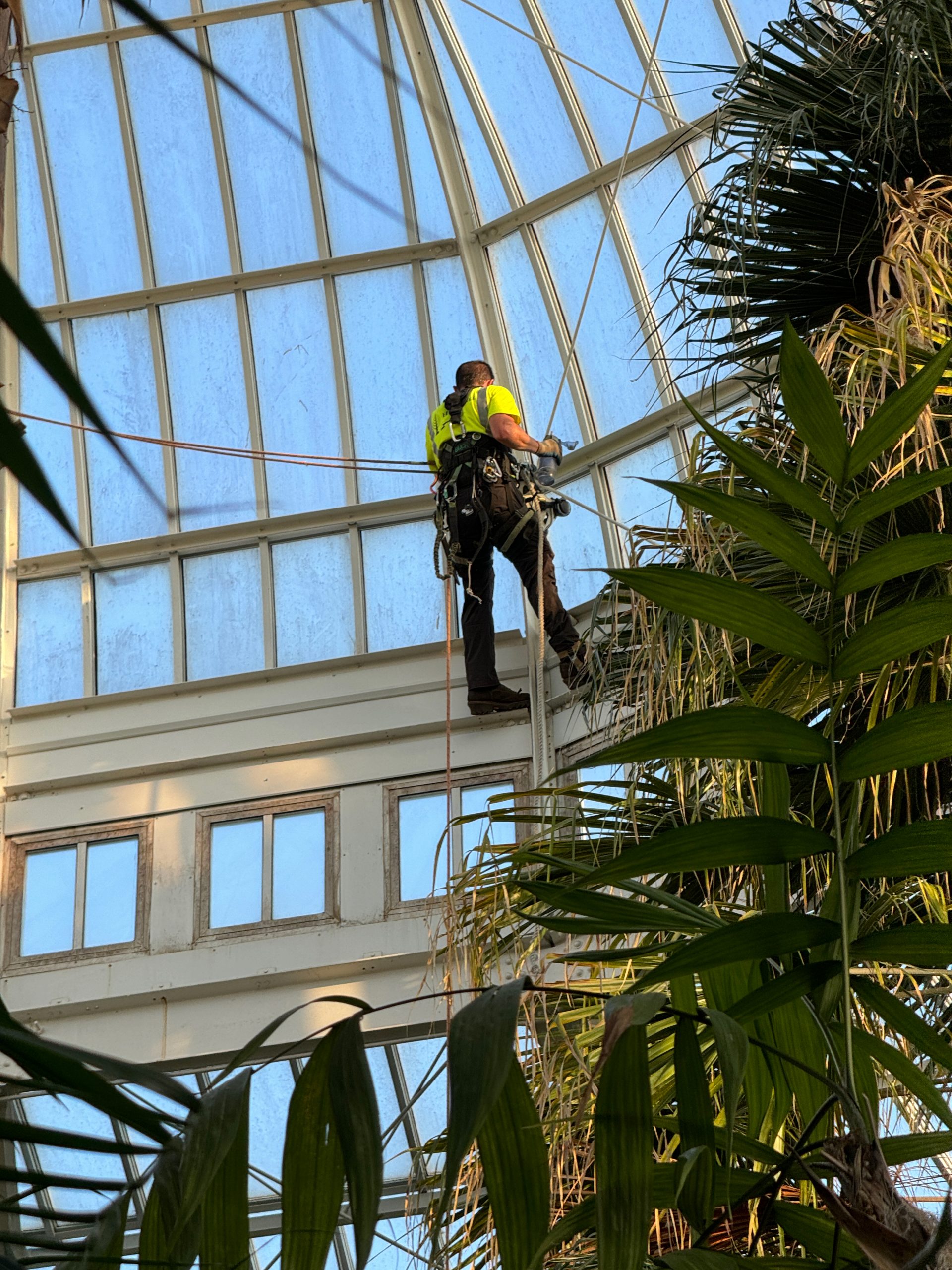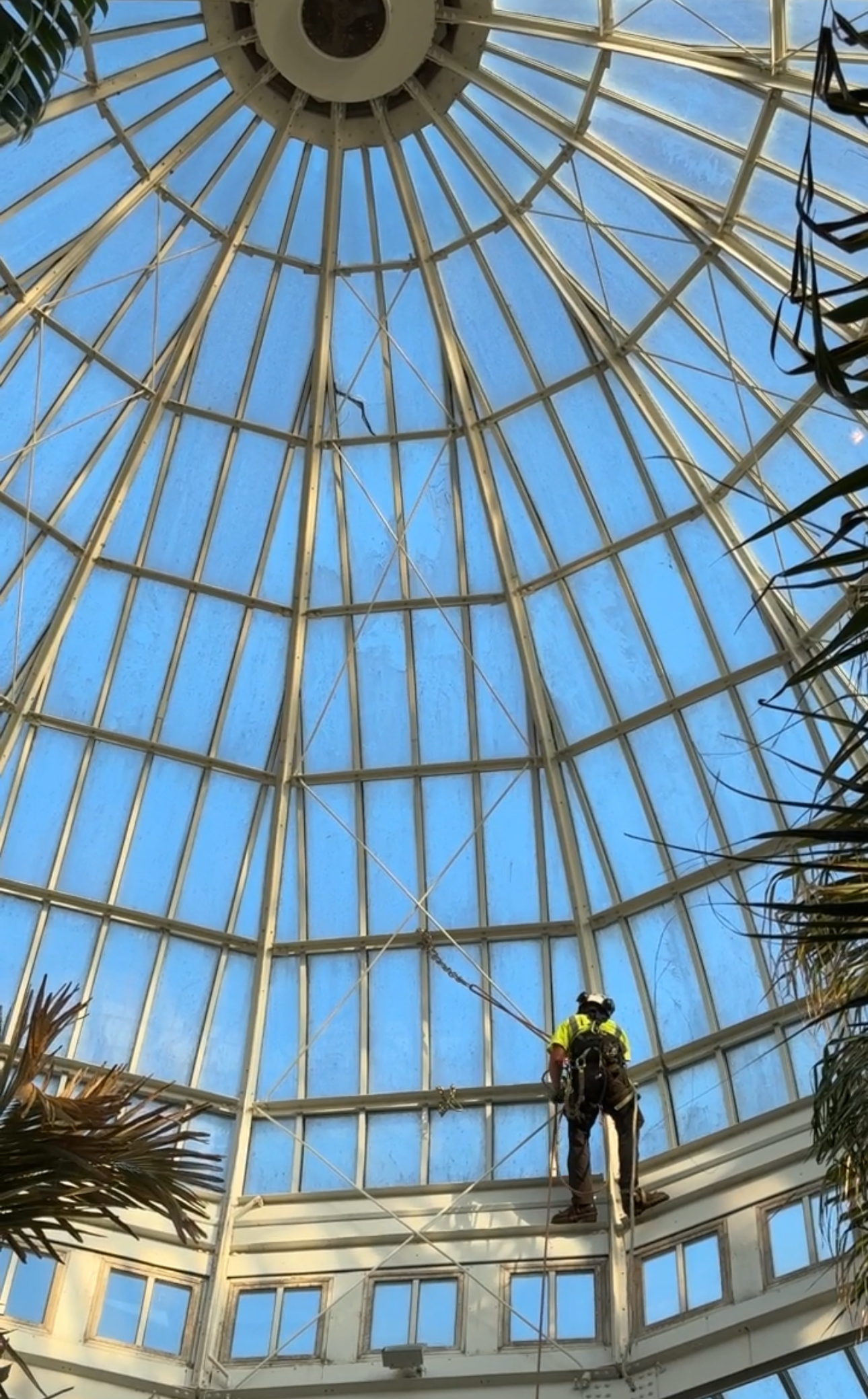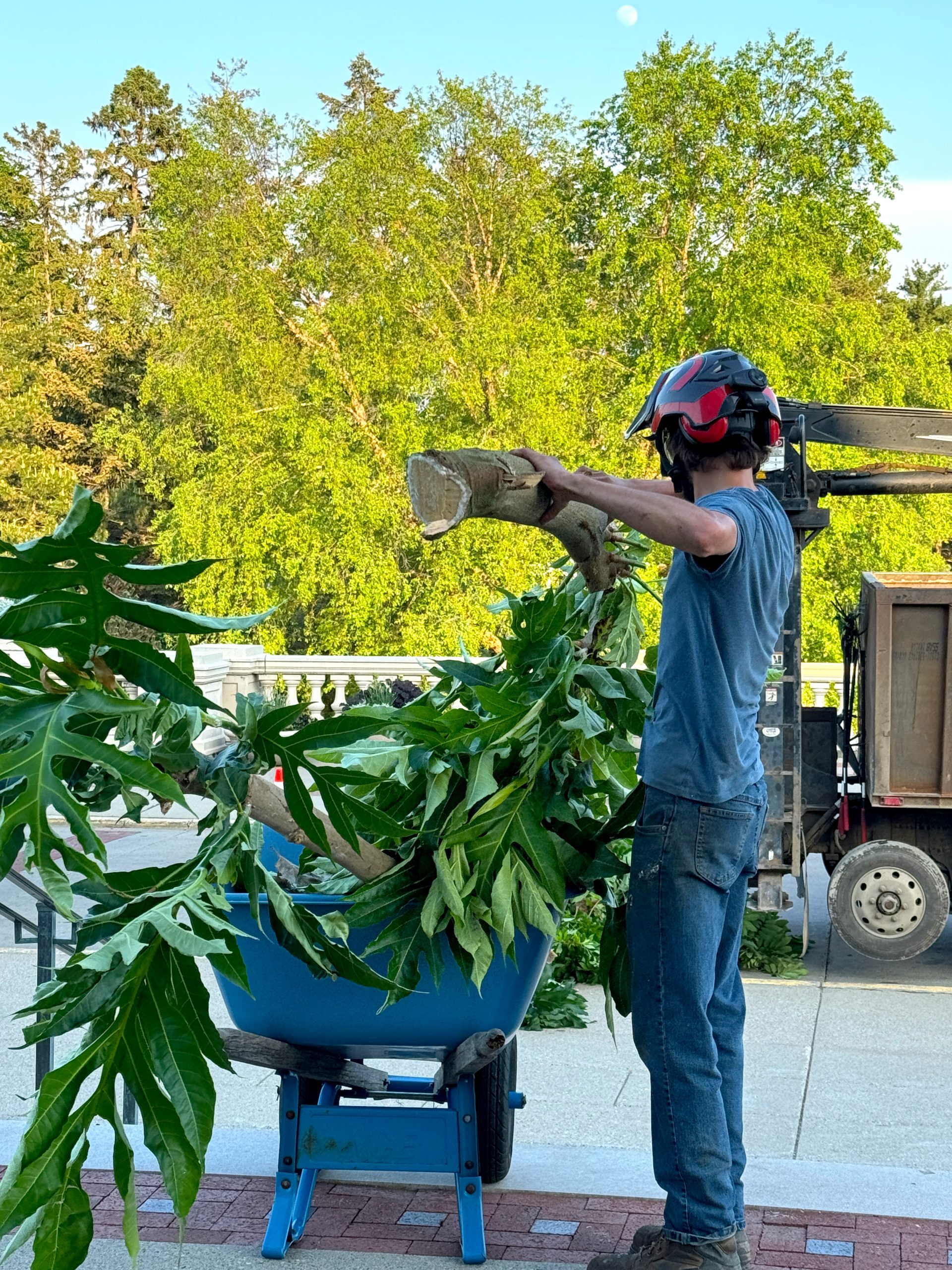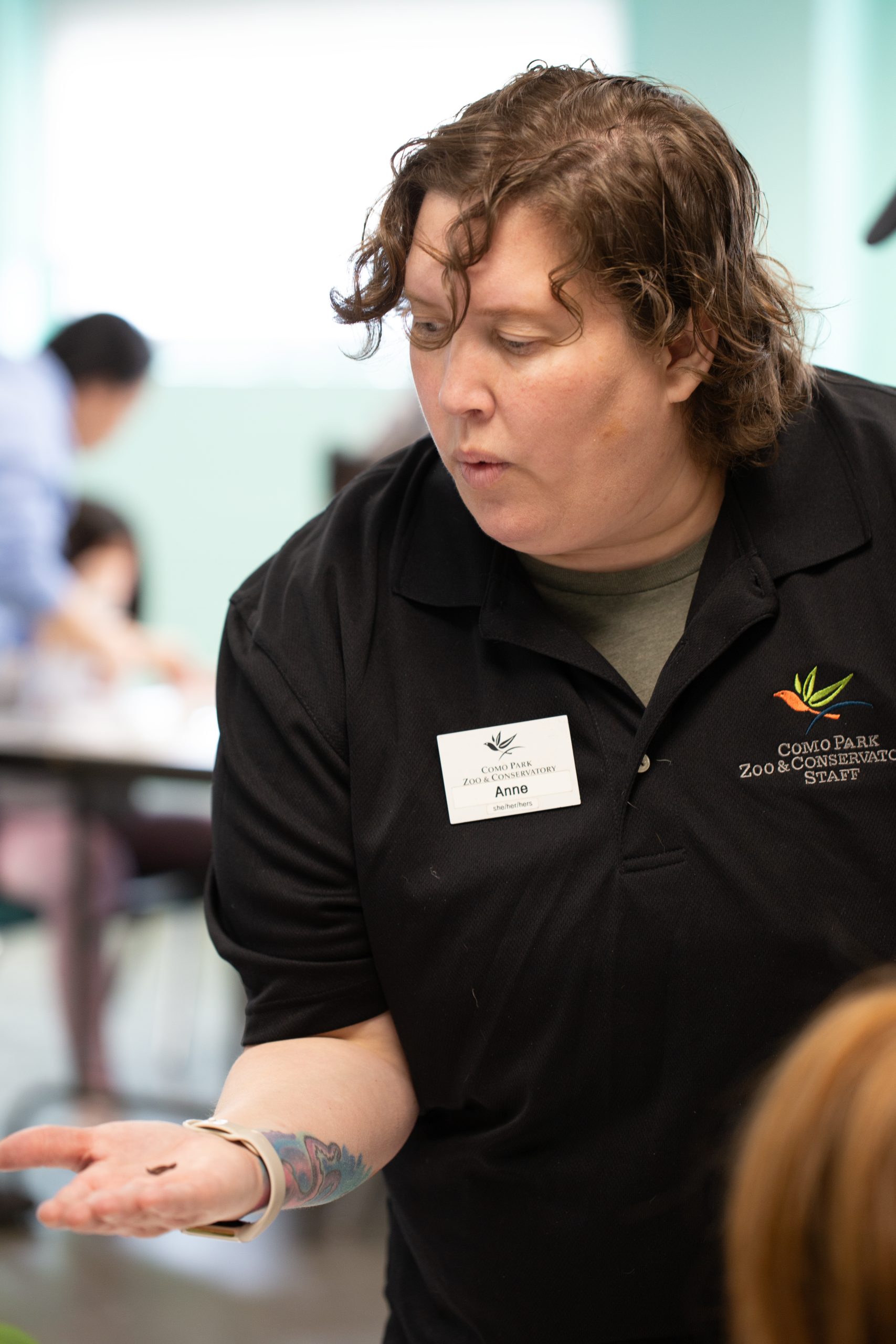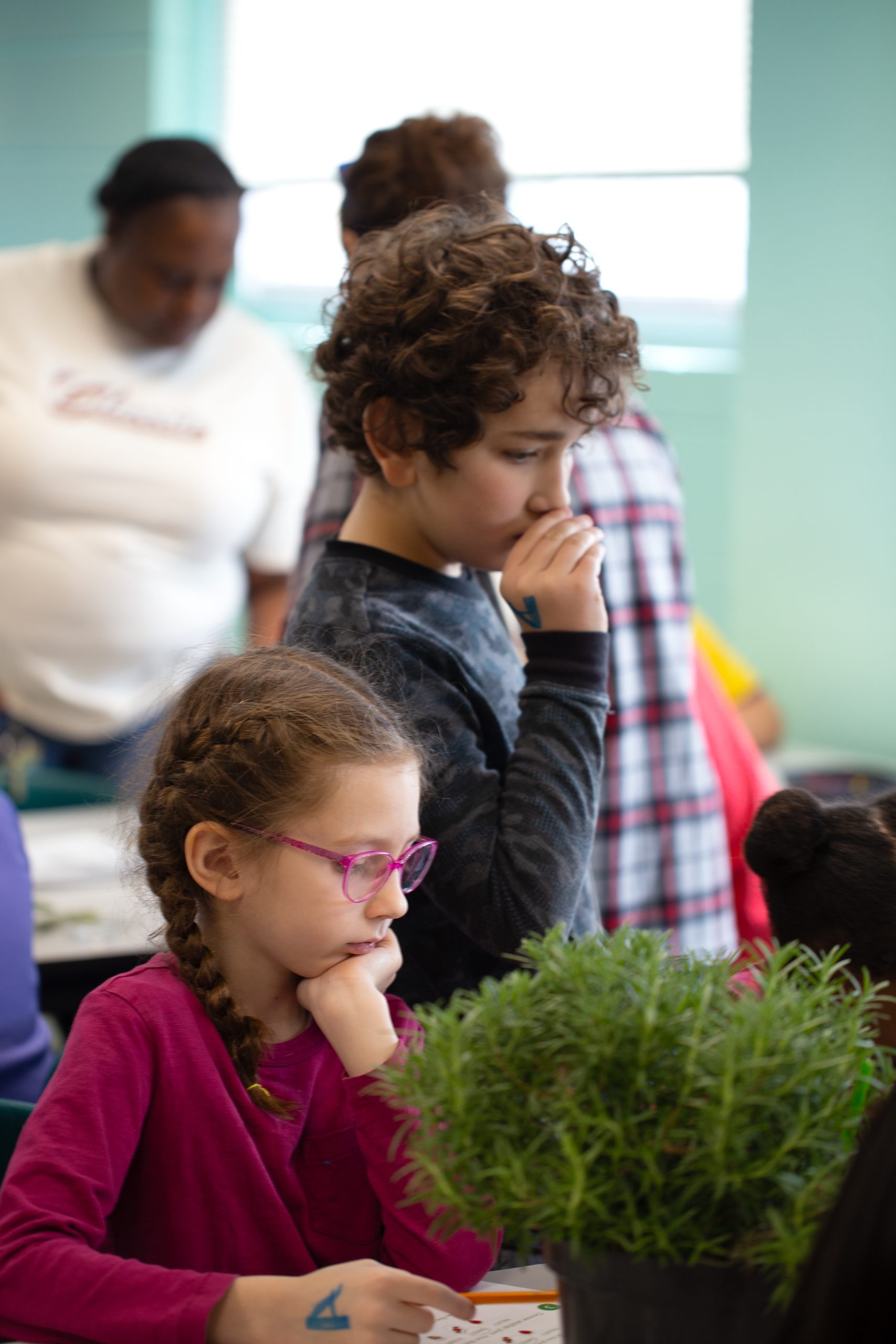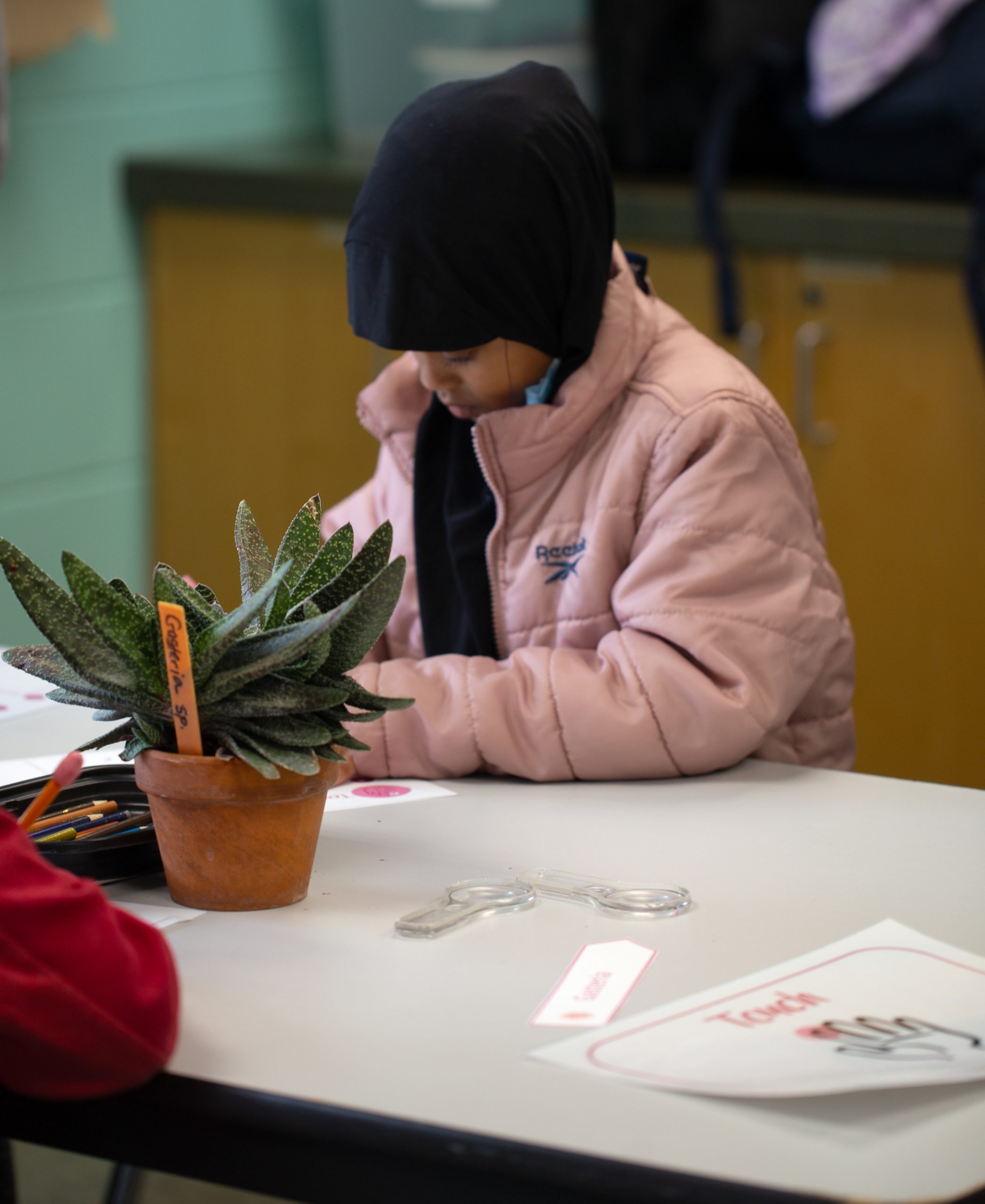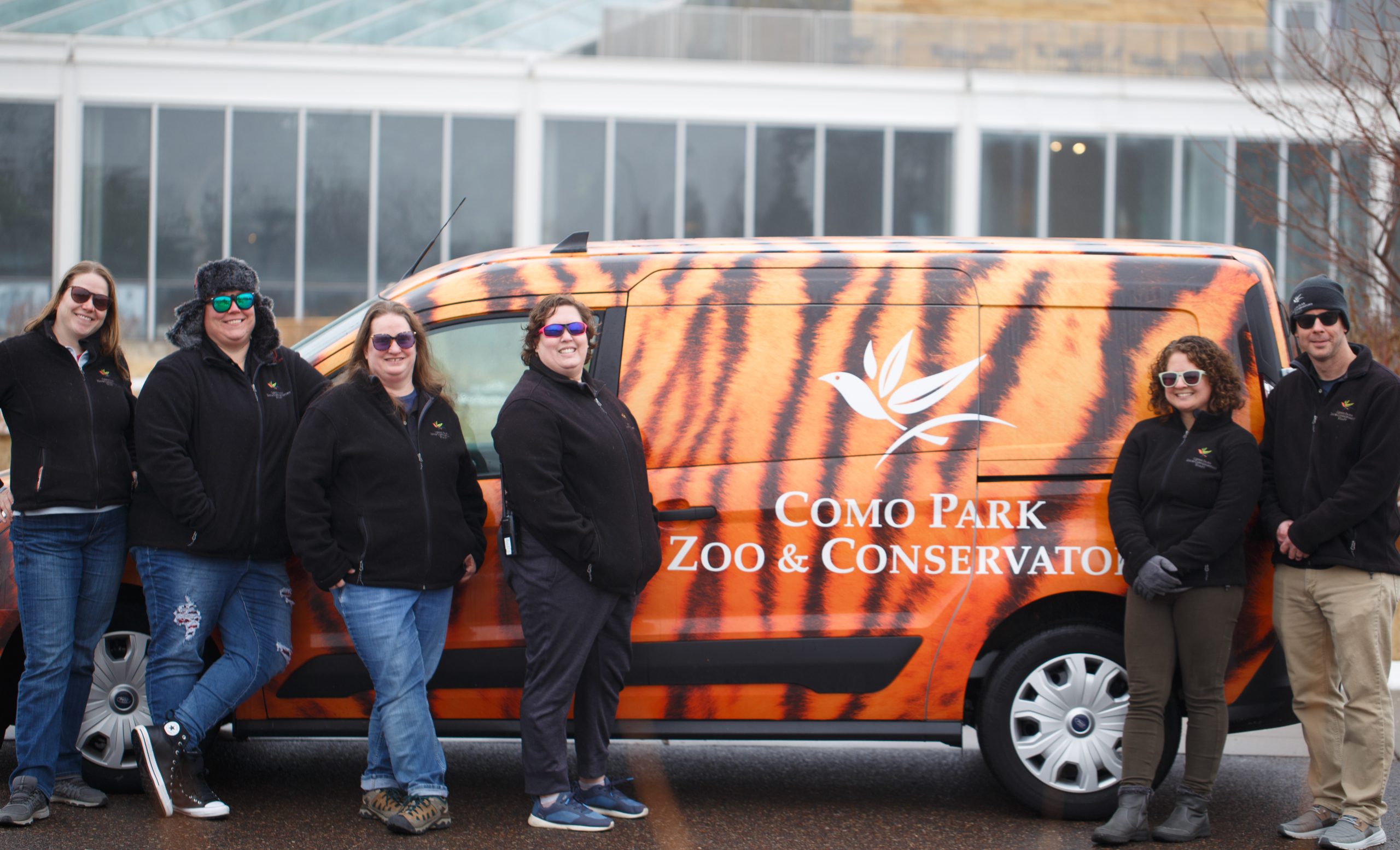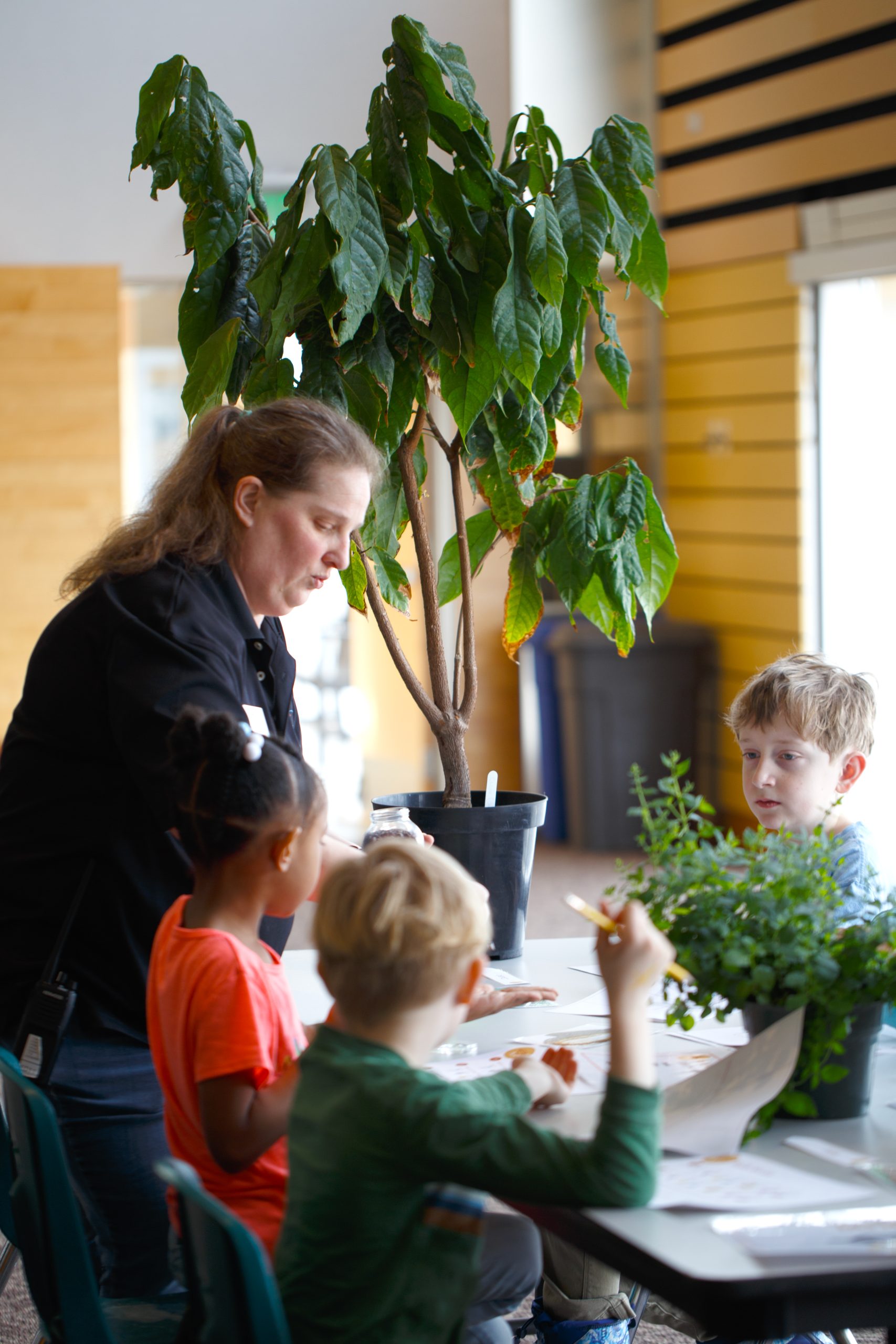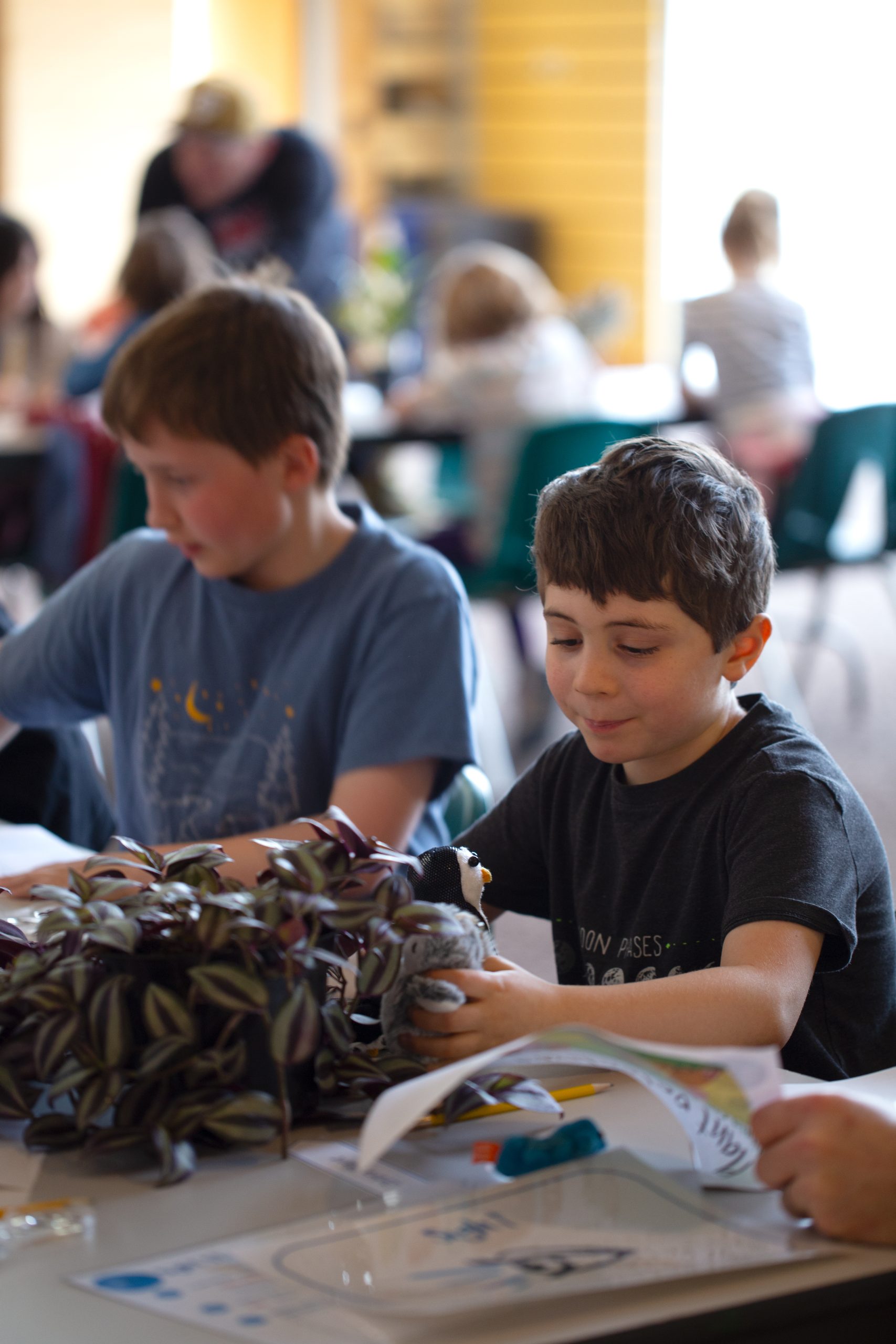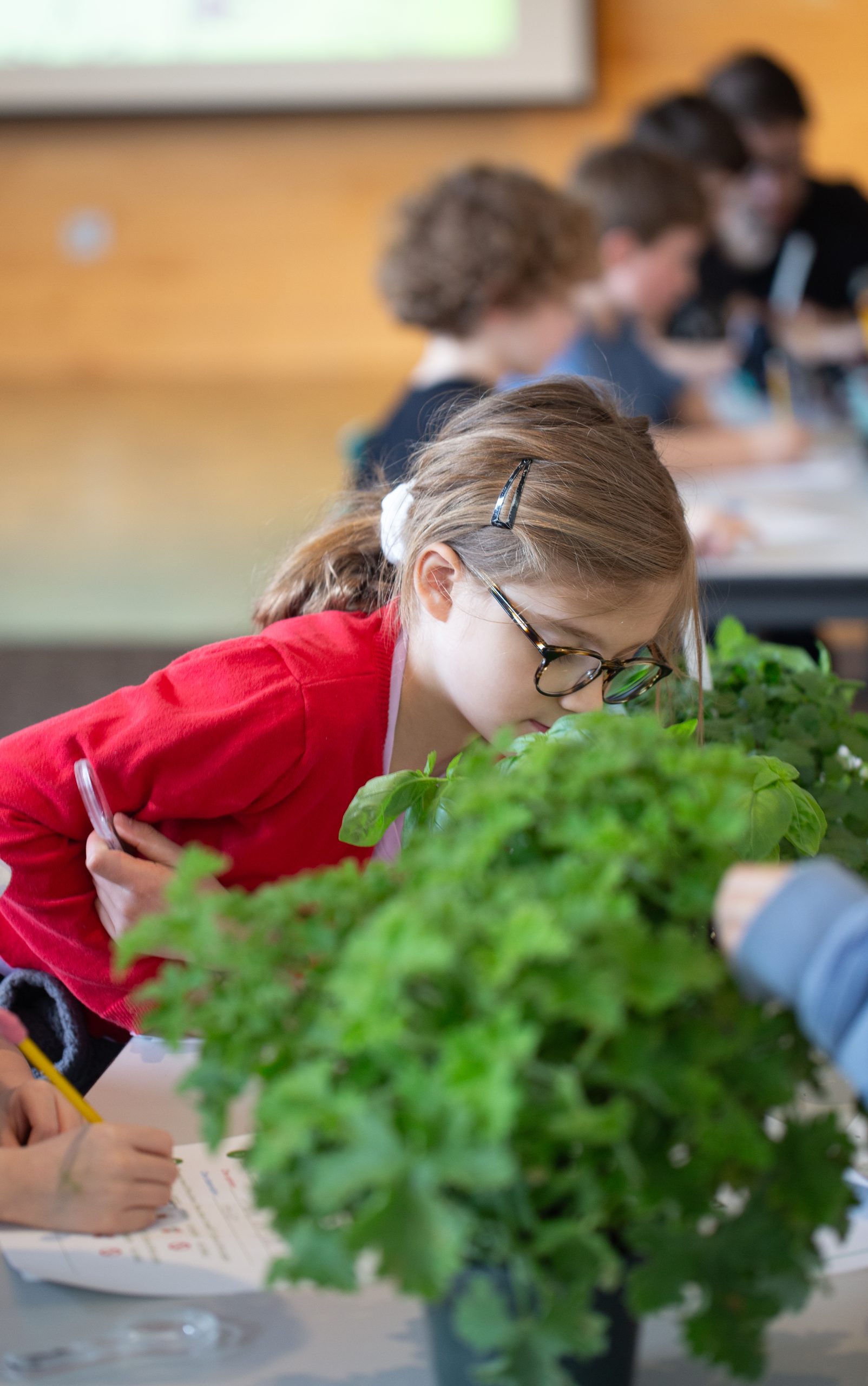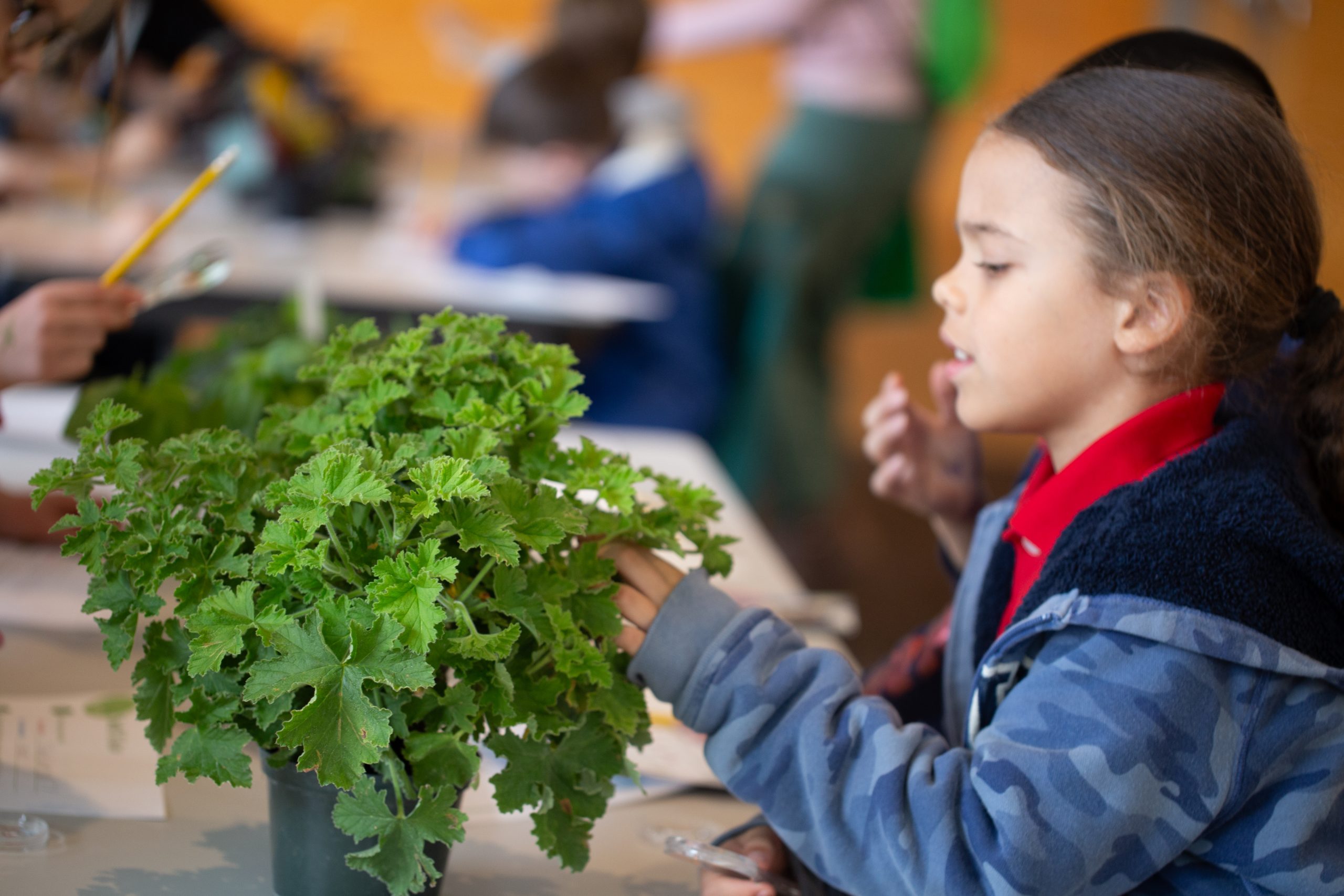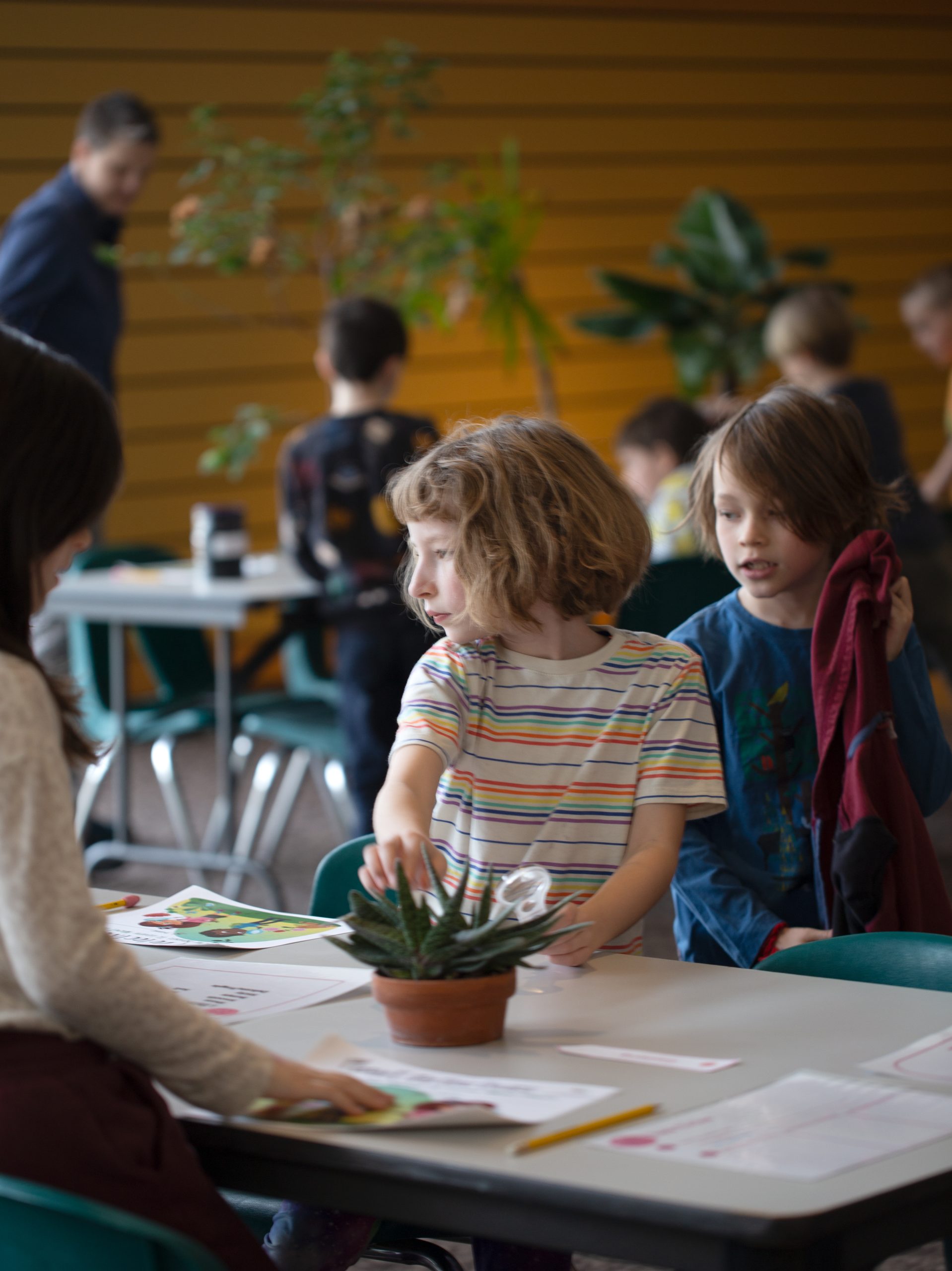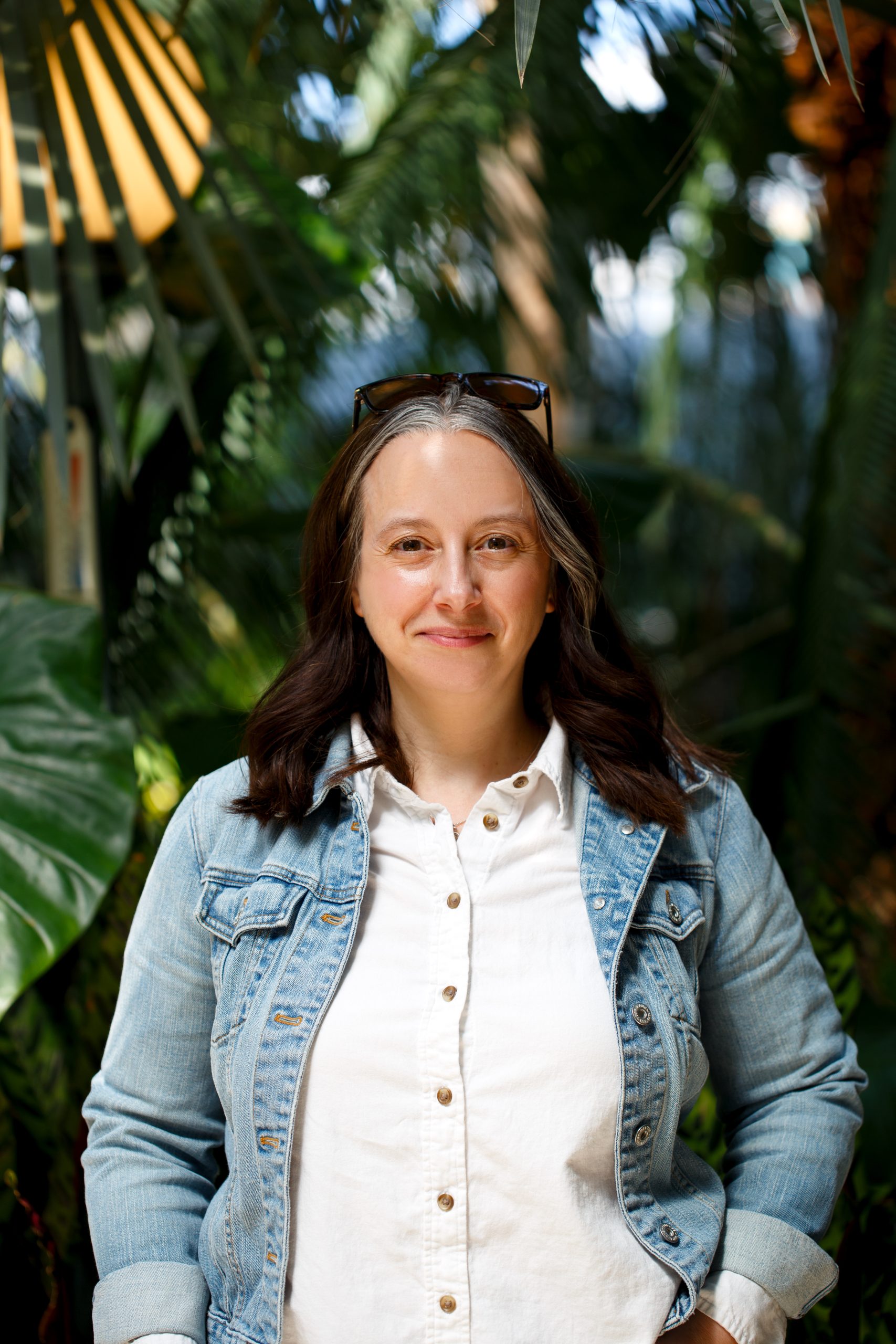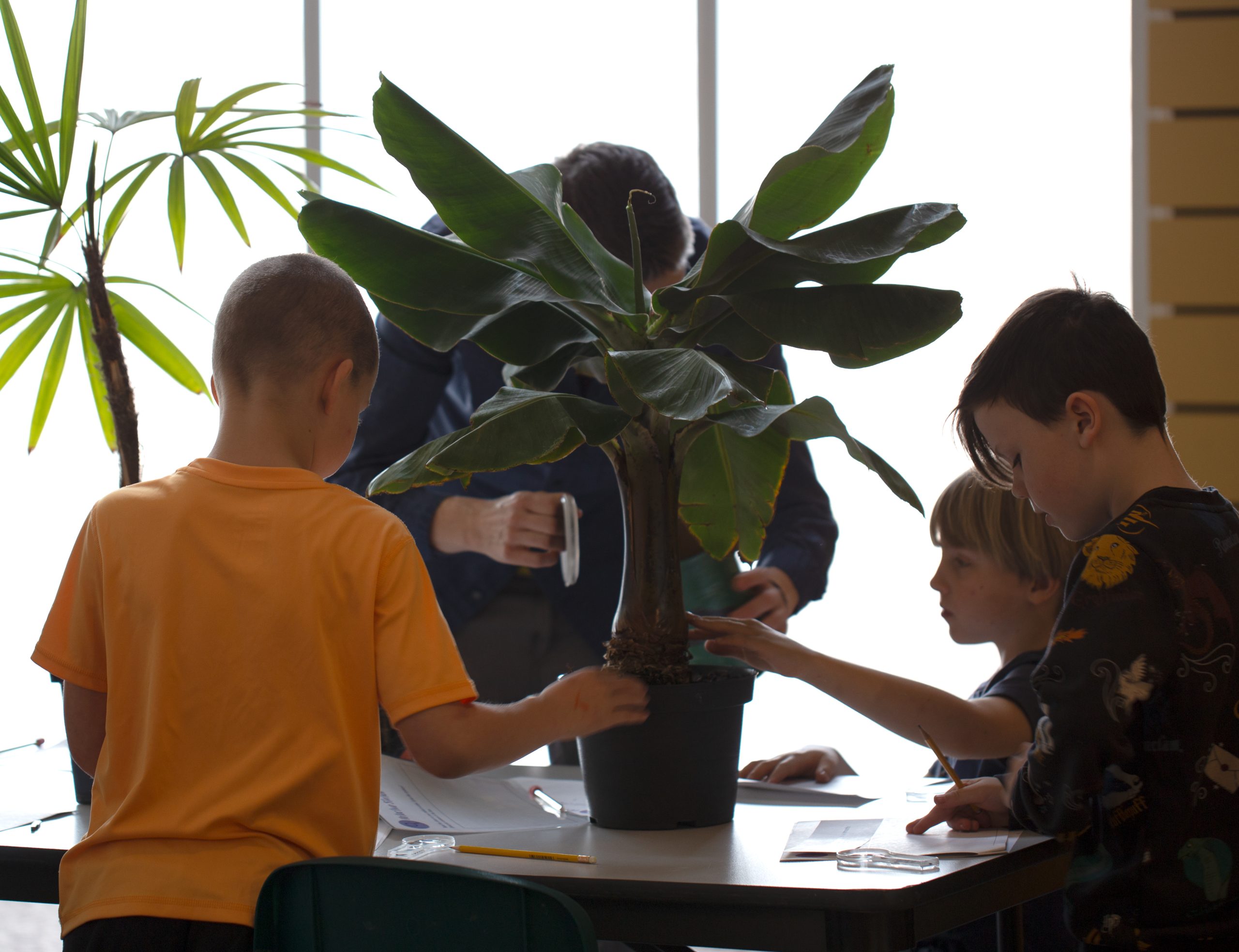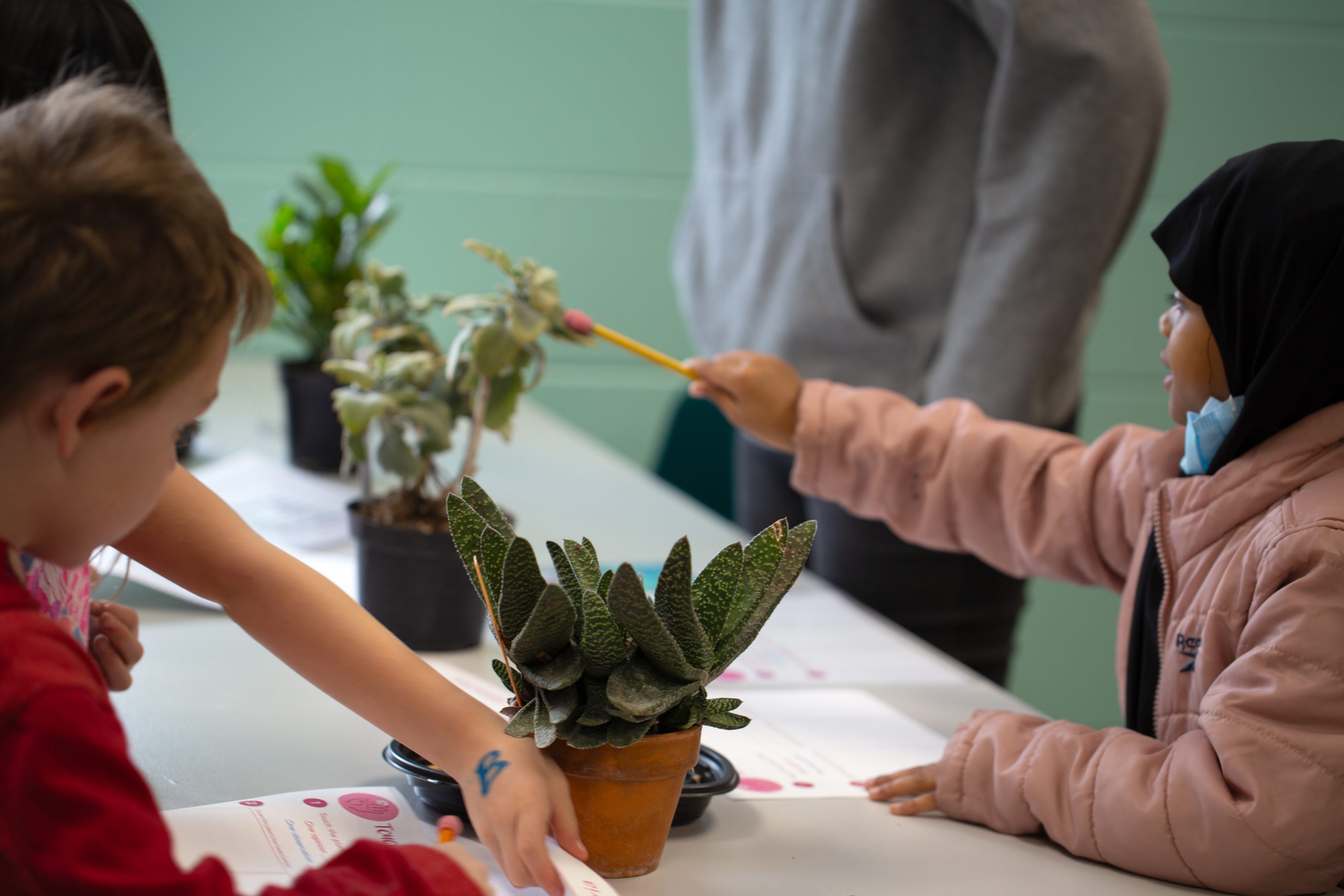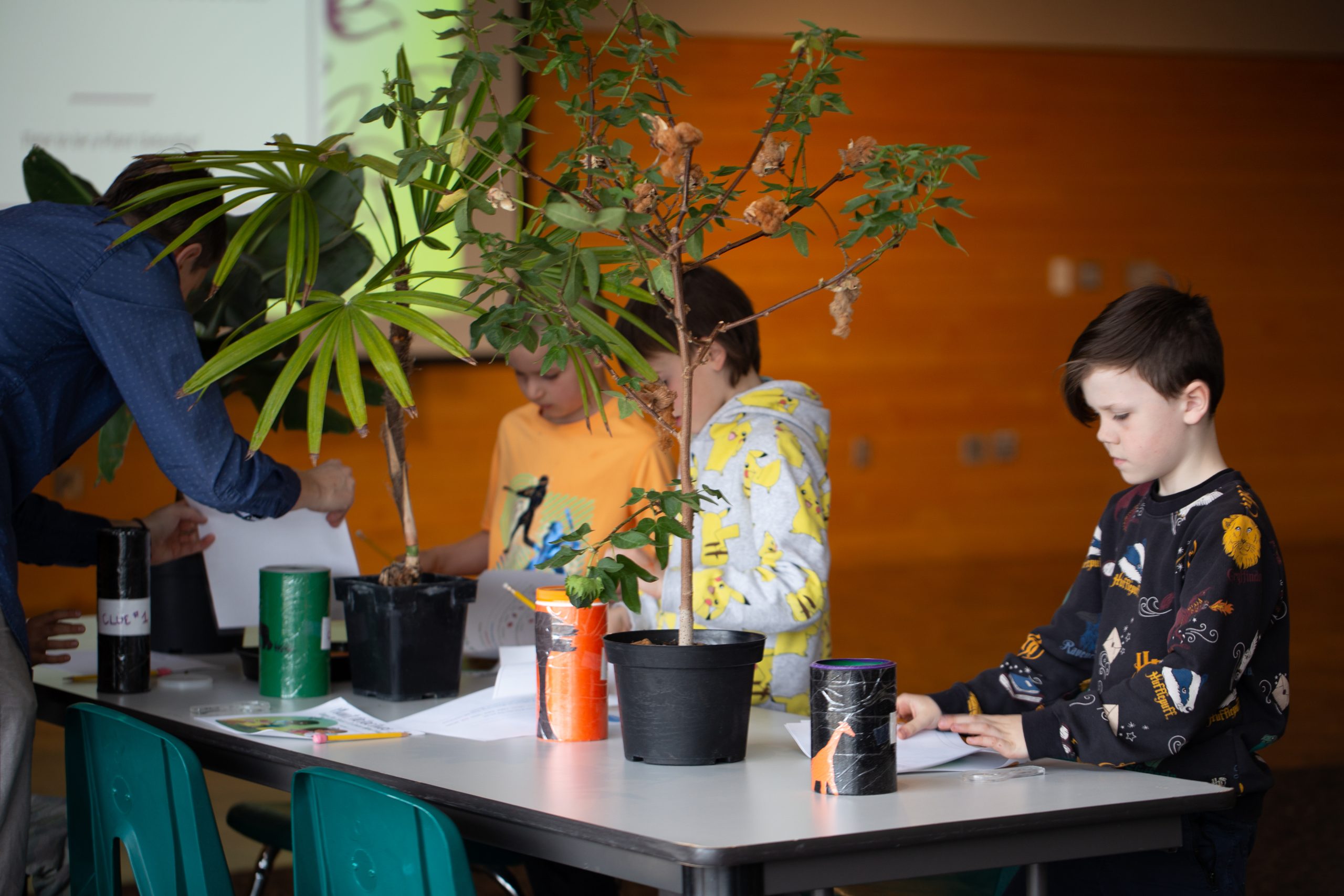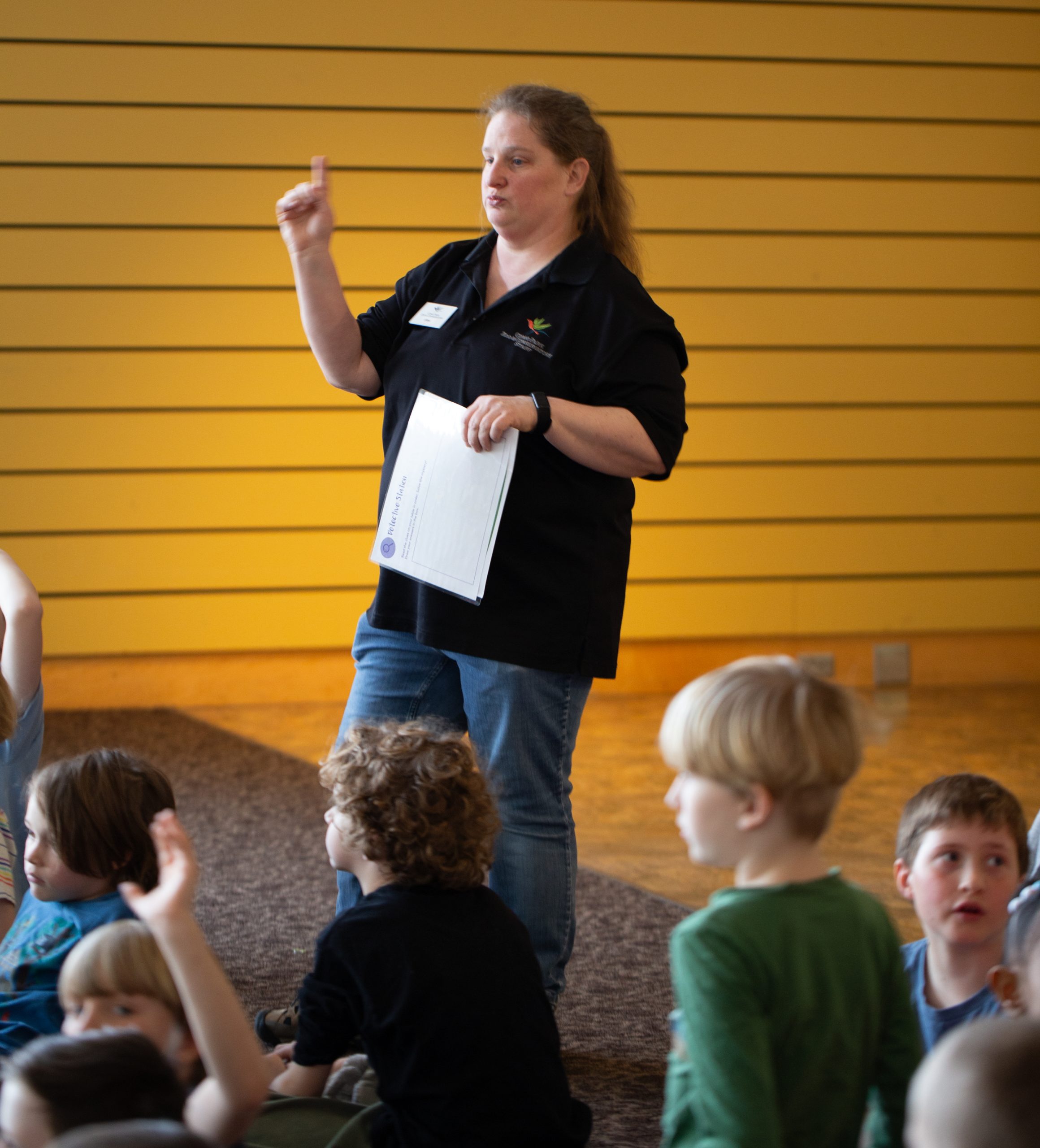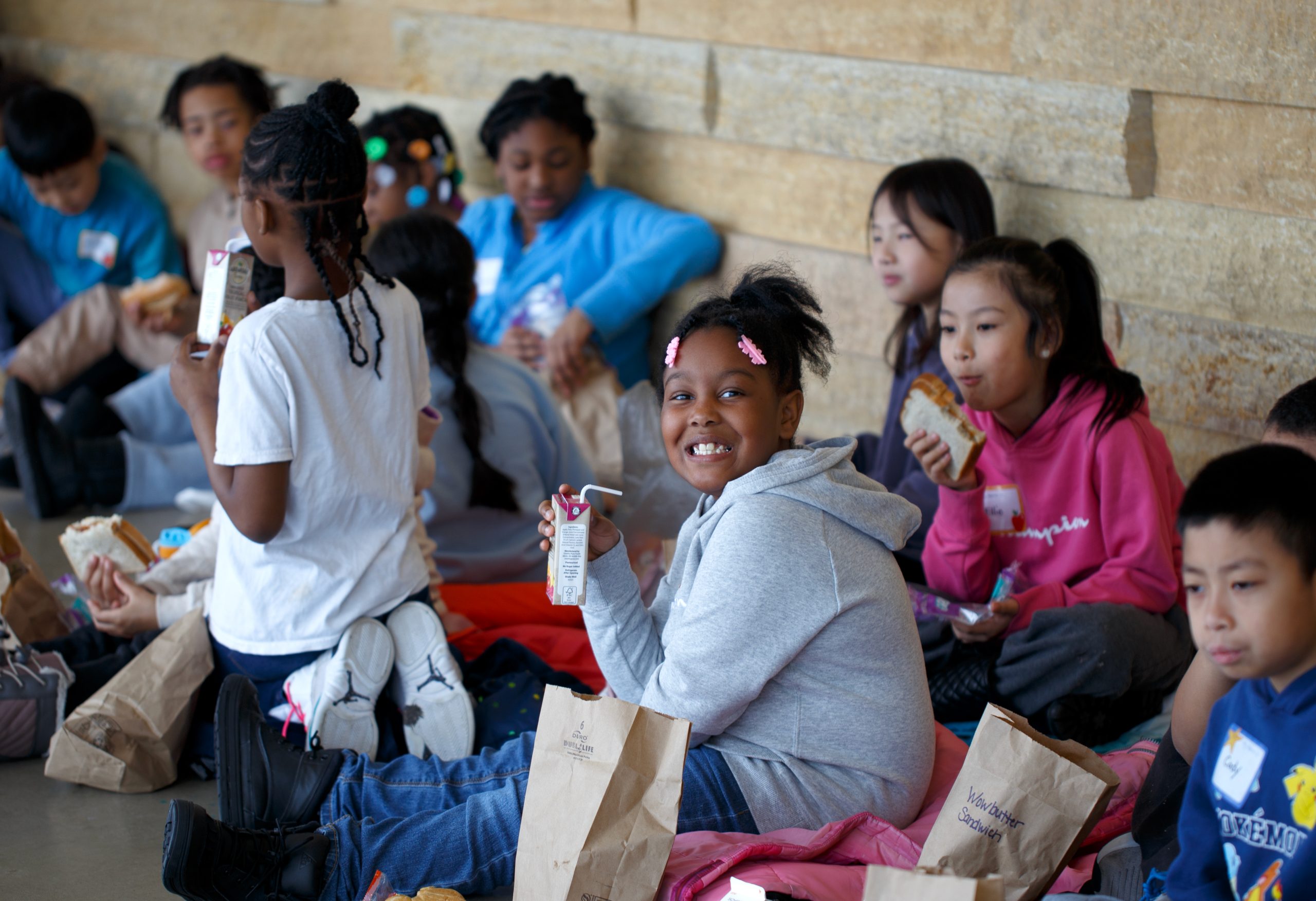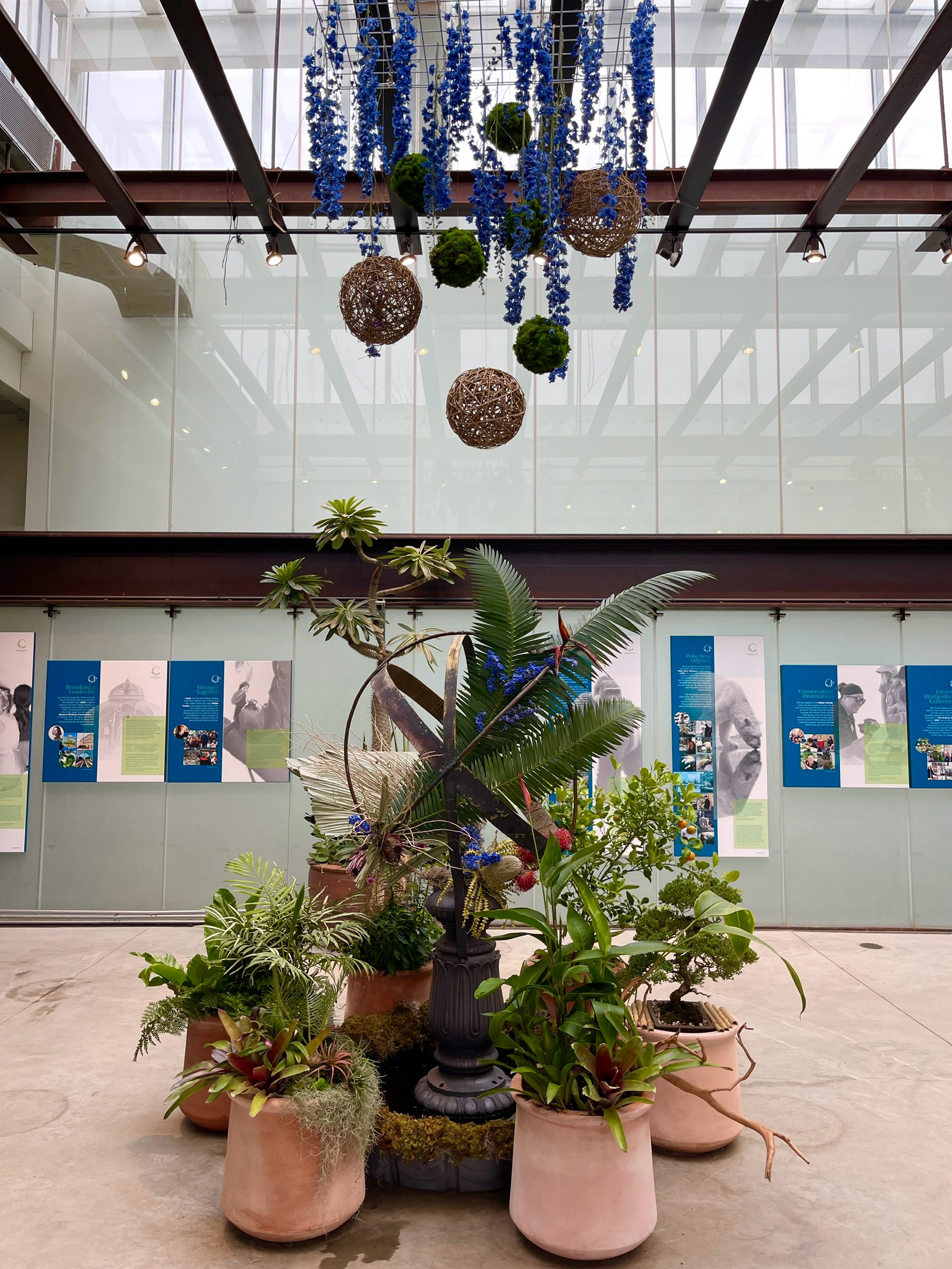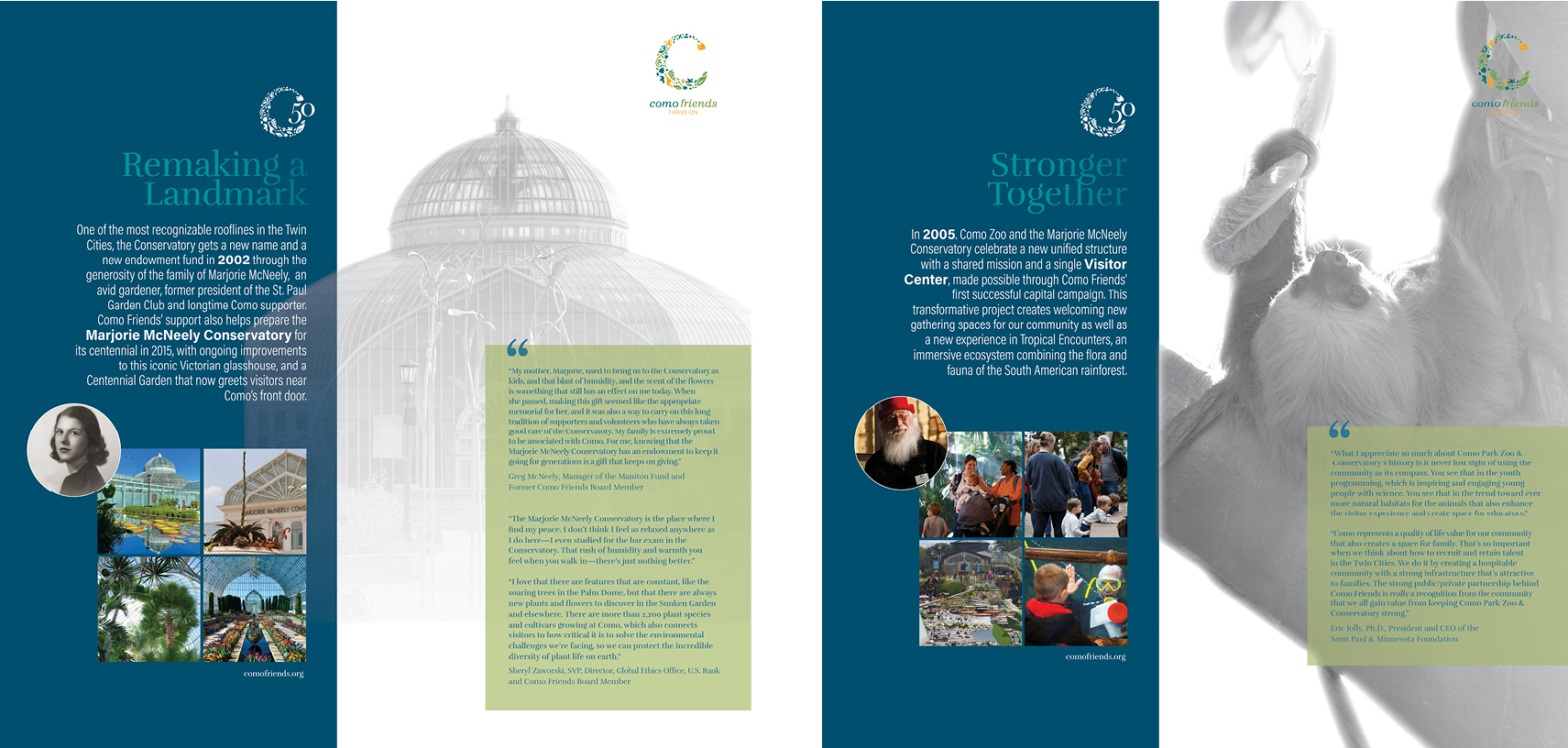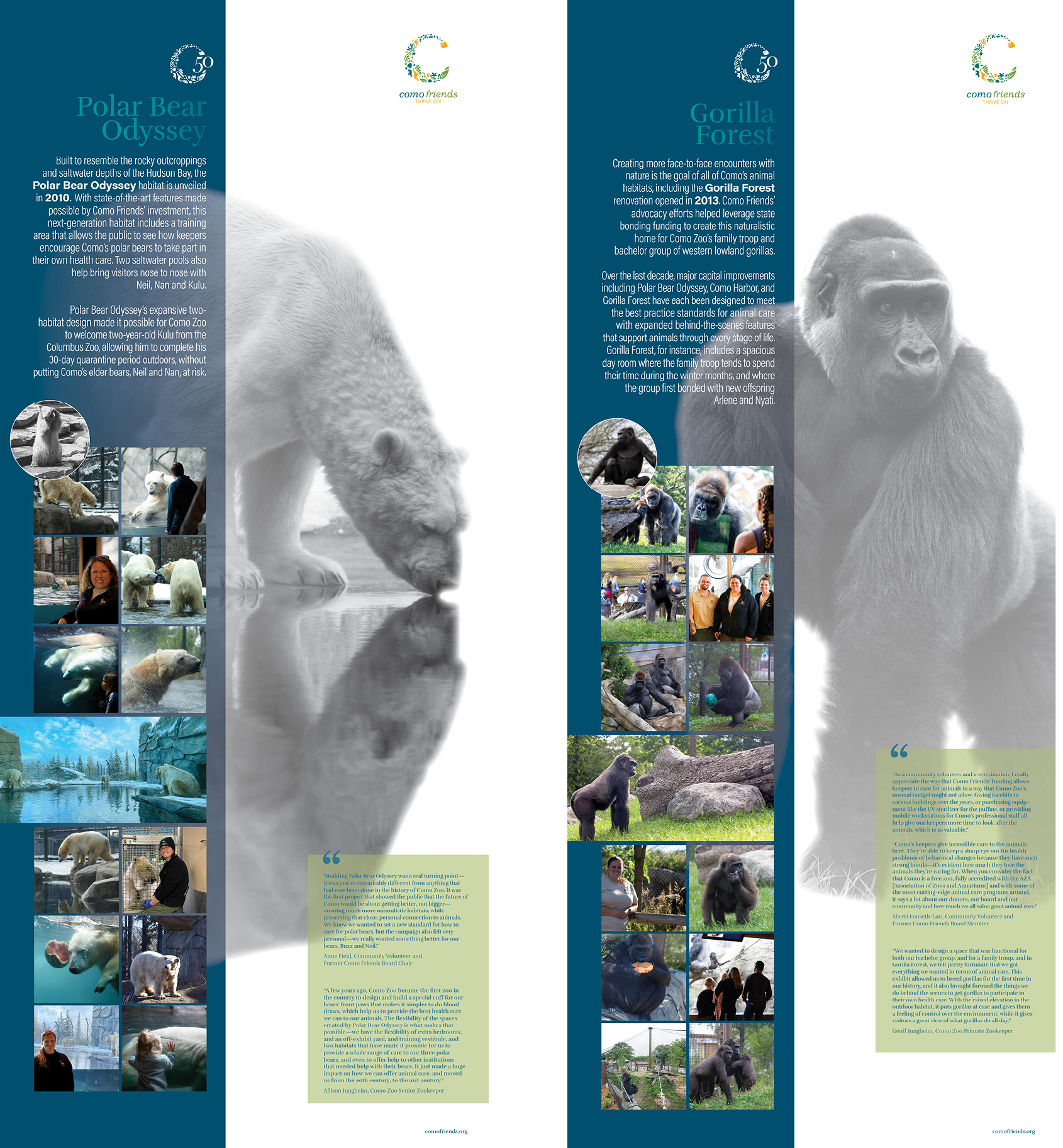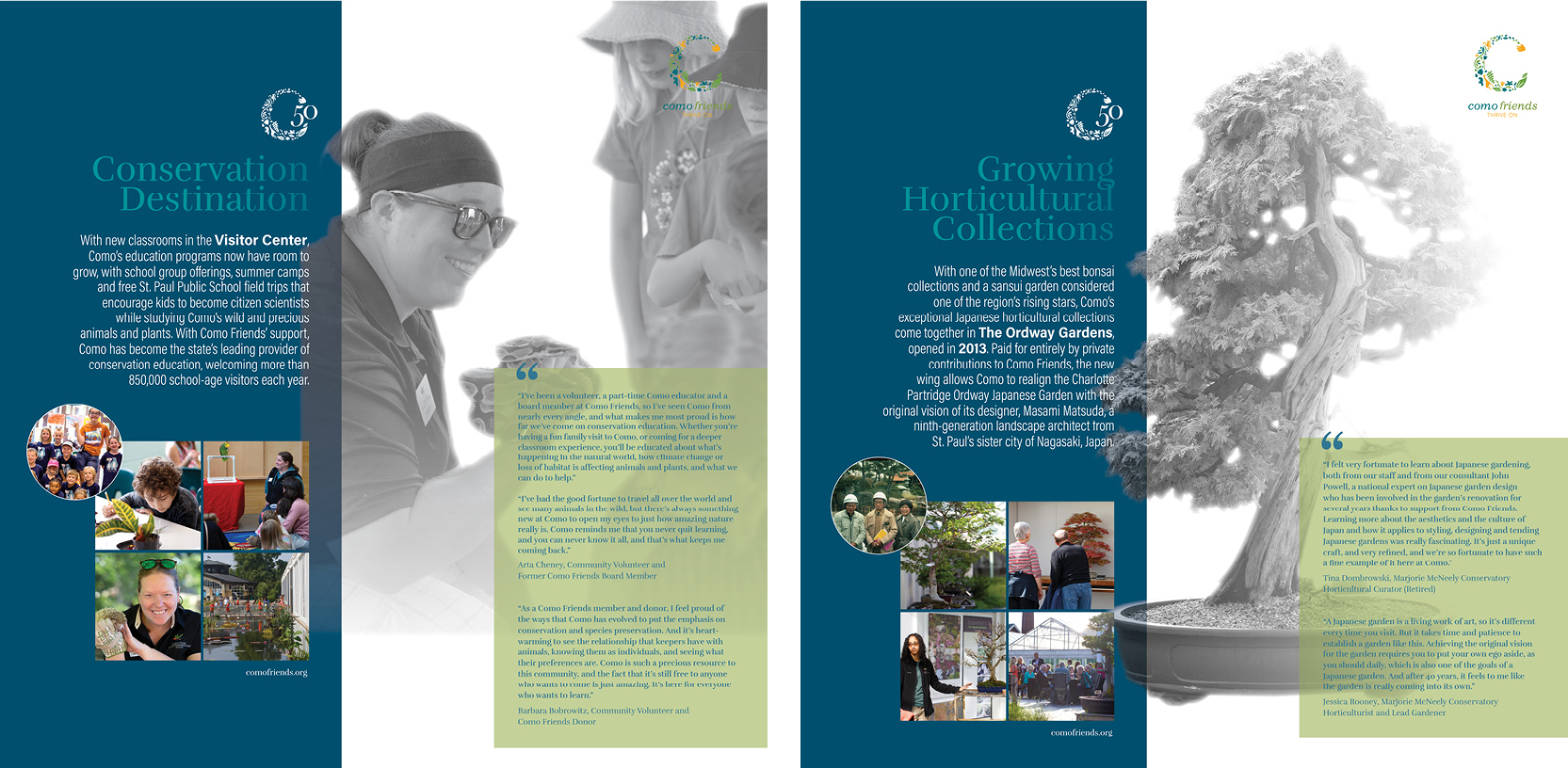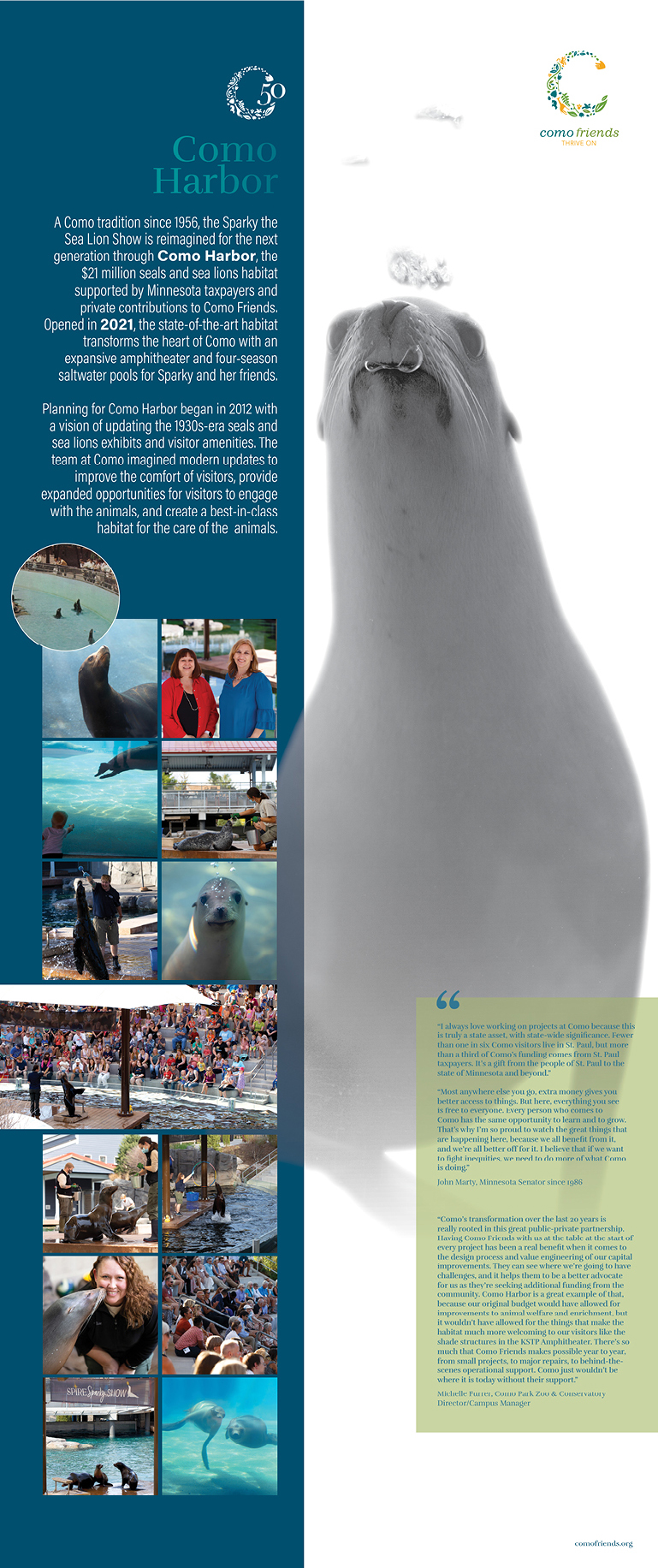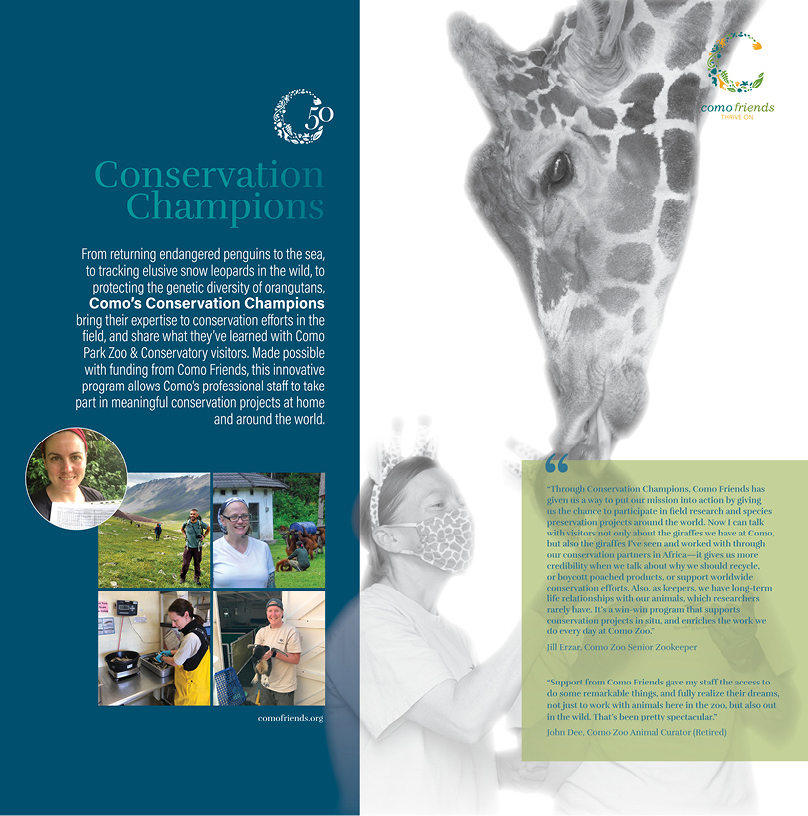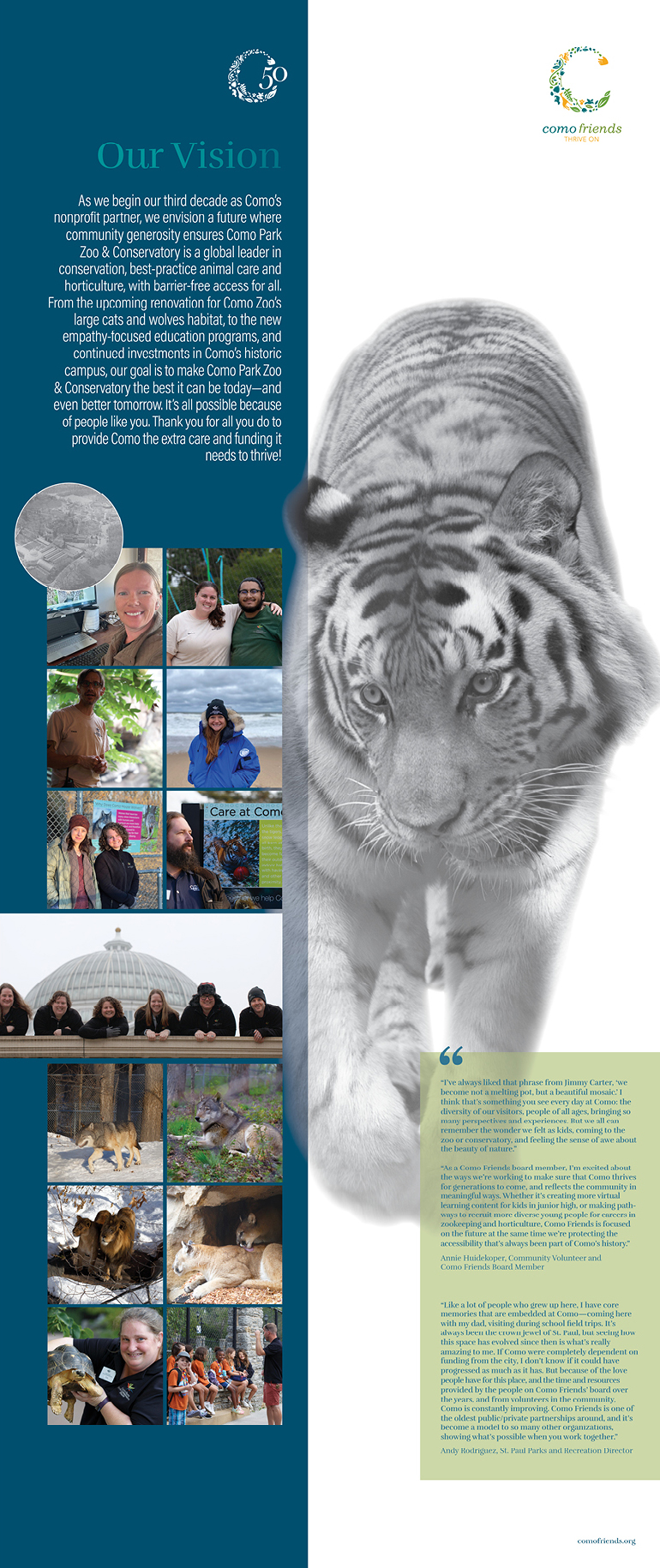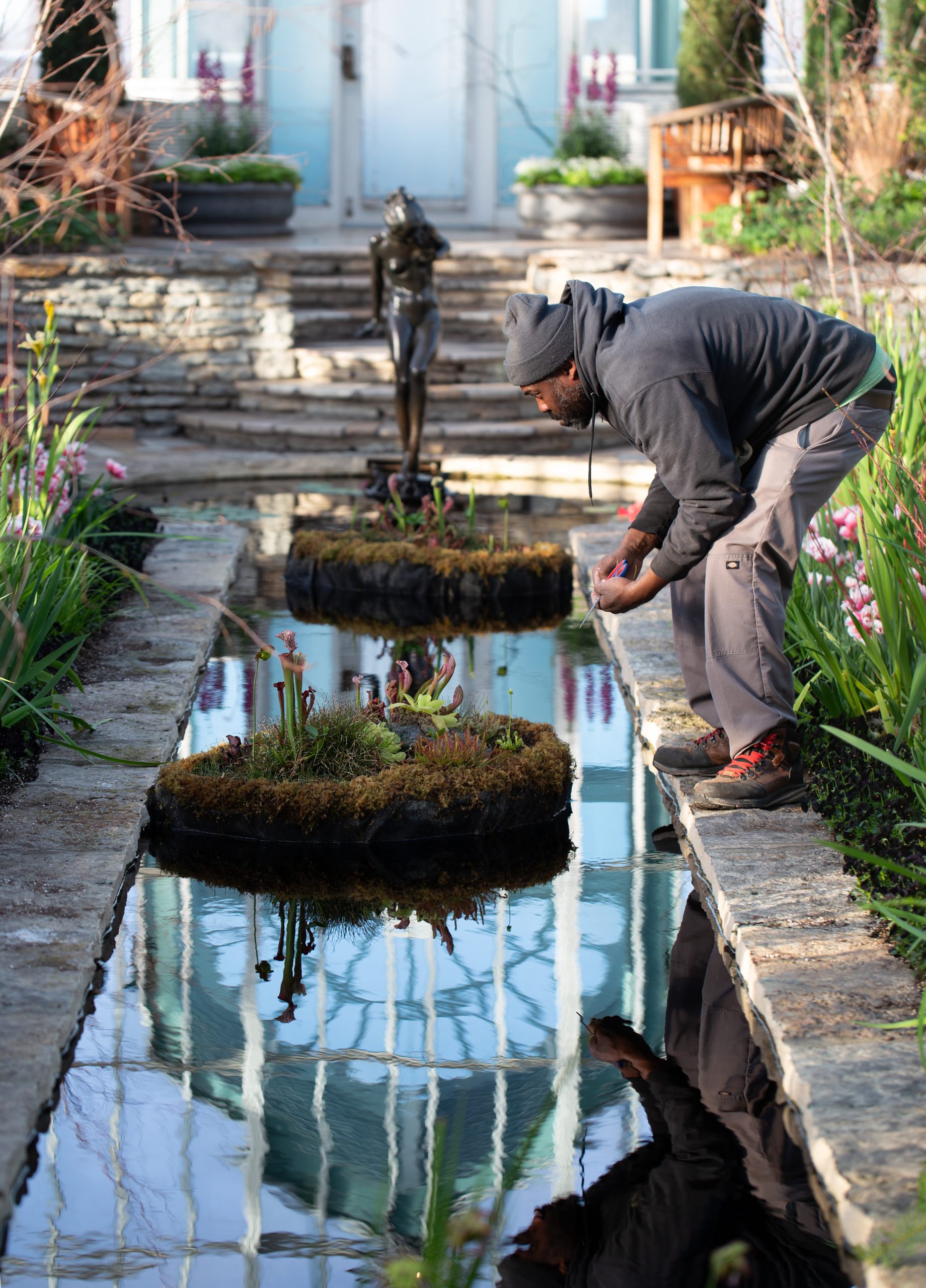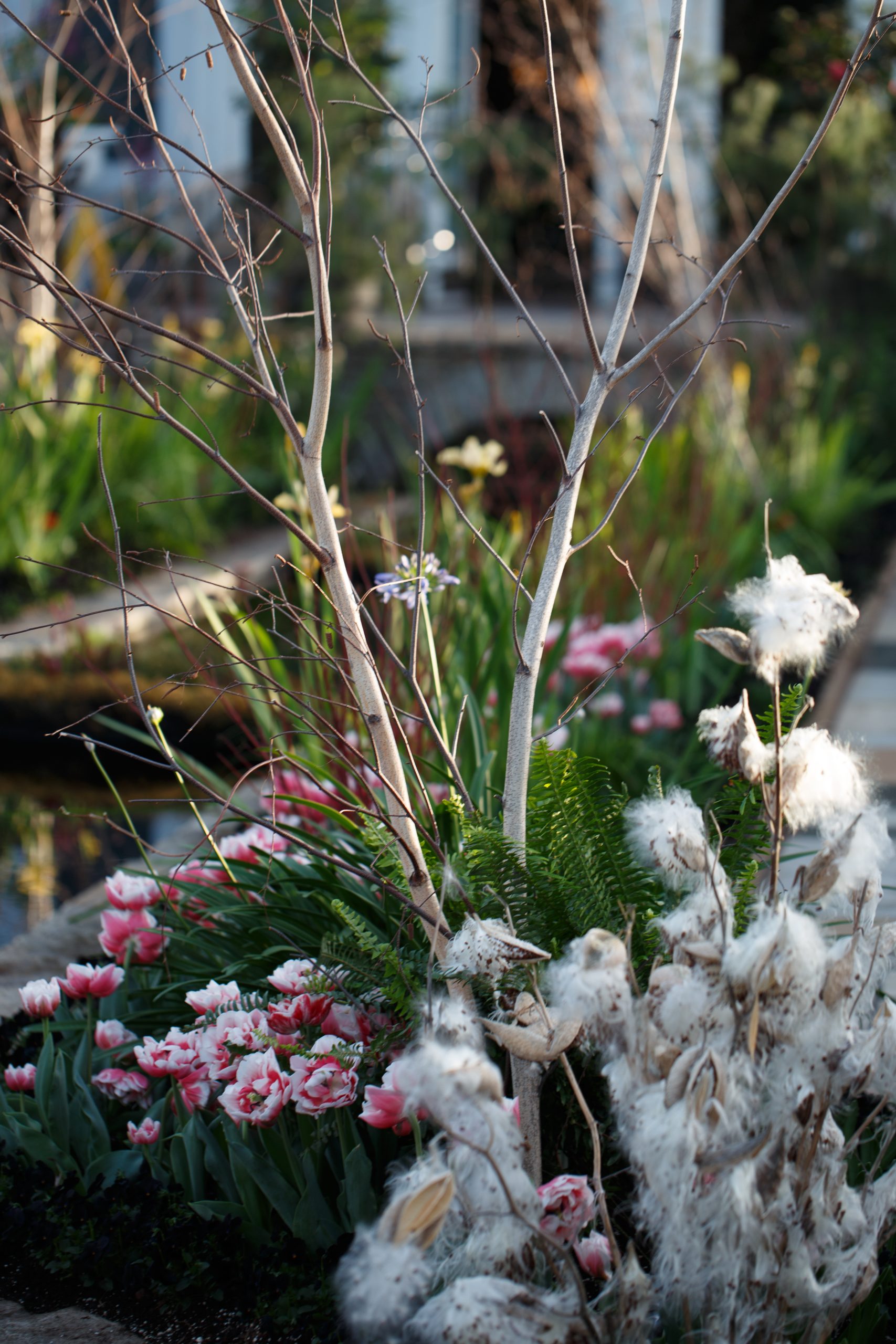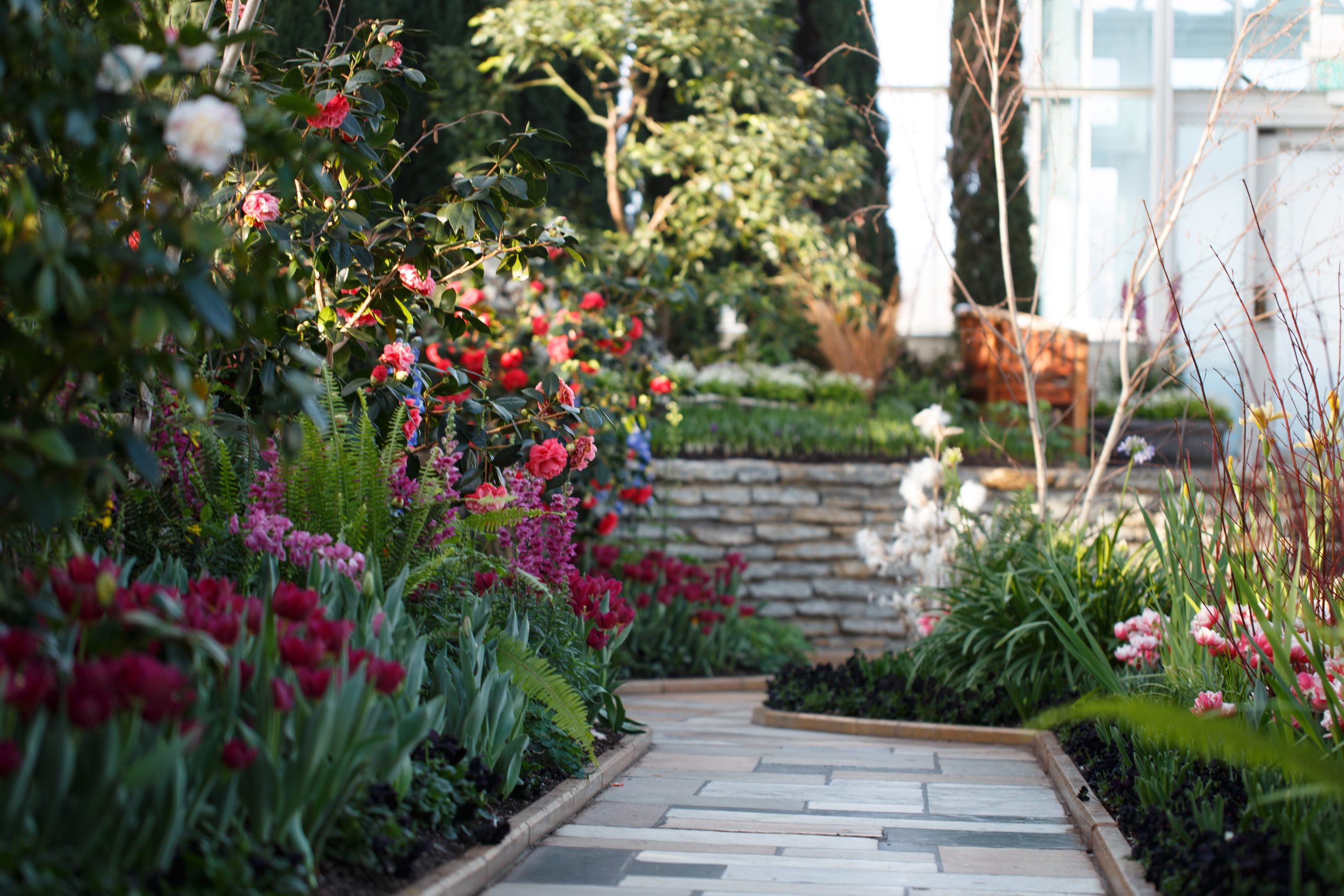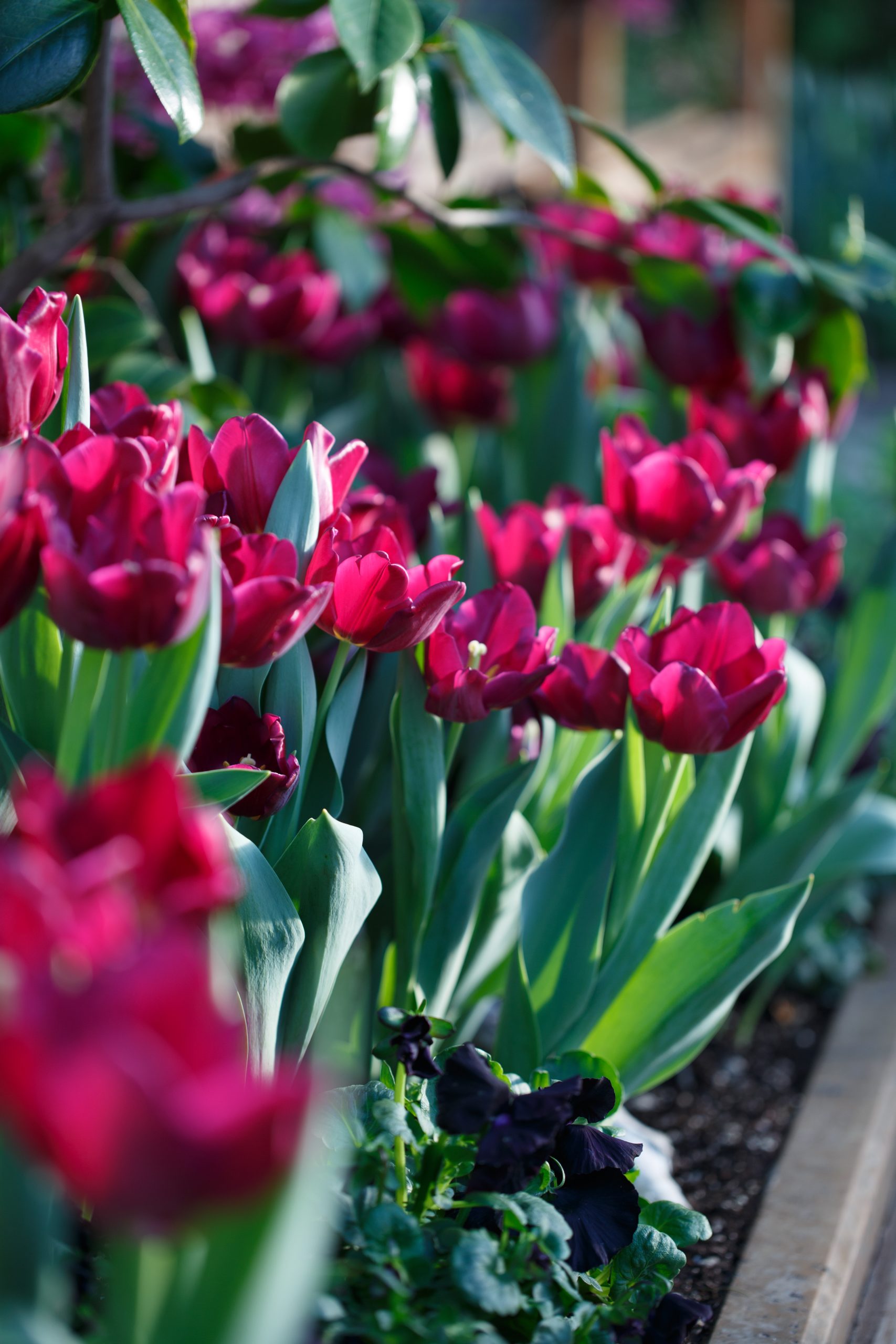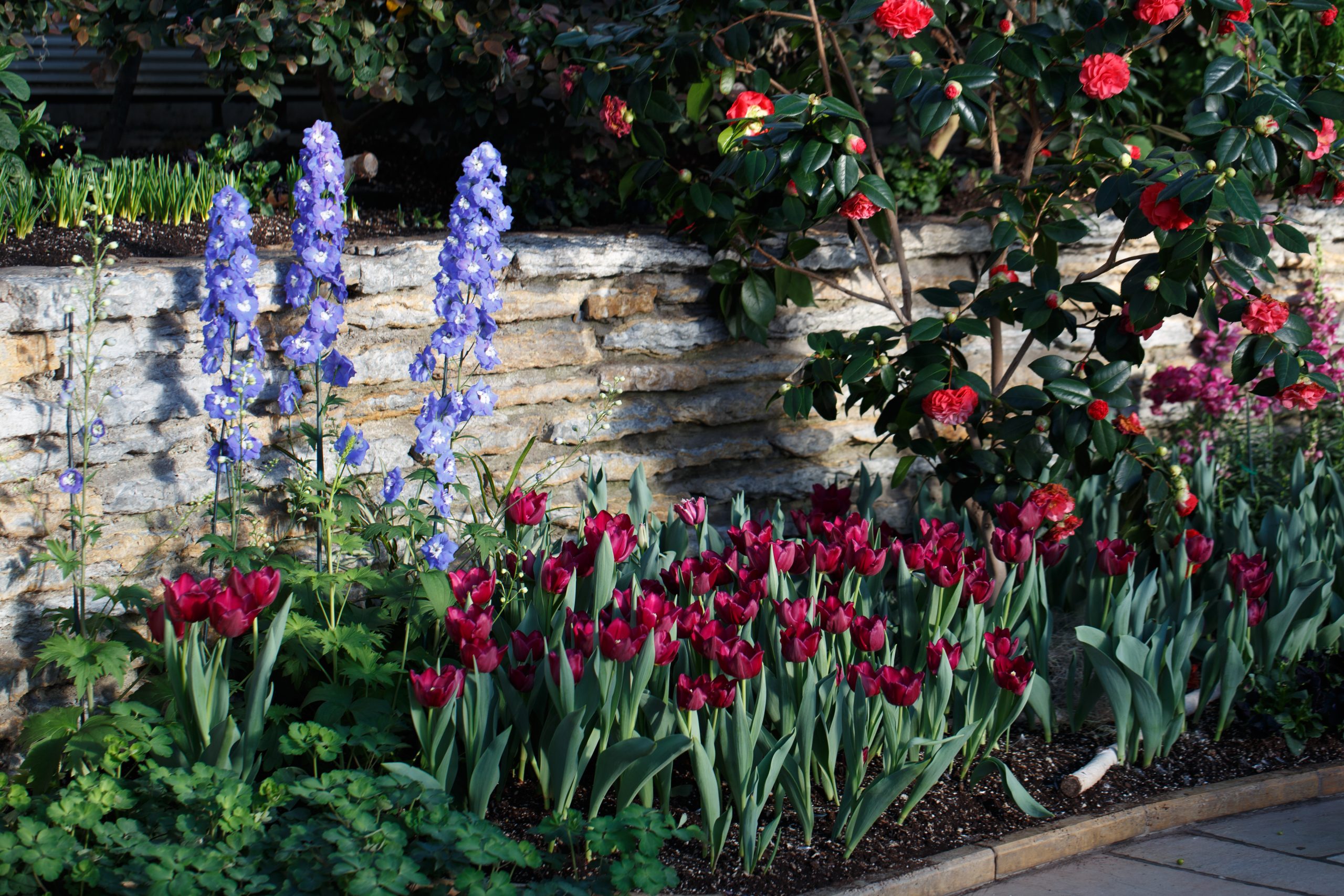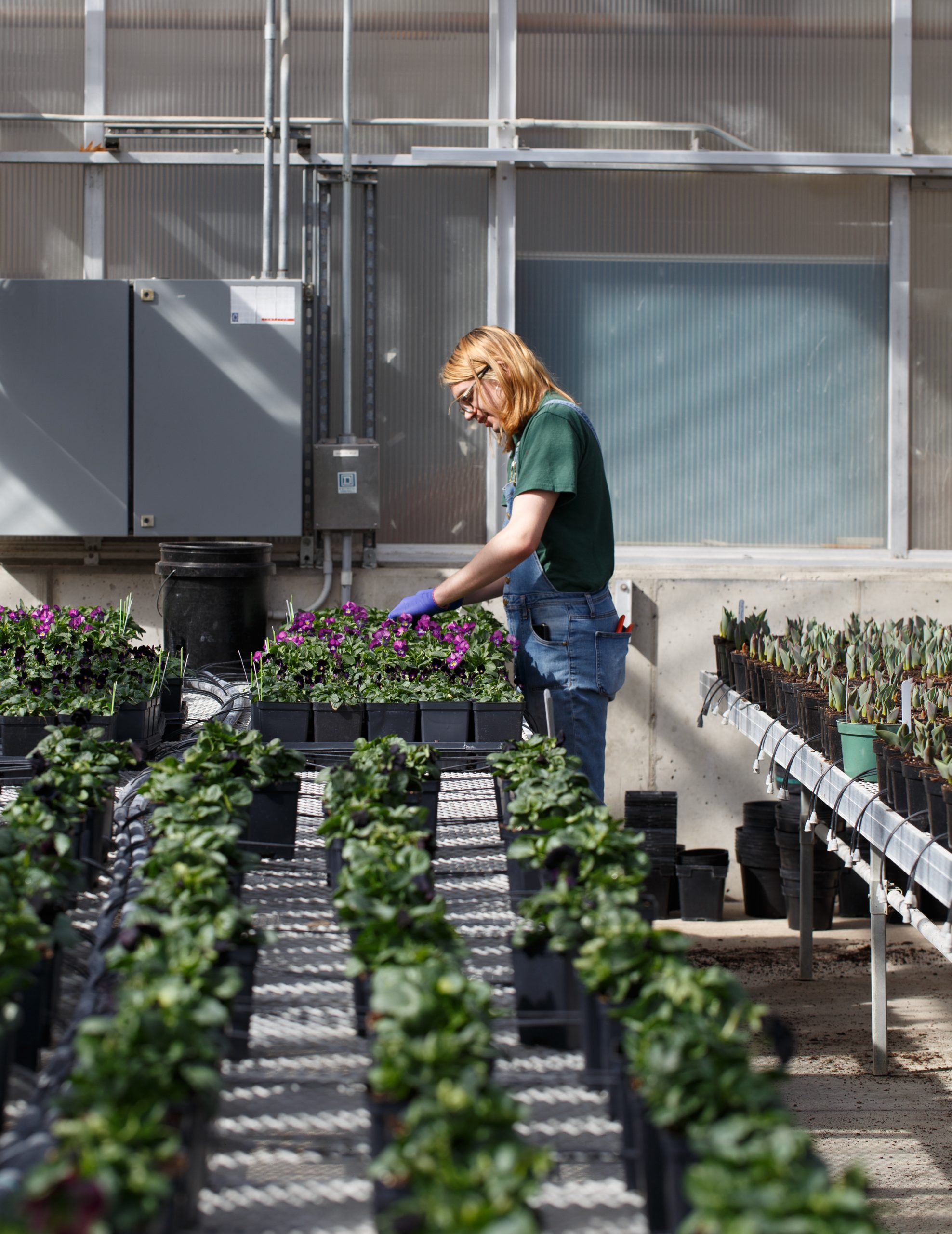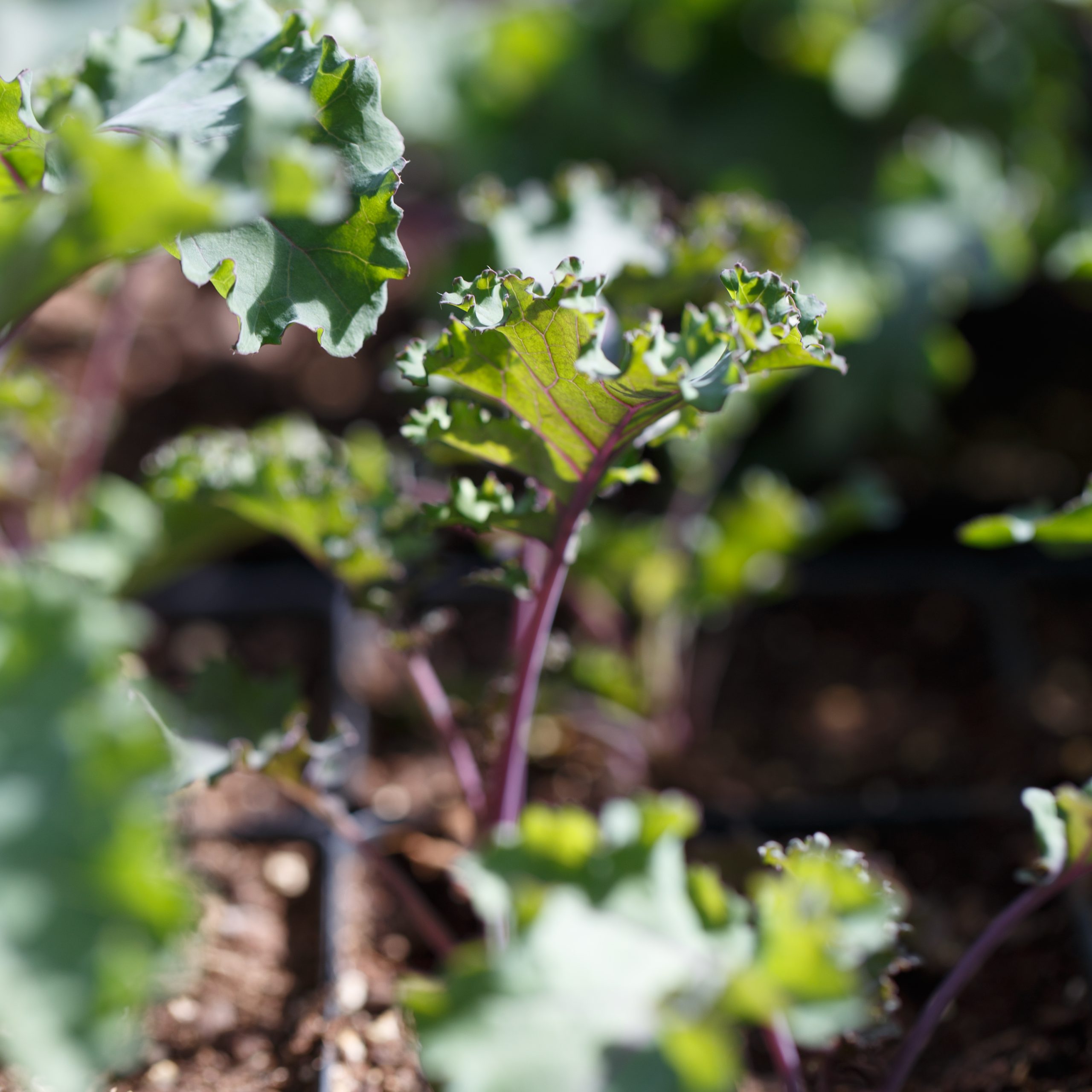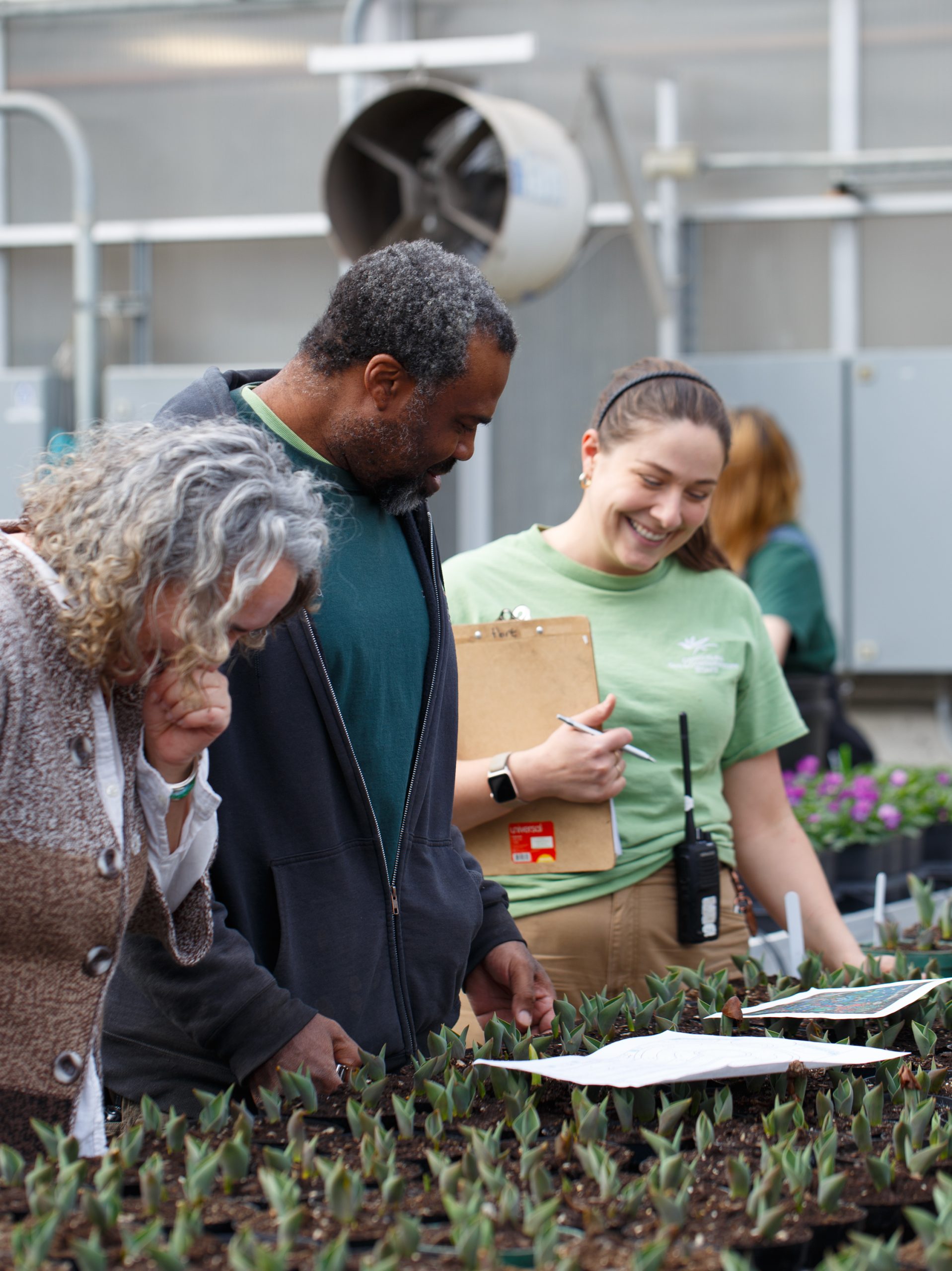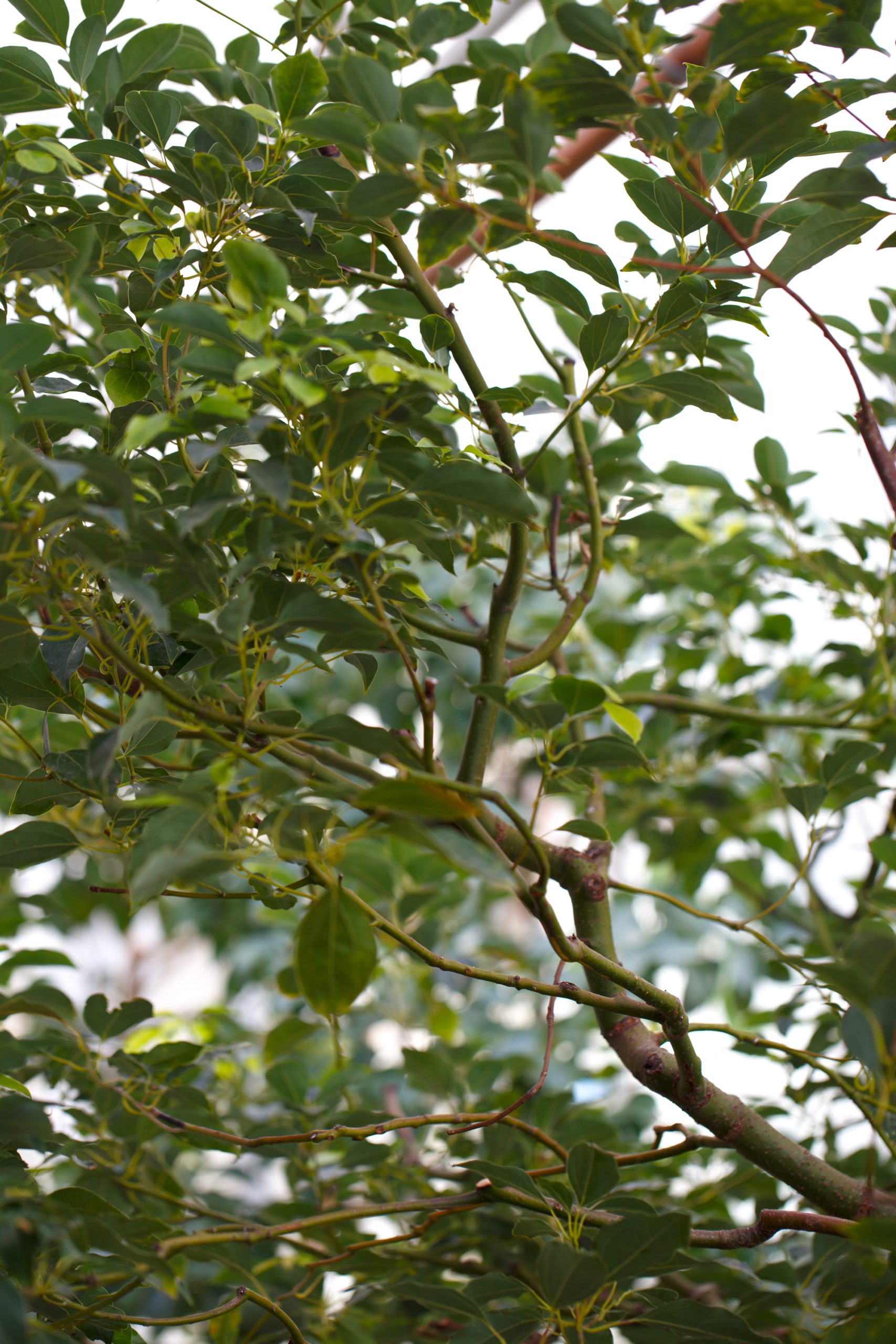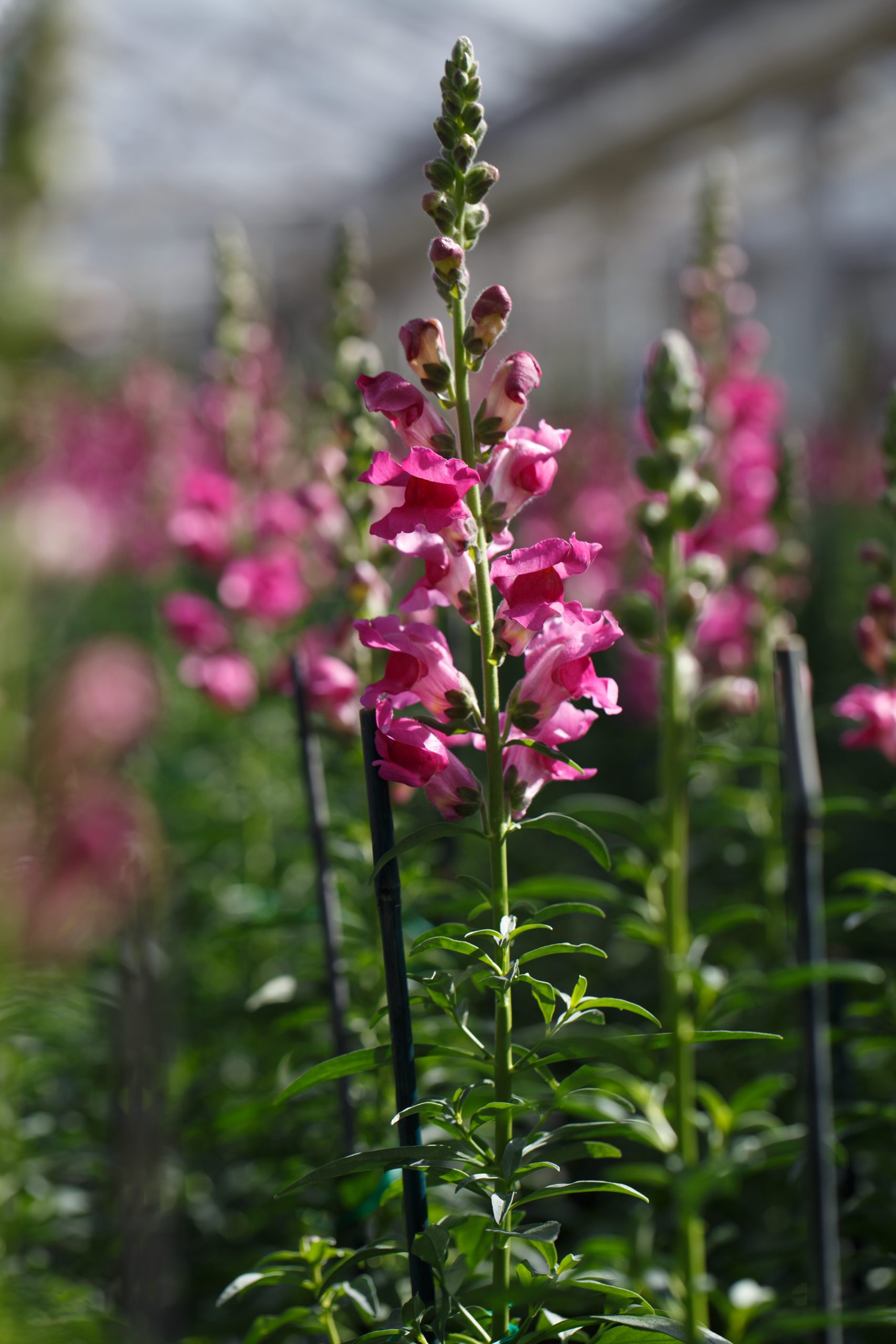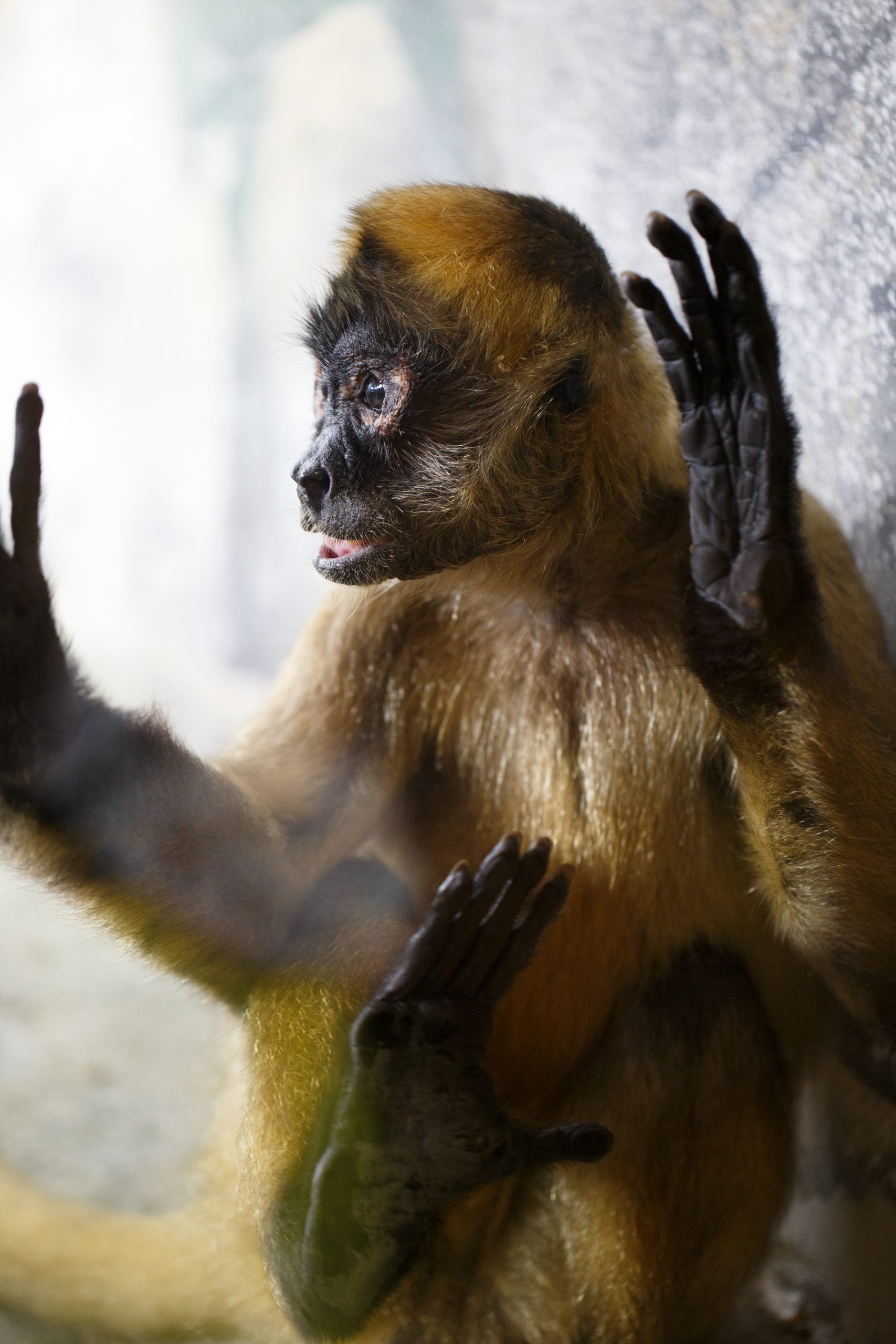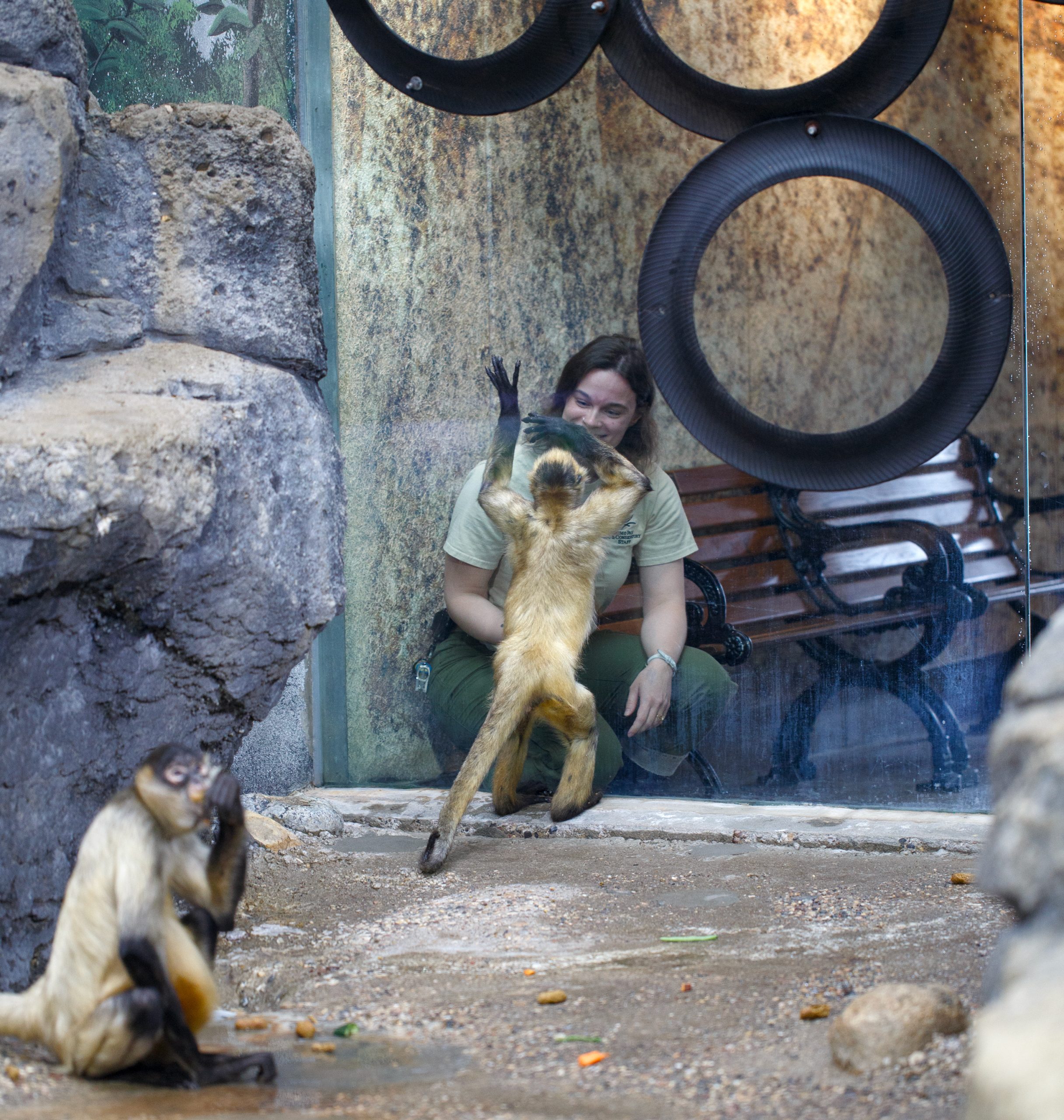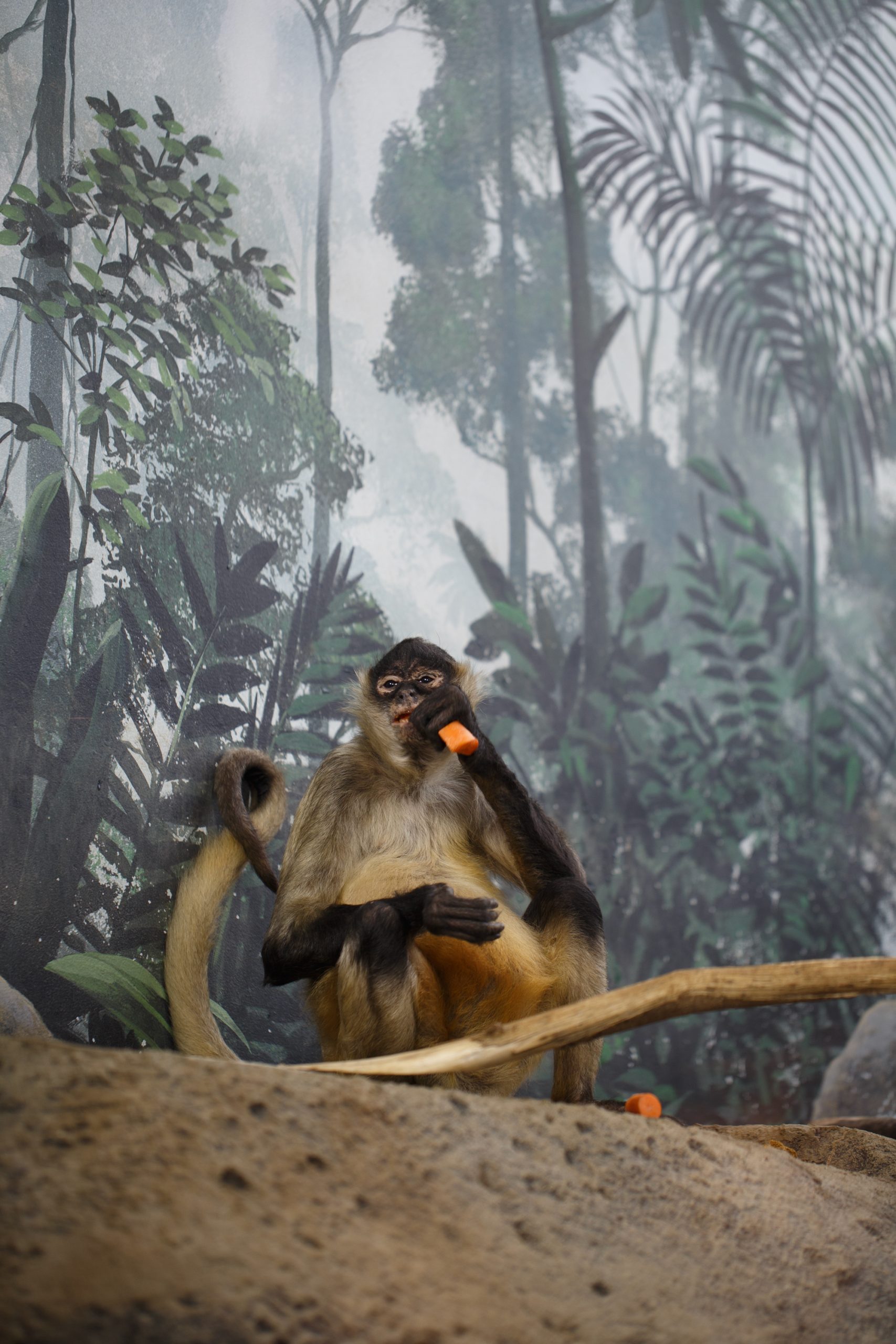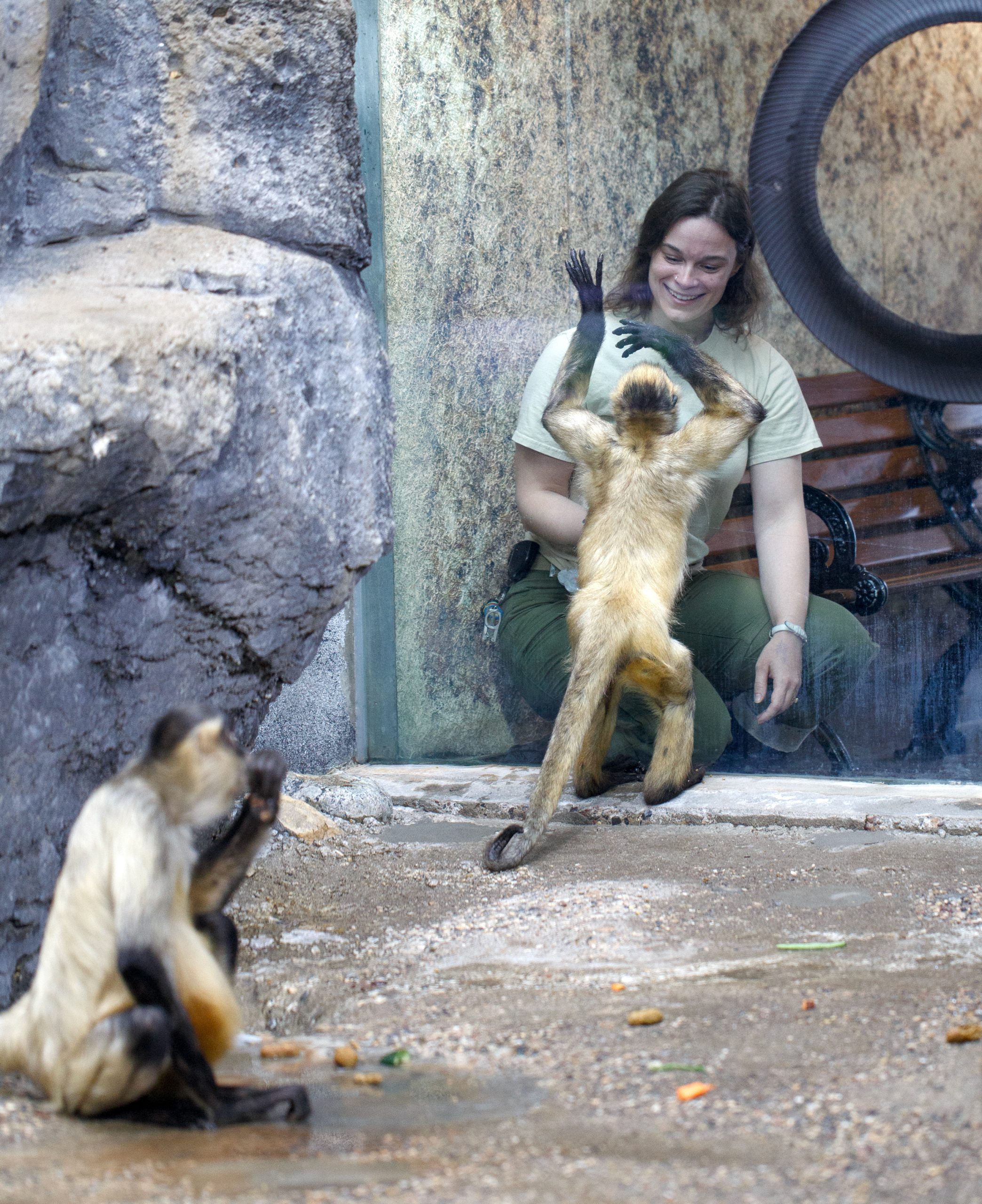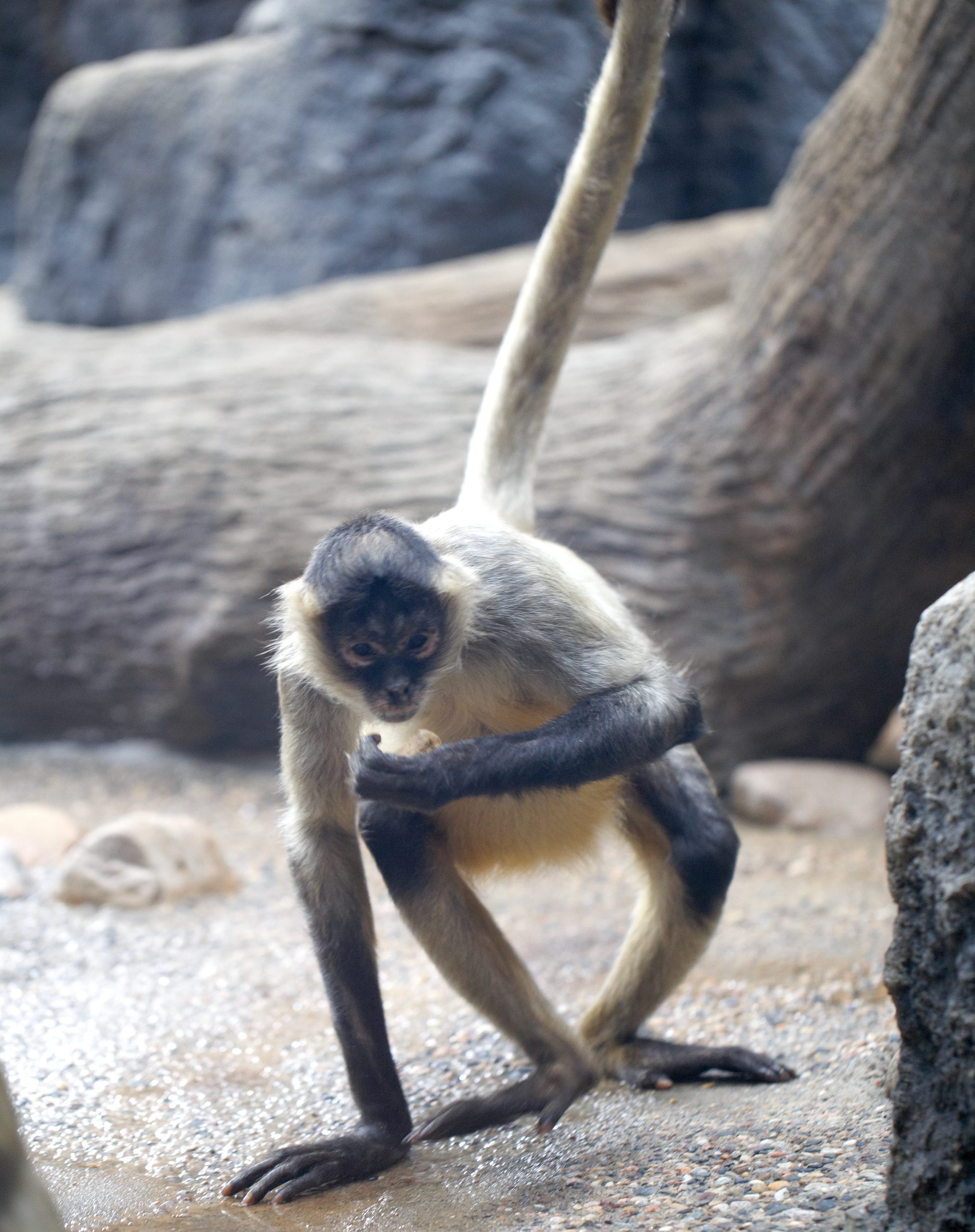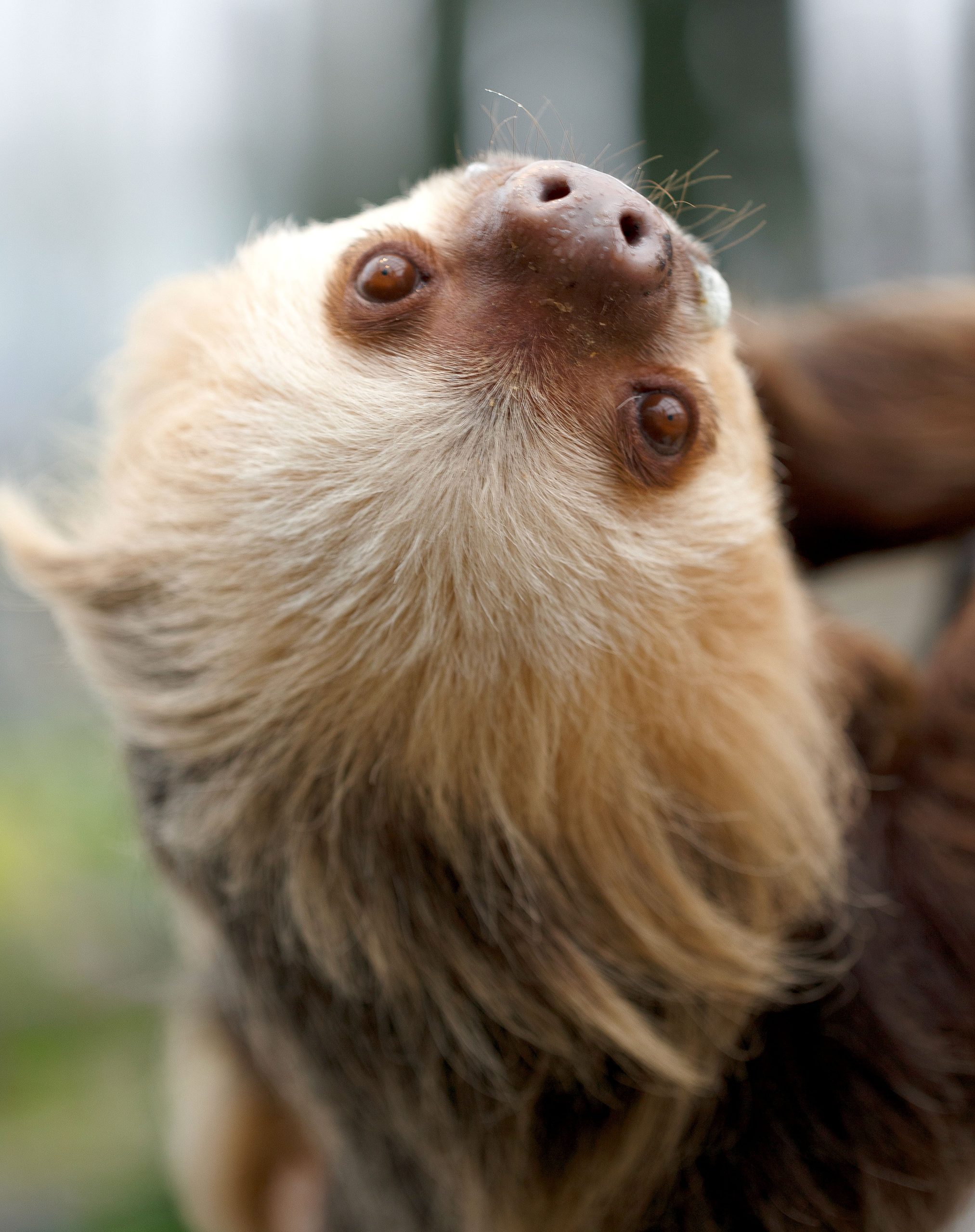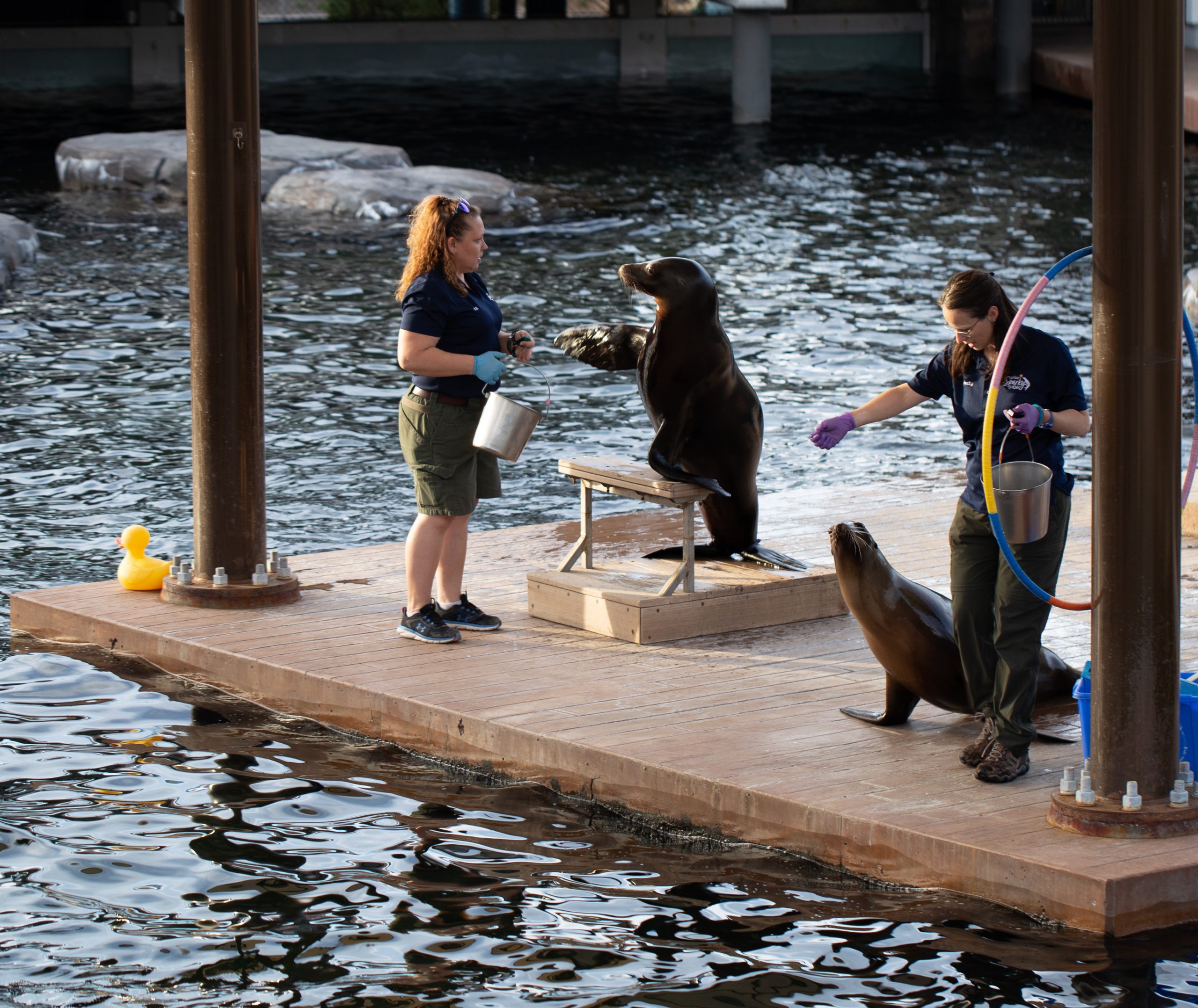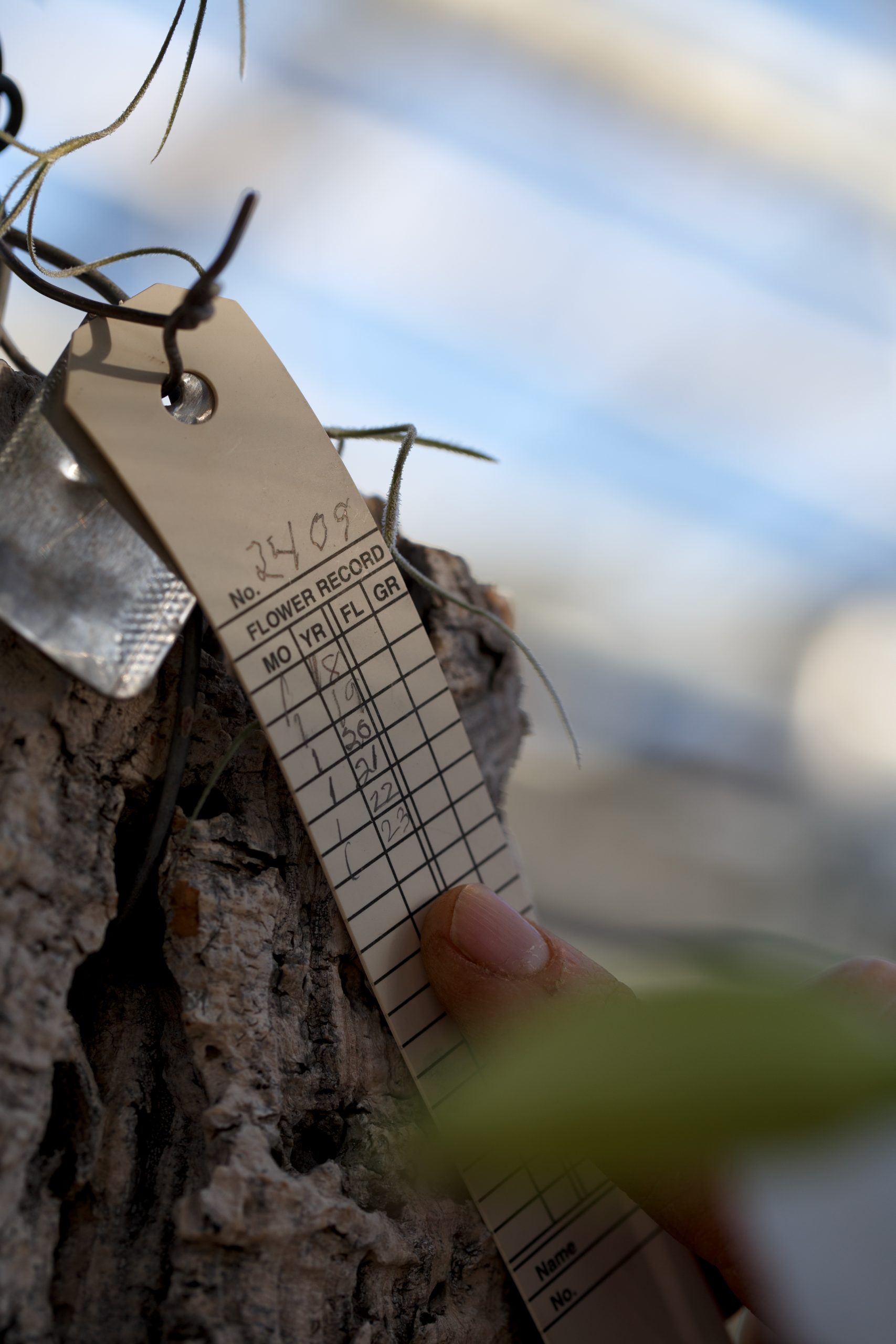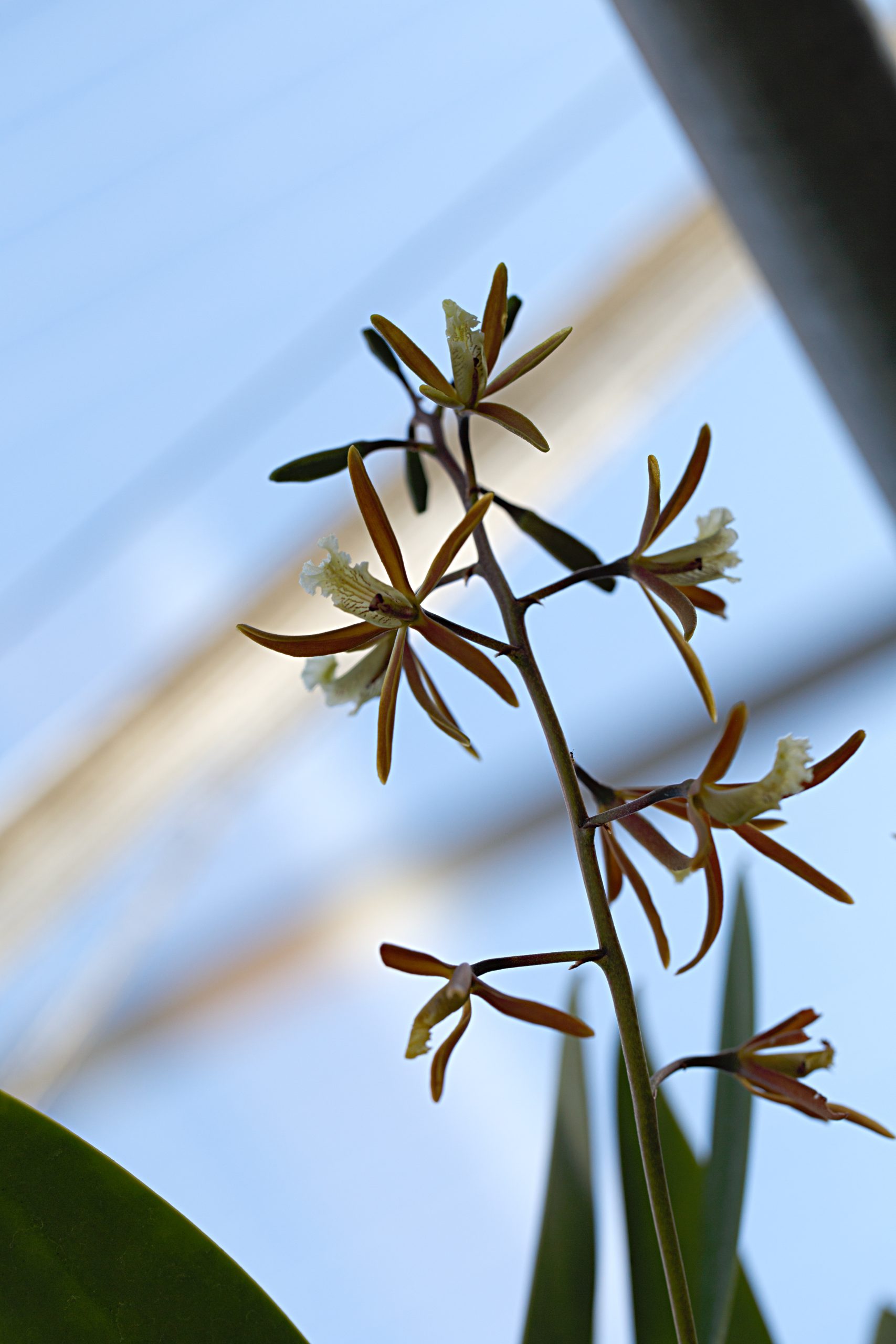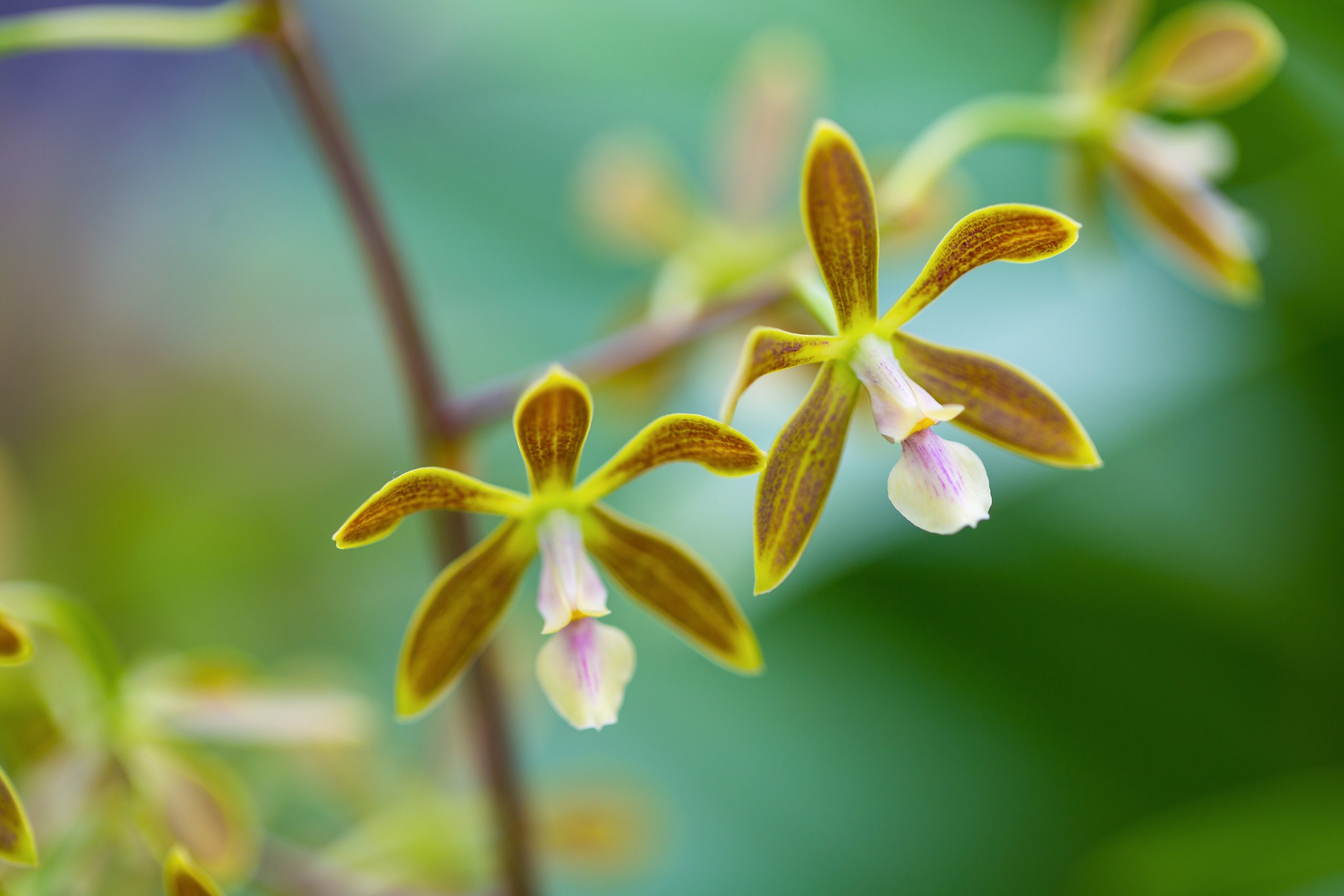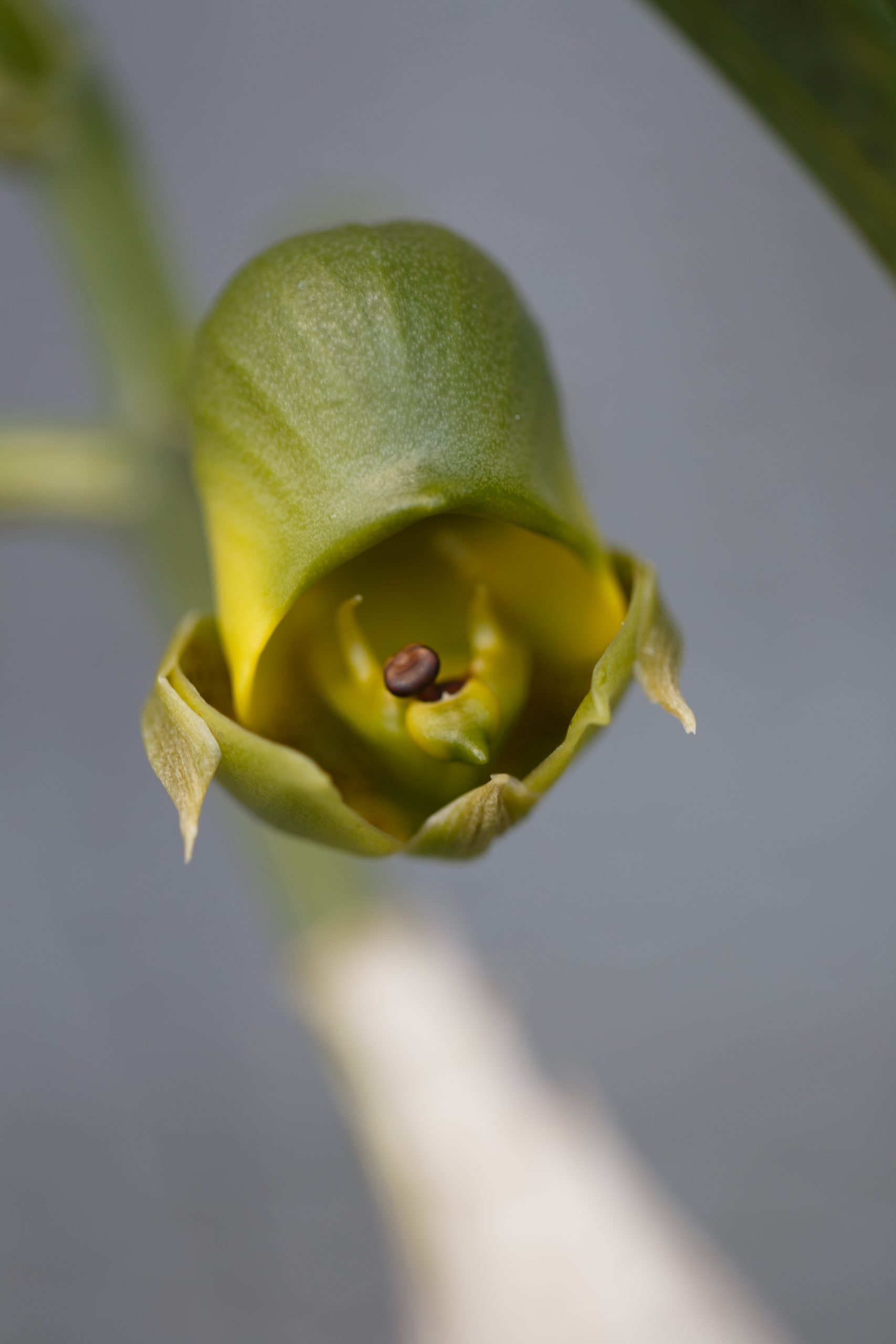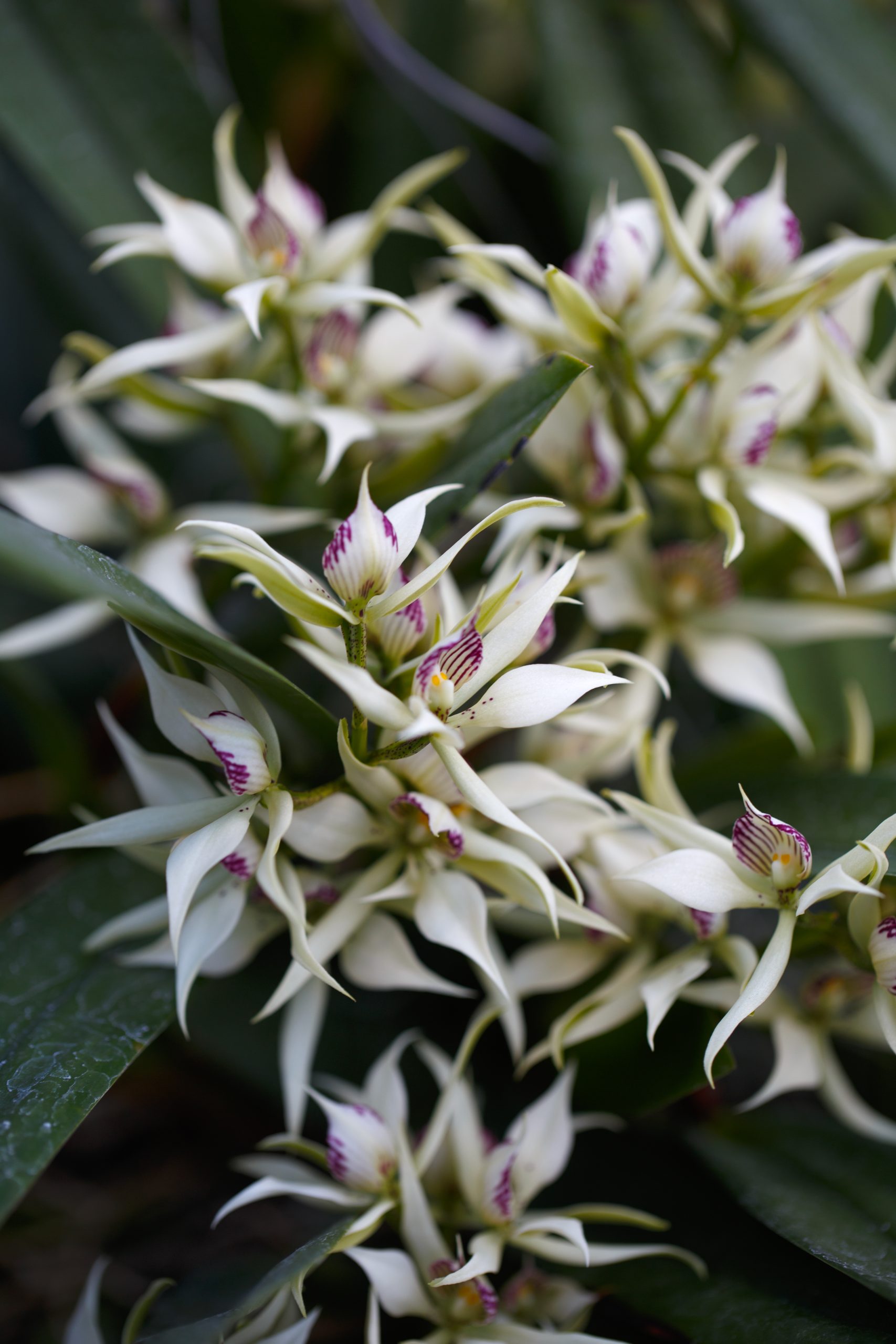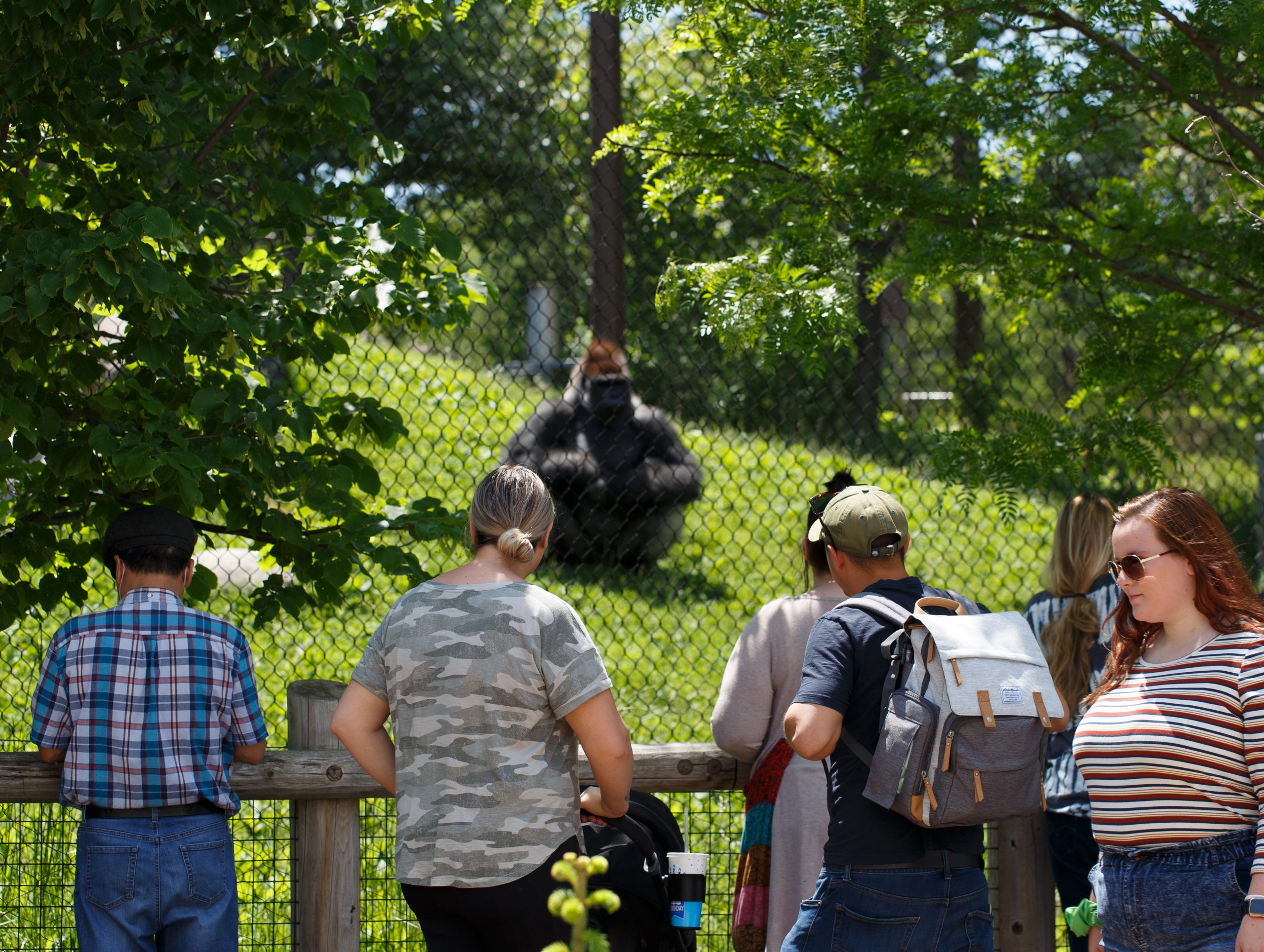
Feeling the pinch on your family budget this summer? Then come to Como Park Zoo & Conservatory, where you can spend the perfect summer day, all without spending a penny. With free public programs every day, and accessible events throughout the season, Como is the family destination where fun is always free. Check out some of our insider tips for making the most of your next visit.
DAILY PROGRAMS
-
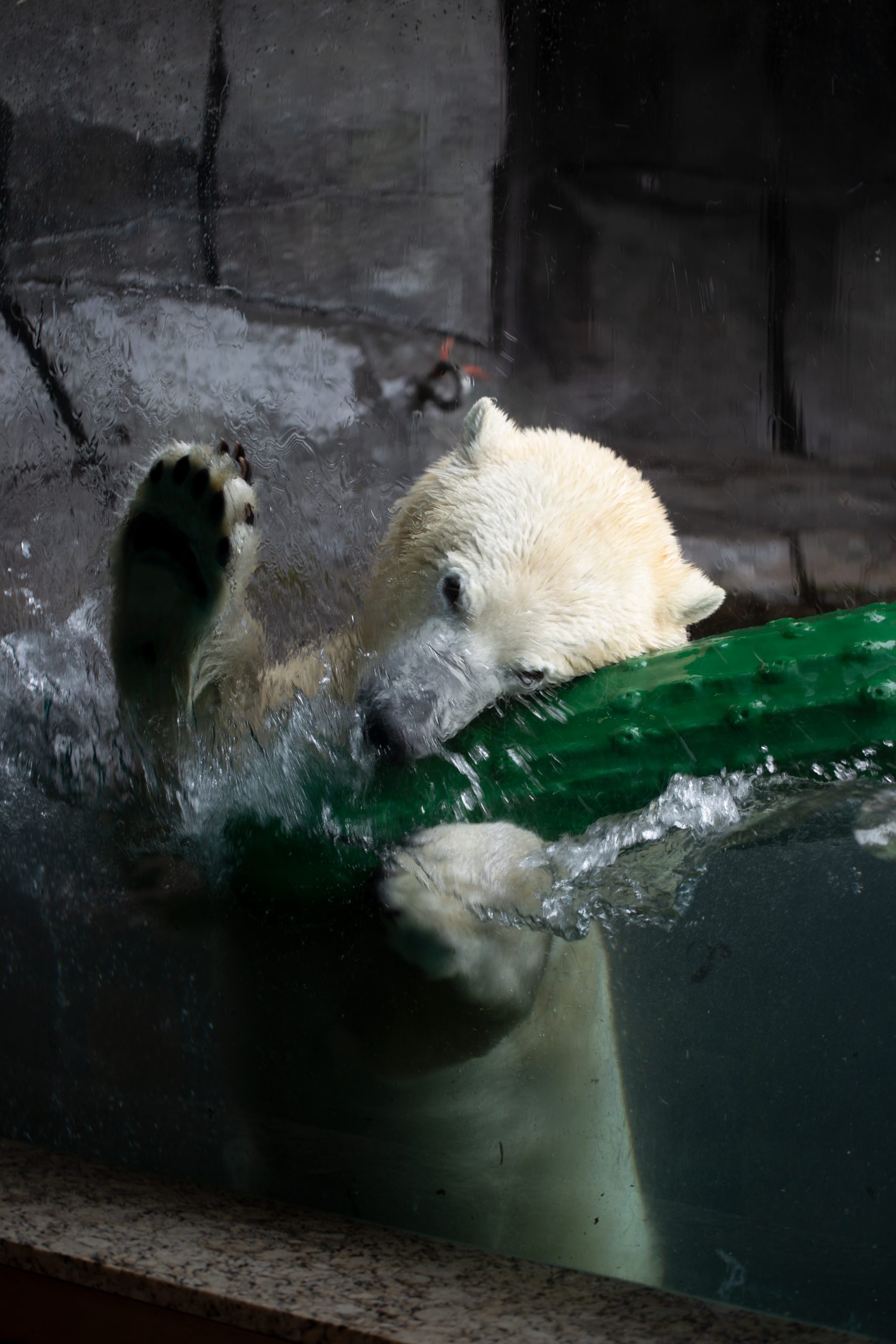
Polar Bear Program | 10:30 a.m.
Polar bears Neil, Nan and Kulu are the focus of this daily program, where you might catch keepers training or providing fun enrichment to Polar Bear Odyssey’s three bears.
-

Zookeeper Talk | 11:00 a.m.
Hear what it’s like to go nose-to-nose with Como Zoo’s animals every day, direct from our zookeepers! With a theme that changes on the daily, and a casual Q&A vibe, you can learn all about the animals in Como’s care, from gorillas, to Galapagos tortoises, and everything in between.
-

Blaze Sparky Show | 11:30 a.m. & 2:30 p.m.
A Minnesota tradition since 1956, the new Blaze Sparky Show has been reimagined for a new generation, with an even greater focus on conservation, and lead roles shared by all five boisterous and high-energy residents of the state-of-the-art habitat. Check it out daily at shows at 11:30 a.m. and 2:30 p.m.
-
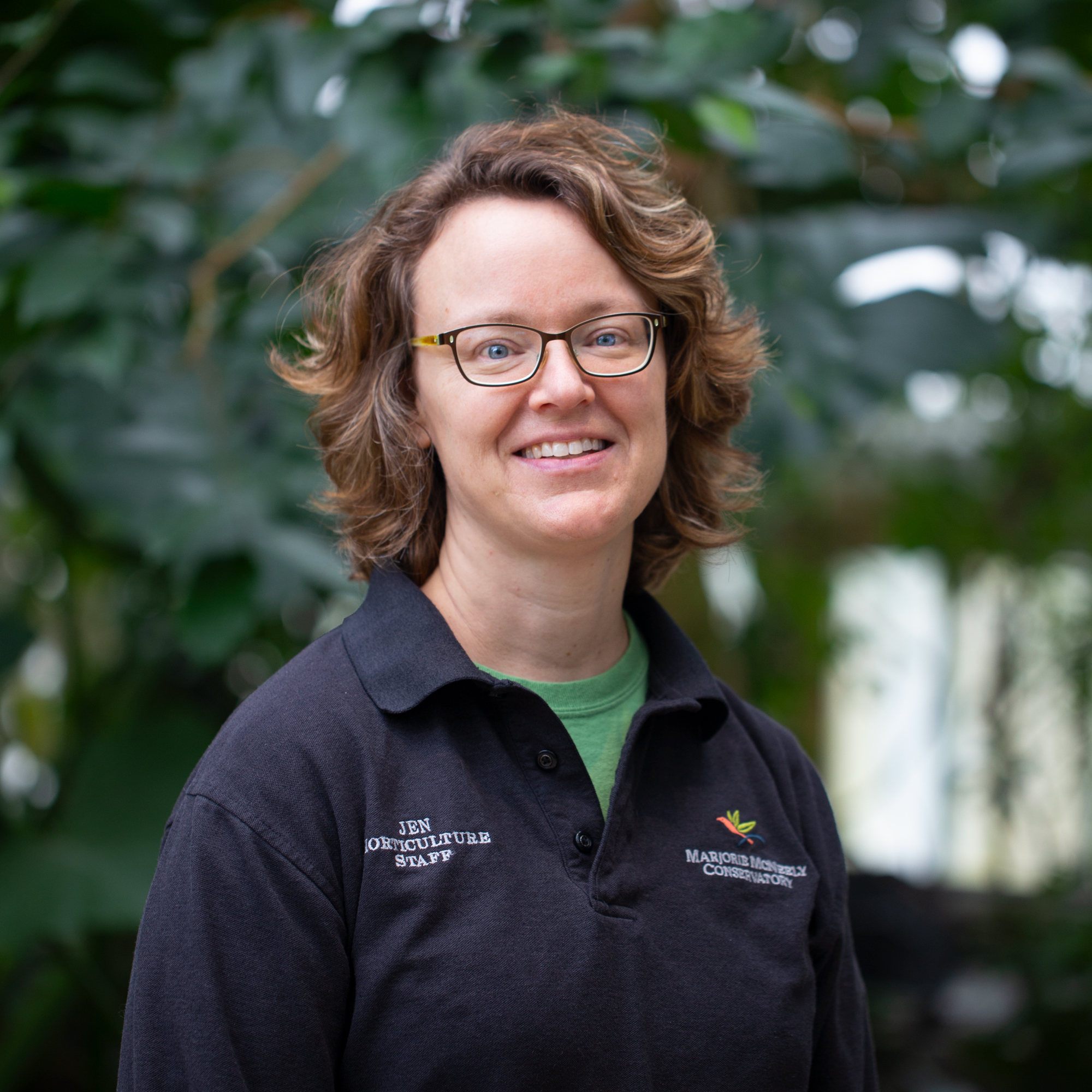
Gardener Chat | 1:00 p.m.
Meet the people behind the plants at the Marjorie McNeely Conservatory. Featuring a new garden or plant topic every day, Como’s talented horticulturists talk about what it takes to care for thousands of plants, and often have some gardening tips to try at home.
SPECIAL OFFERINGS
-
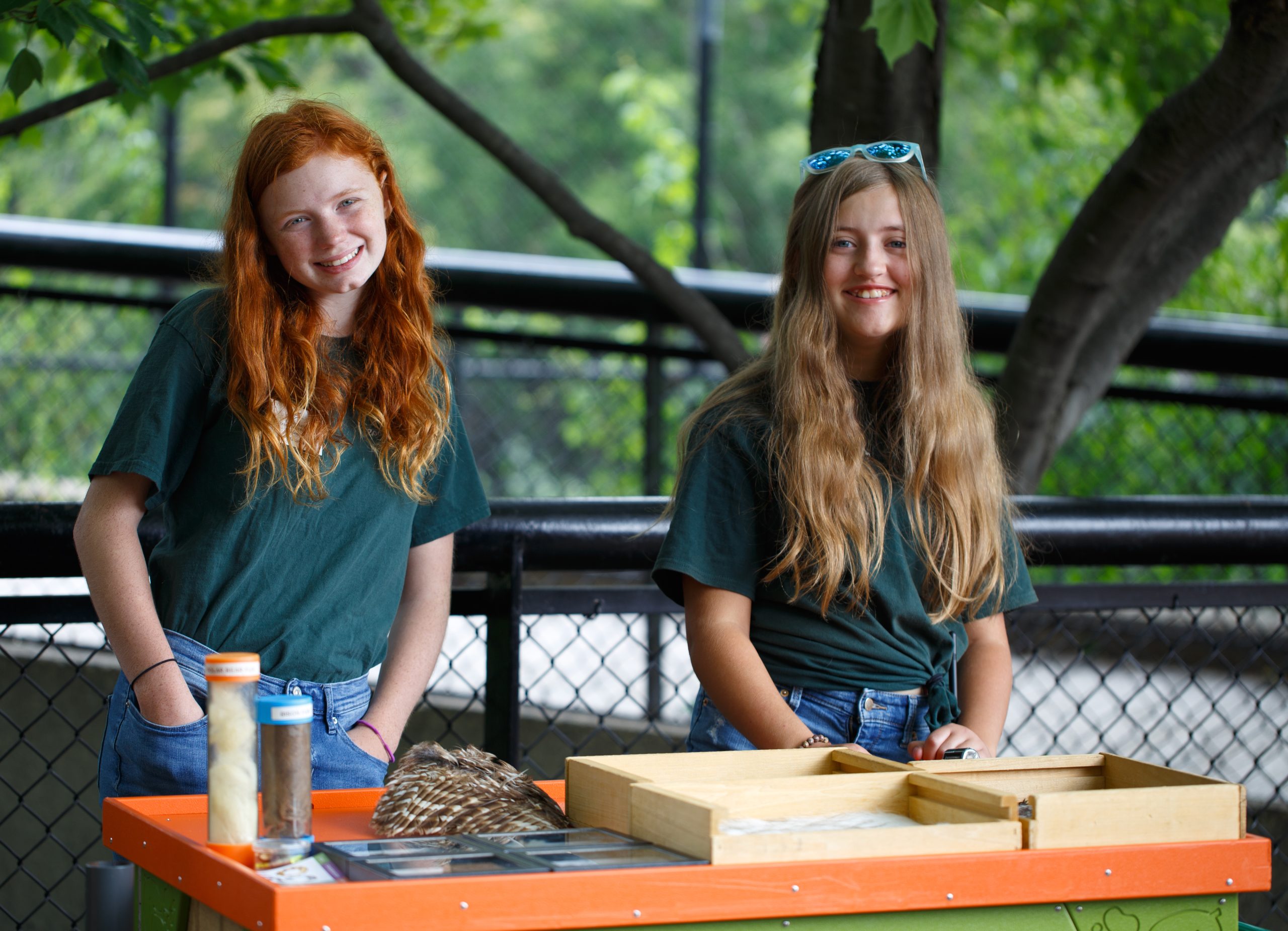
Nature Walk | Daily
Those talented teenage interpreters you may meet around campus this summer are part of Como’s popular Nature Walk program. Selected through a competitive process, these young volunteers receive special training to teach Como visitors even more about our animals and plants. They also make conservation look cool—especially for our younger visitors. Every year, Nature Walk volunteers help to bring more than 200,000 visitors a little closer to Como’s natural collections.
-
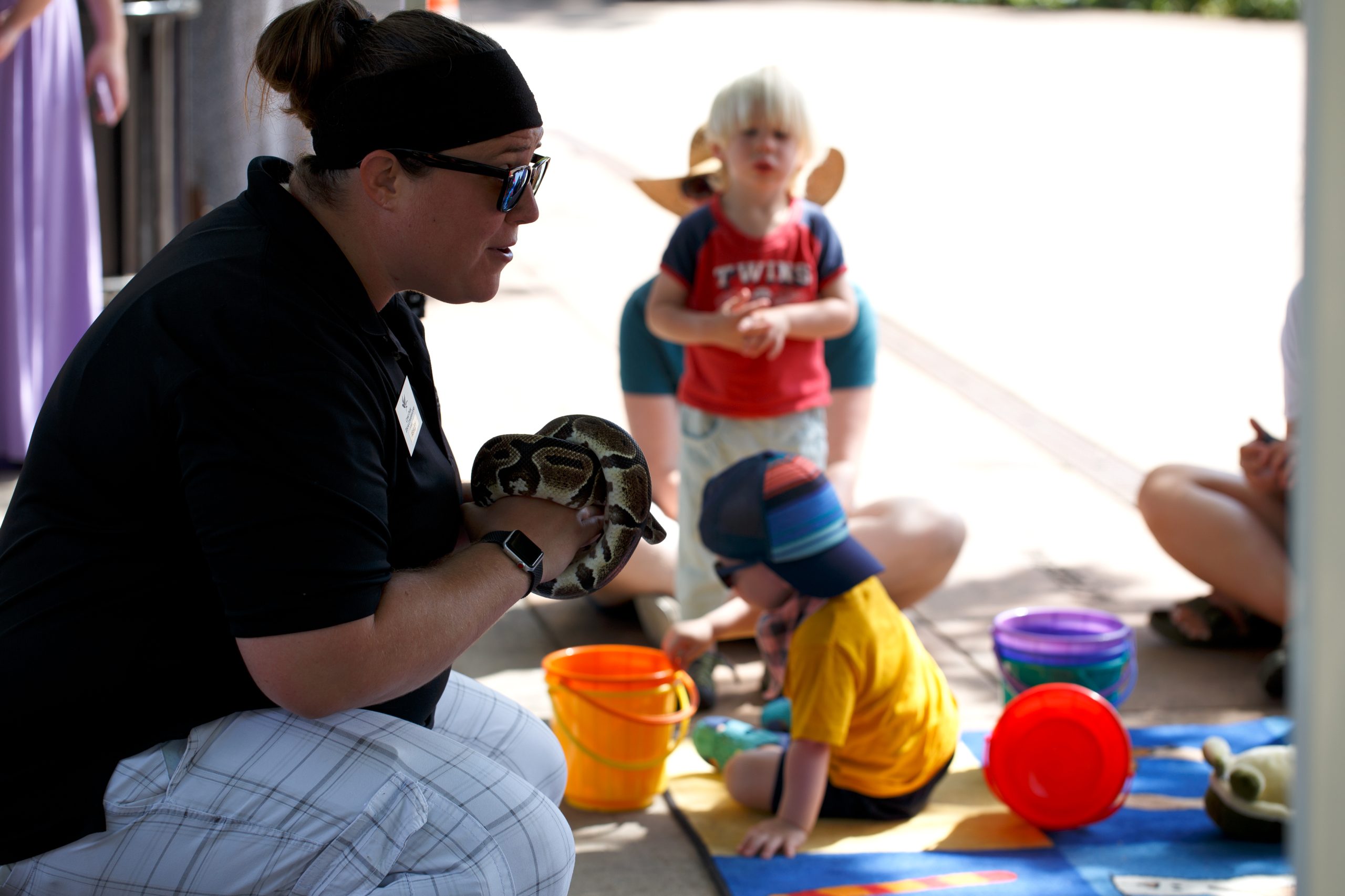
Little Explorers | Thursdays at 10:00 a.m.
Free on Thursdays in June from 10 a.m. to noon, Como’s Visitor Center becomes a fun conservation station for preschoolers, with storytime, hands-on activities, and nature themes including Junior Zookeeper on June 13, Rockin’ Reptiles on June 20, and Nighttime Critters on June 27.
-

Groovin’ in the Garden | Wednesdays from 6:00 p.m. to 8:00 p.m.
Put on your dancing shoes and pack a picnic for the Twin Cities’ favorite free summer concert series. Set against the beautiful backdrop of the Marjorie McNeely Conservatory, this outdoor concert series is fun for all ages, with favorite local acts, and fun activities for the kids. Mark your calendar for these upcoming events:
June 12 – Flamin’ Oh’s – Minnesota Music Legends
June 19 – Eleganza – Folk, Americana, & pure Rock & Roll
June 26 – Cole Diamond – Honky Tonk & Outlaw Country
July 3 – Craig Clark Blues Band – Blues, Funk, & Soul
July 10 – The Foxgloves – Folk & Americana, & Country Twang
July 17 – Ben Cook-Feltz – Americana, Folk, Indie, Pop, Rock
July 24 – School of Rock –St. Paul & Plymouth House Bands -
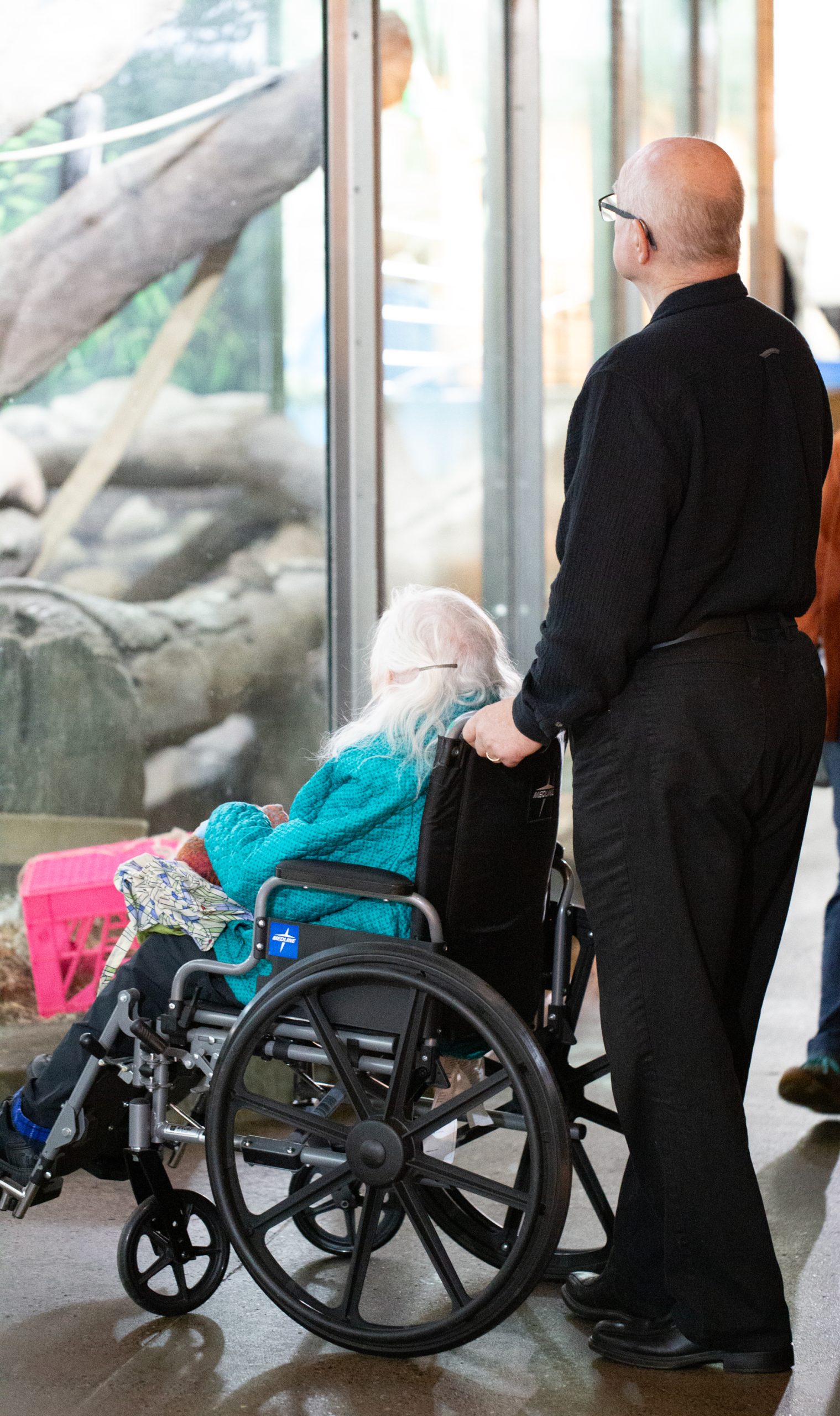
Senior Strolls
Get fit and make new friends at one of these early access mornings, specifically for the 55 and up crowd. Visit Como’s website to register in advance for the next Senior Stroll on June 18, and to watch for further events.
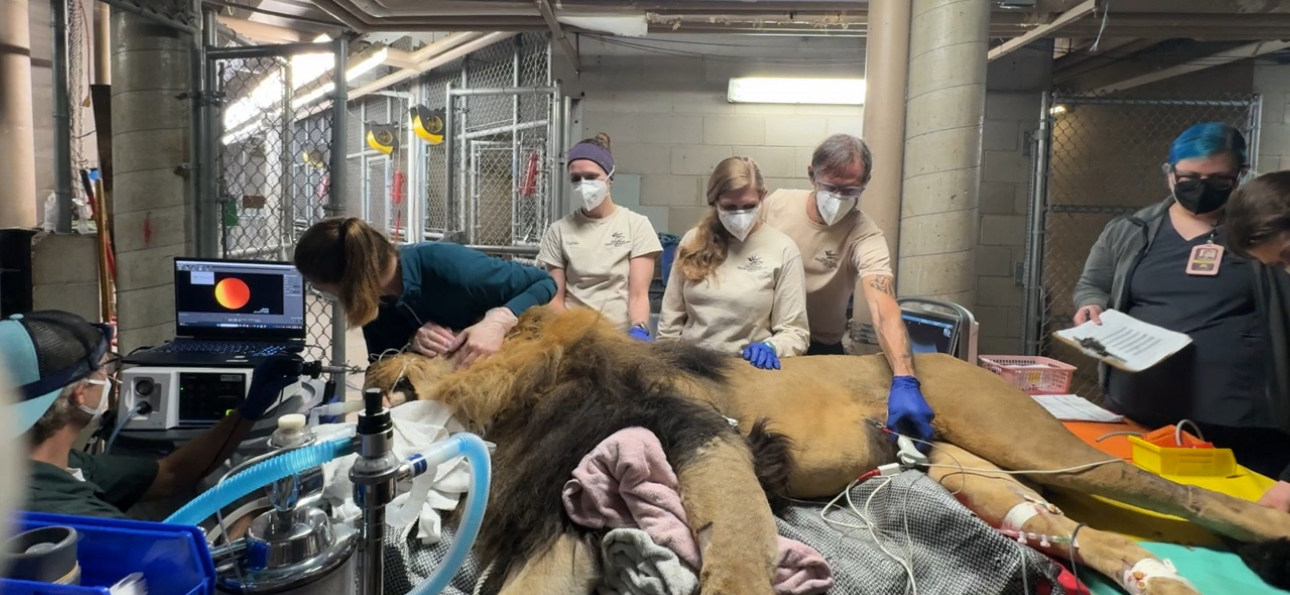
Como Zoo keeper Caitlin Allessi recently noticed that Mumford the lion seemed to be suffering from an increasing number of nosebleeds. “While he’s always had occasional problems with that, we noticed that they were getting more intense over time, and we wanted to investigate to rule out any big concerns about his health,” she says.
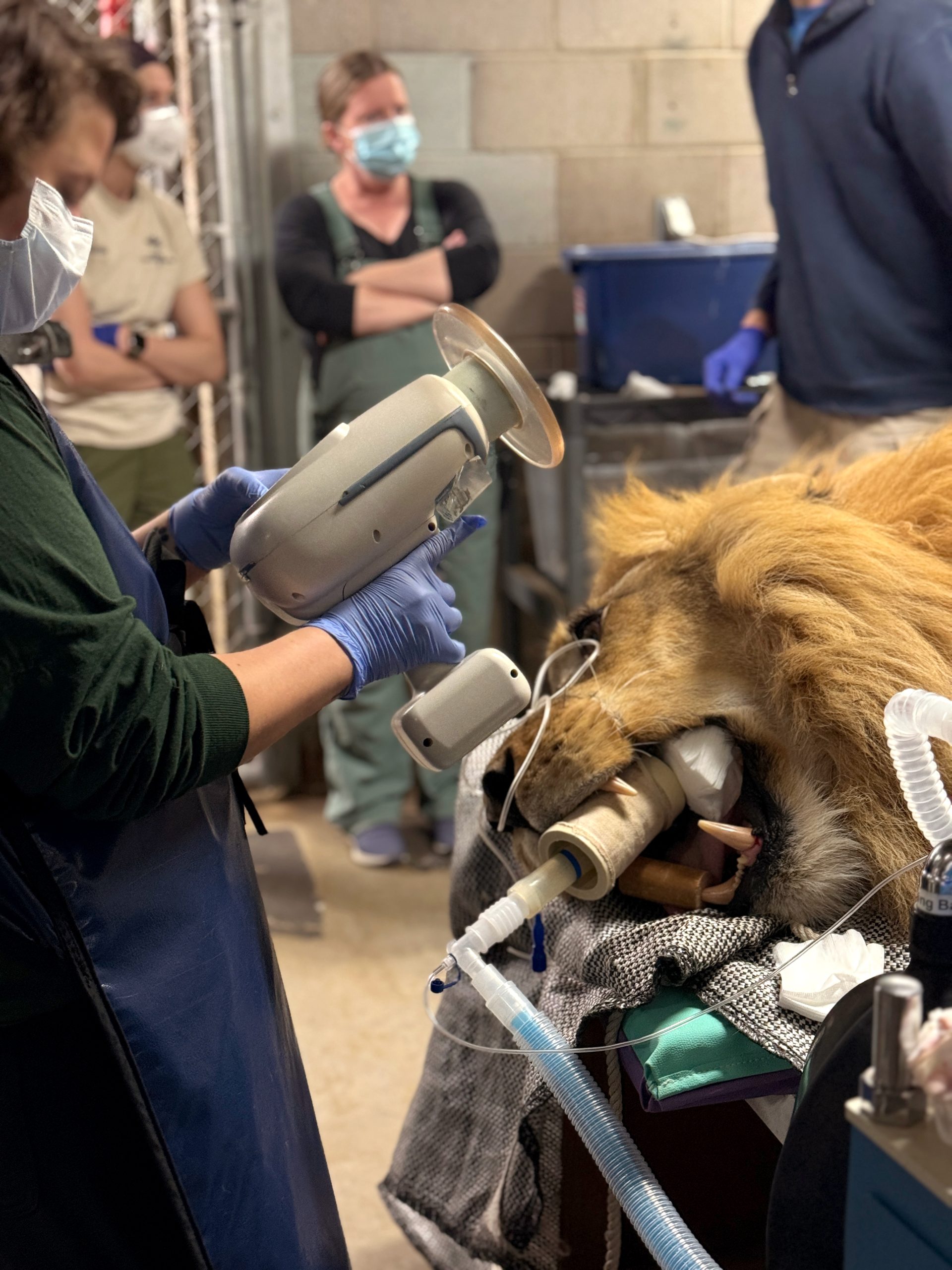

Getting a nearly 400-pound cat to the doctor is not easy, but the process has been made a little more convenient at Como Zoo over the last year thanks to the new on-site veterinary team. Supported in part by your contributions to Como Friends, this new approach to animal care helps to minimize stress for animals by eliminating the need to travel to the vet. It also allows veterinarians and keepers to collaborate more closely, managing multiple procedures to make the most of the time animals may have to be under anesthesia.
“Knowing that we would be scoping his nose, we realized it would also be a great time to coordinate with the veterinary dentist, which is a big undertaking with a lion,” says large cat keeper Hans Jorgensen. “The veterinary dental team told us that with a house cat, it usually takes 10 x-ray plates to view the cat’s whole mouth, but with Mumford, it took 50!”
Though Mumford has been a resident of Como Zoo since 2019, this was the first time keepers were able to do a full physical exam of the 8-year-old male, taking blood samples, a urine sample and radiographs can give veterinarians a more thorough understanding of the lion’s overall health. During the brief procedure, veterinarians got to the root of the nosebleed problem—a cluster of vascular tissue near the tip of his right nostril that gets irritated, particularly when he bumps it against the mesh of the exhibit.
“He has had a few more nosebleeds since this procedure, so for right now, we’ll just keep monitoring him,” says Allessi. “It’s a big deal to anesthetize a lion, so if we don’t have to do it, we don’t want to. But it’s so much more convenient to have veterinarians come to us—it’s been a nice improvement for the animals.”
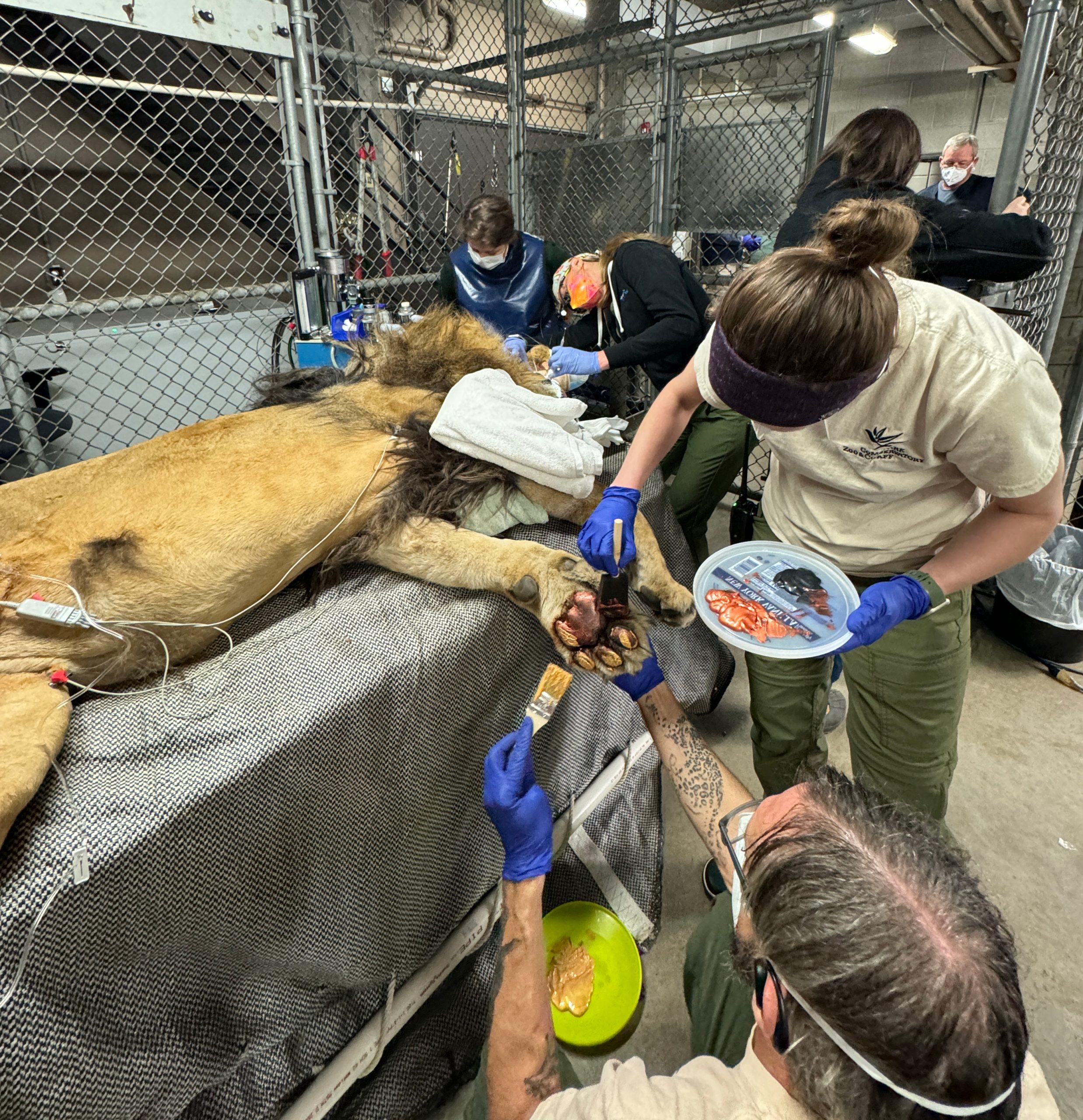
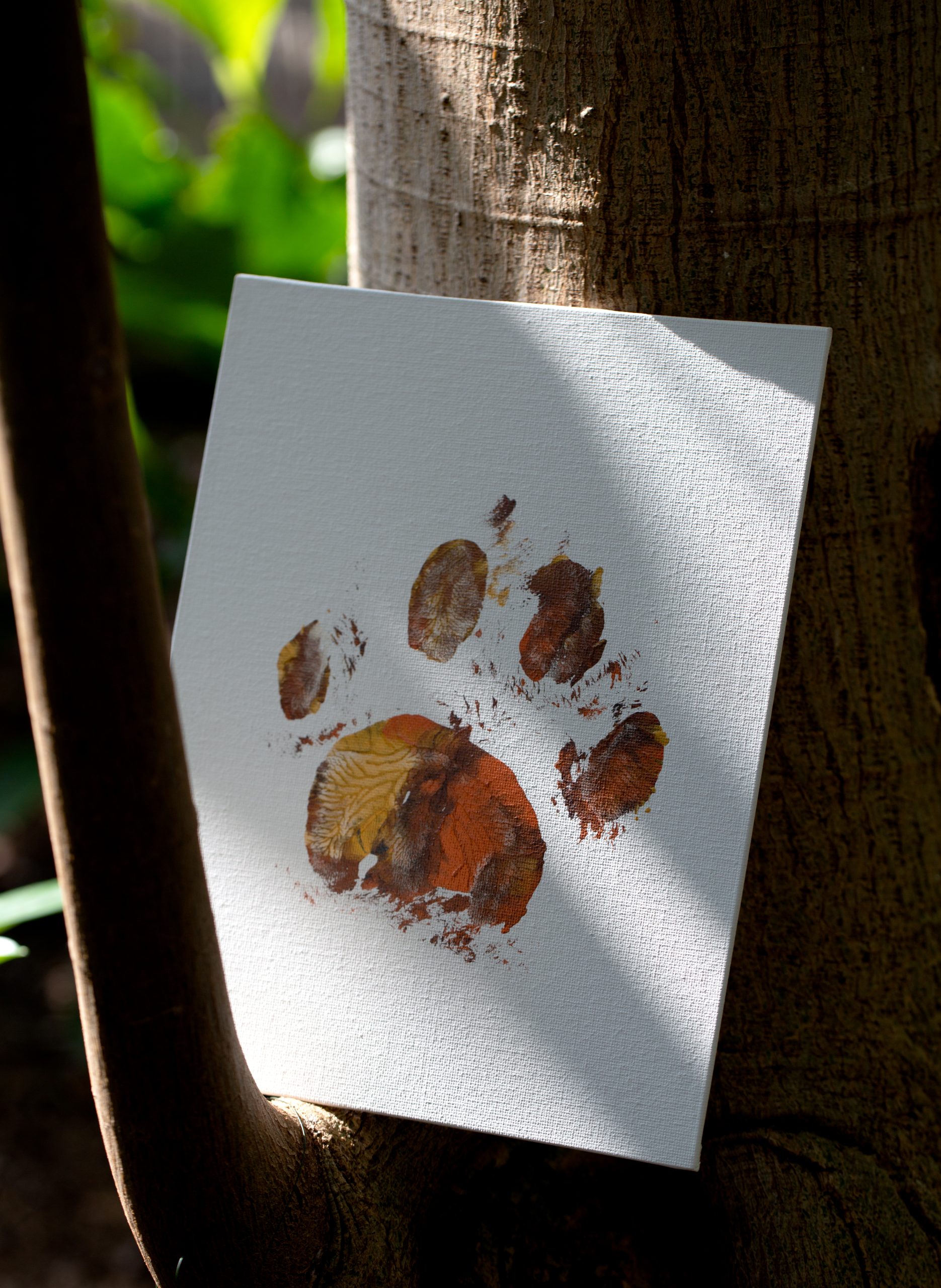
Mumford’s paw print is a featured auction item at this year’s Sunset Affair: Our Wild World Silent Auction!
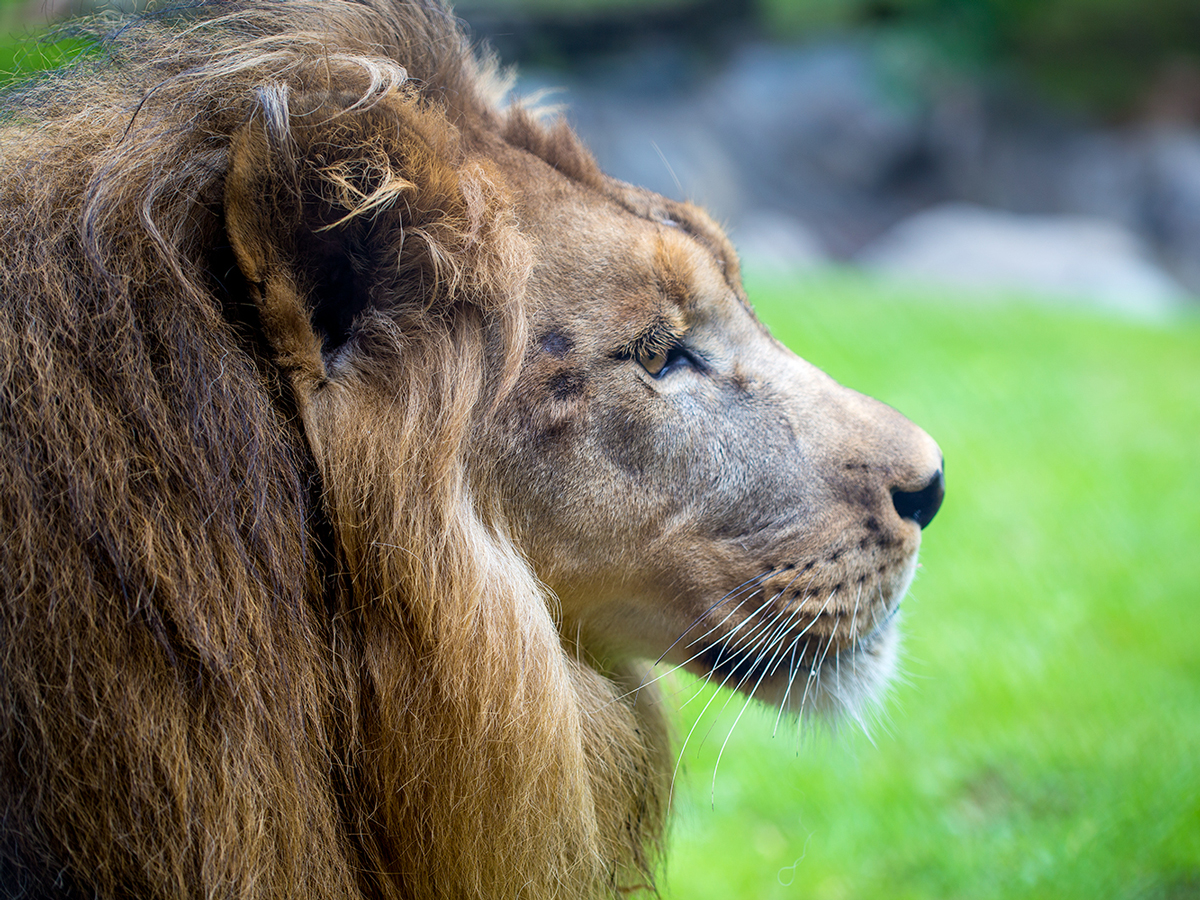
Visitors to the Marjorie McNeely Conservatory’s historic Palm Dome may notice something different this season—a lot more sunlight.

The brighter feel of the room is the result of an extensive pruning project to remove several older palms that had grown so tall they were crowding into the glass cupola. Unlike species that can be trimmed to grow outward, “the growing point of a palm is at the top of the plant, so the pressure of pushing into the glass would eventually kill the plant,” explains Karen Kleber Diggs, horticultural supervisor.
The strength of these tropical palms can also put the Conservatory’s historic dome at risk.
“A couple of years ago, we had one of the palms on the side actually grow up with a very stiff frond that punched its way into the grout” between the cupola’s glass panes, she says. “These are very powerful plants.”
Typically, the Marjorie McNeely Conservatory works with the city’s forestry department to provide pruning help, but with the spread of emerald ash borer, trimming Como’s tropical trees wasn’t possible this year. That’s where Como Friends stepped in, providing $70,000 in grant funding to help Como’s campus move ahead with tree maintenance in the Palm Dome, the North Garden and a few other locations around campus.
“Grants like this are one of the important ways that Como Friends helps the Marjorie McNeely Conservatory achieve its mission,” says Jackie Sticha, president of Como Friends. “If city funding or park resources are pulled in different directions, community support helps to ensure that Como can move ahead on urgent or emerging maintenance issues.”
New palms—also provided with funding from Como Friends—will take their place as part of a phased succession plan visitors will see in the coming months. While gardeners are always sorry to see 20-year-old palms go away, the extra space has allowed horticulturist Alejandro Balderas to redesign the understory of the palm room. “He’s been utilizing a lot of our bromeliad and orchid collection to create these colorful accent points he calls vignettes that bring a new focal point to the ground cover space,” says Kleber Diggs. “He’s seeing things in that room with fresh eyes, which is something our visitors may notice this season, too.”
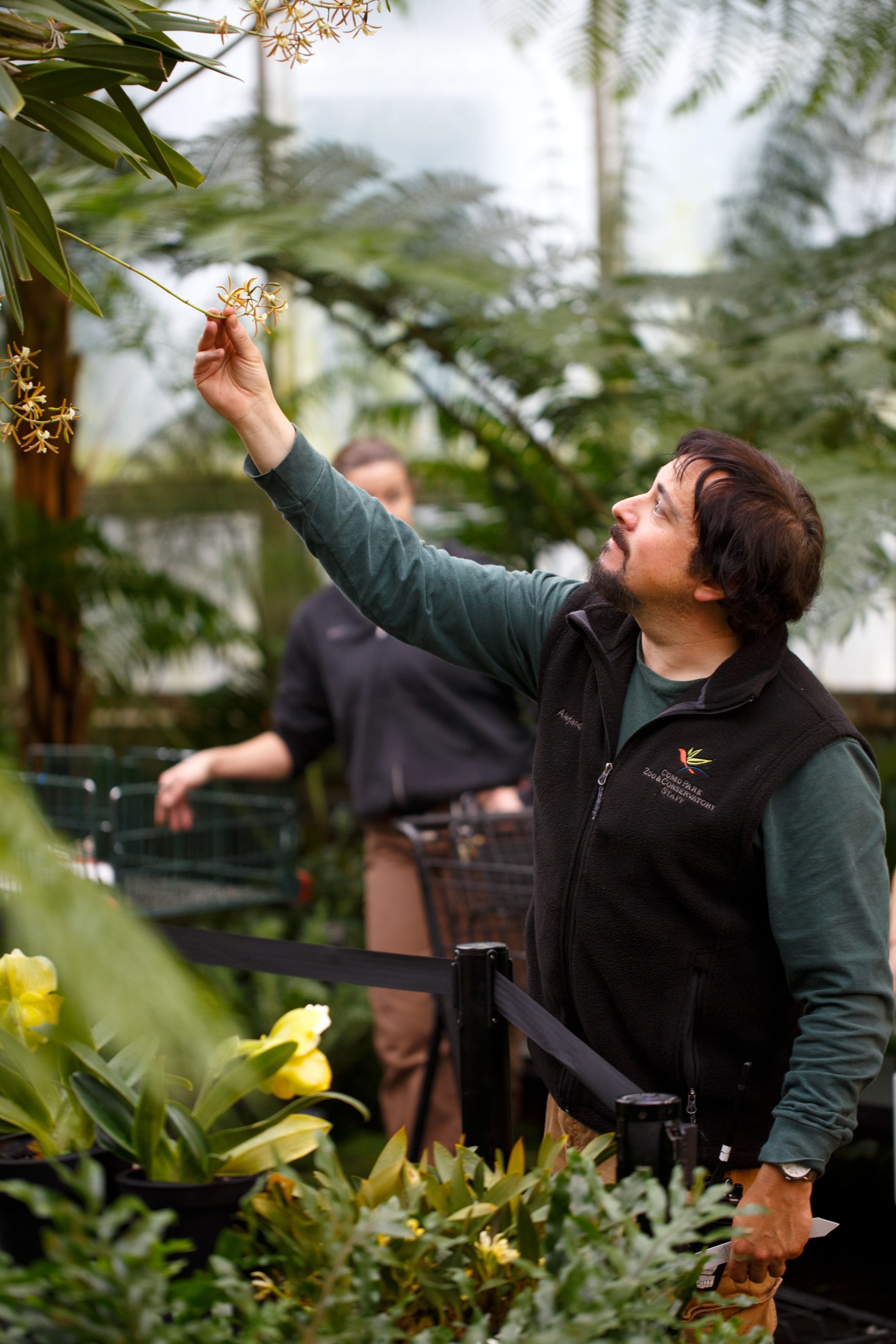
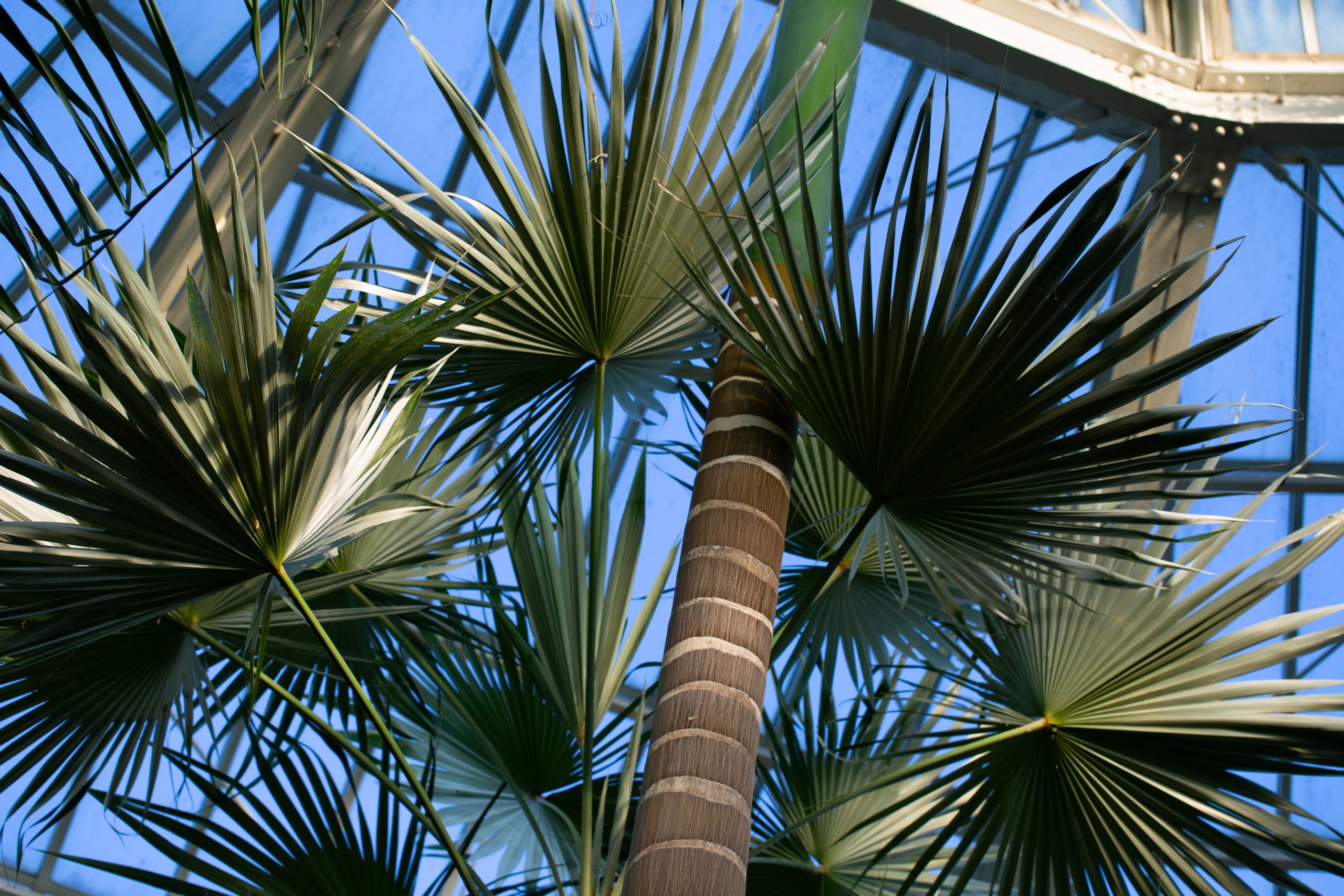
Como’s education programs are back in full force, with a growing emphasis on discoveries that foster new connections with nature.
“What do you think this plant would taste like?” a second grader from St. Paul’s Capitol Hill Magnet School wonders aloud.
“Yucky,” says her classmate, as she contemplates a table full of mint, cacao and other plant specimens from the Marjorie McNeely Conservatory.
“But maybe not,” says a third student, leaning in for a sniff. “This one kind of smells nice…”
Using all five senses to explore the world of plants is the power of Plant Detectives, a popular school partnership that brings second graders from the St. Paul public schools to Como with free tuition provided by Como Friends. In a classroom in Como’s Visitor Center, small teams of students work their way from station to station, smelling, touching and observing all they can about plants, and comparing their notes in a high-energy setting guided by Como’s education specialists.
During the pandemic, when school programs like this were put on pause, virtual programs like Como Connections helped classrooms around the state learn about conservation through fun and interactive videos. But as education coordinator Tim Buer says, there’s nothing like being back in person again for getting kids fired up about learning. “It’s been great to re-establish the connection that we’ve had with schools for so many years,” he says. “We don’t even have any space left in this program, it’s been so popular with teachers.”
Como field trips are a familiar tradition for many schools, but this year, the conservation curriculum is taking a new shape thanks to a new education strategic plan supported by Como Friends.
“As our school partners were coming out of COVID, we took the opportunity to think really intentionally about all of our education programs, making sure that they’re all aligned with our conservation mission,” says Bekah Hanes, Como’s education and conservation curator.
Through Como’s growing partnership with Advancing Conservation Through Empathy (ACE) for Wildlife, a nationwide learning network, Como’s education programs have also been updated to reflect the growing body of research that shows that fostering empathy with animals and plants is a powerful tool in building life-long conservation behaviors.
Como visitors will notice the new conservation-focused vibe all across campus, from the full roster of summer camp programs relaunching this summer, to the new field trip enrichment stations you’ll see near the Visitor Center during the busy spring months. “It’s wonderful to hear the noise and energy of kids being in classroom spaces that we haven’t used for awhile,” says Hanes. “Seeing those school buses come back, and knowing the next field trip is on its way here brings us all a lot of joy.”
BACK TO CLASS WITH COMO FRIENDS
Your support for Como Friends has been critical to the resurgence of Como’s education programs this year, with new scholarship offerings for schools and families. Here’s a look:
Hitching a ride: With rates for school bus rentals on the rise, Como Friends is helping provide bus scholarships to schools in need to ensure that finances are never a barrier to school field trips.
Summer camp surge: After a successful pilot run last season, Como’s popular summer camps are making a full return with 12 weeks of great programs about animals and plants for preschoolers through sixth graders. Como Friends provided scholarship funding for families to enroll in Camp Como this season. Your Como Friends’ membership can also help save 10 percent off your registration costs.
St. Paul Partners: With field trips back in full swing, Como has resumed its popular second grade field trip program with the St. Paul public schools, a program paid for by Como Friends.
Nature Walk: Led by teens taught to interpret Como’s animal and plant collections, this engaging conservation program is all about getting the next generation excited about nature. At interpretive carts stationed around Como during the busy summer months, Nature Walk volunteers role-model what’s cool about conservation, connecting with an estimated 200,000 visitors every year.
Curriculum Updates: With a new focus on fostering empathy with animals and plants, Como’s education department hired a dedicated curriculum writer to update all of Como’s programs with best practice strategies for inspiring the next generation of environmental stewards.
The season’s best Como traditions are back
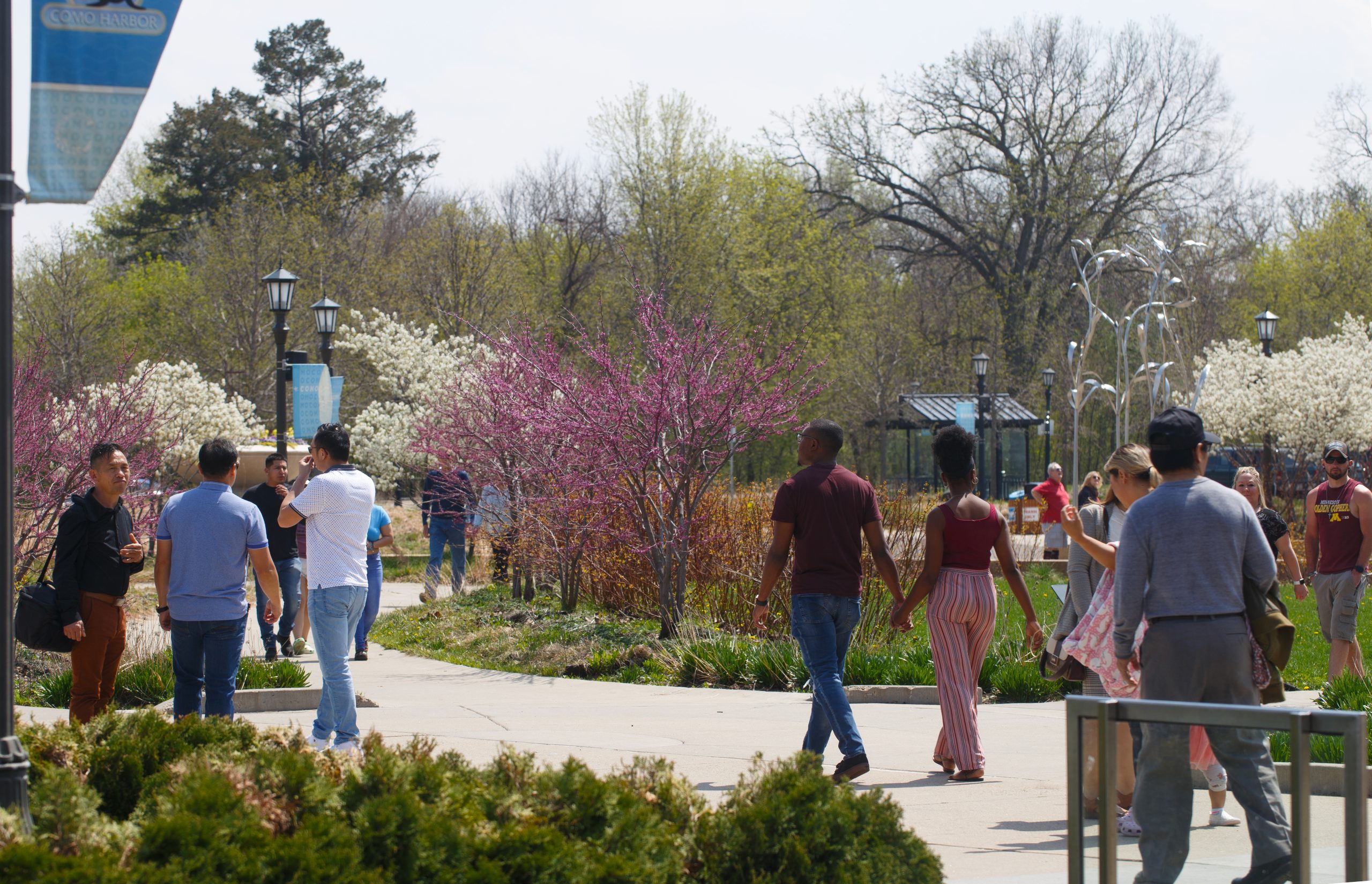
One of the beauties of Como Park Zoo & Conservatory is finding something to delight every time you drop in. But with these inside tips about Como’s value-added programs, you’ll find even more to love.
-

The Blaze Sparky Show
Every day at 11:30 a.m. and 2:30 p.m., Como Harbor’s inhabitants dive into this splashy training session, teaching visitors about the unique adaptations of harbor seals, Atlantic gray seals and California sea lions. And be sure to check out Como’s daily zookeeper talks at 11 a.m. and gardener chats at 1:00 p.m. every day, featuring a changing roster of themed animal and plant presentations for the public.
-
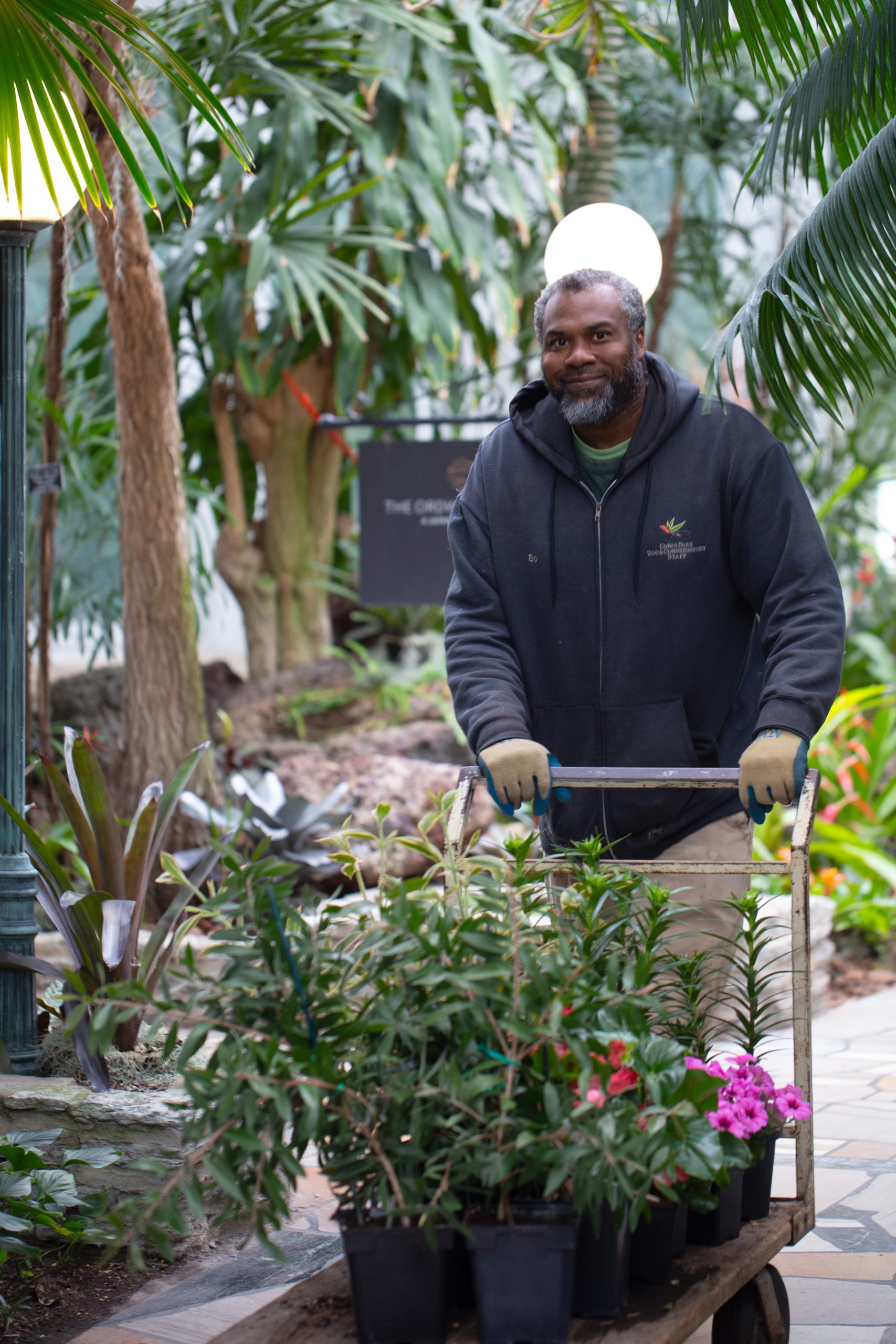
The Sunken Garden Summer Flower Show
The longest-running flower show of the year, the Sunken Garden’s summer display is open now through September 22. Look for angelonia, verbena, salvia, coleus and other annuals in cherry red and pink at this hot summer showcase of floral favorites. Free and open every day from 10 a.m. to 6 p.m. except for a mid-show change June 10–June 13.
-
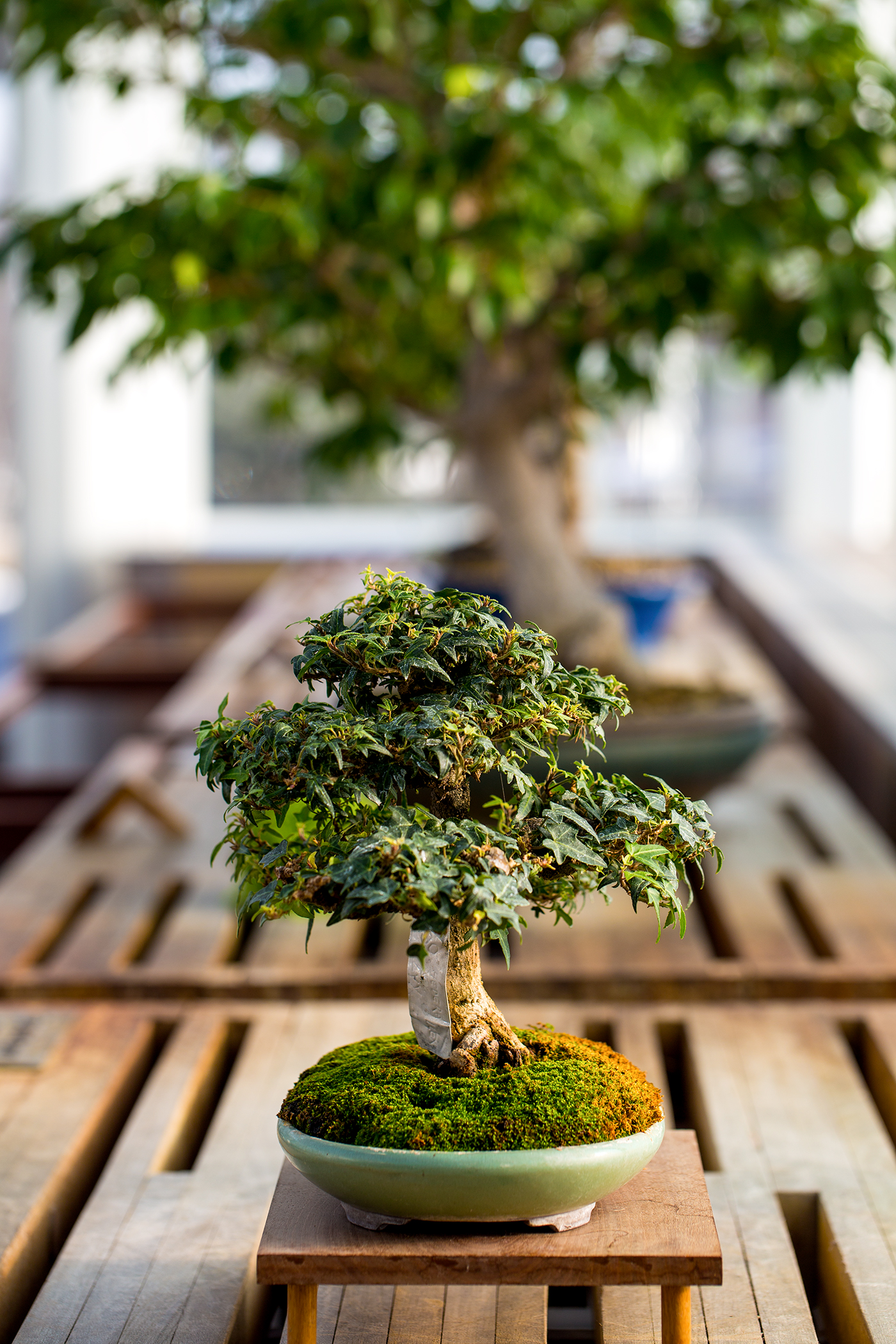
The Mother’s Day Bonsai Show
Experience the beauty of bonsai at this annual show, May 11 and 12, produced in partnership with the Minnesota Bonsai Society.
-

Cafesjian’s Carousel
A Minnesota tradition that just keeps spinning, Como’s historic carousel is now open five days a week, Thursdays to Mondays, through Labor Day, from 11 a.m. to 4 p.m. Mark your calendar for free rides coming up on May 28, June 25, July 30, August 27 and September 24.
-
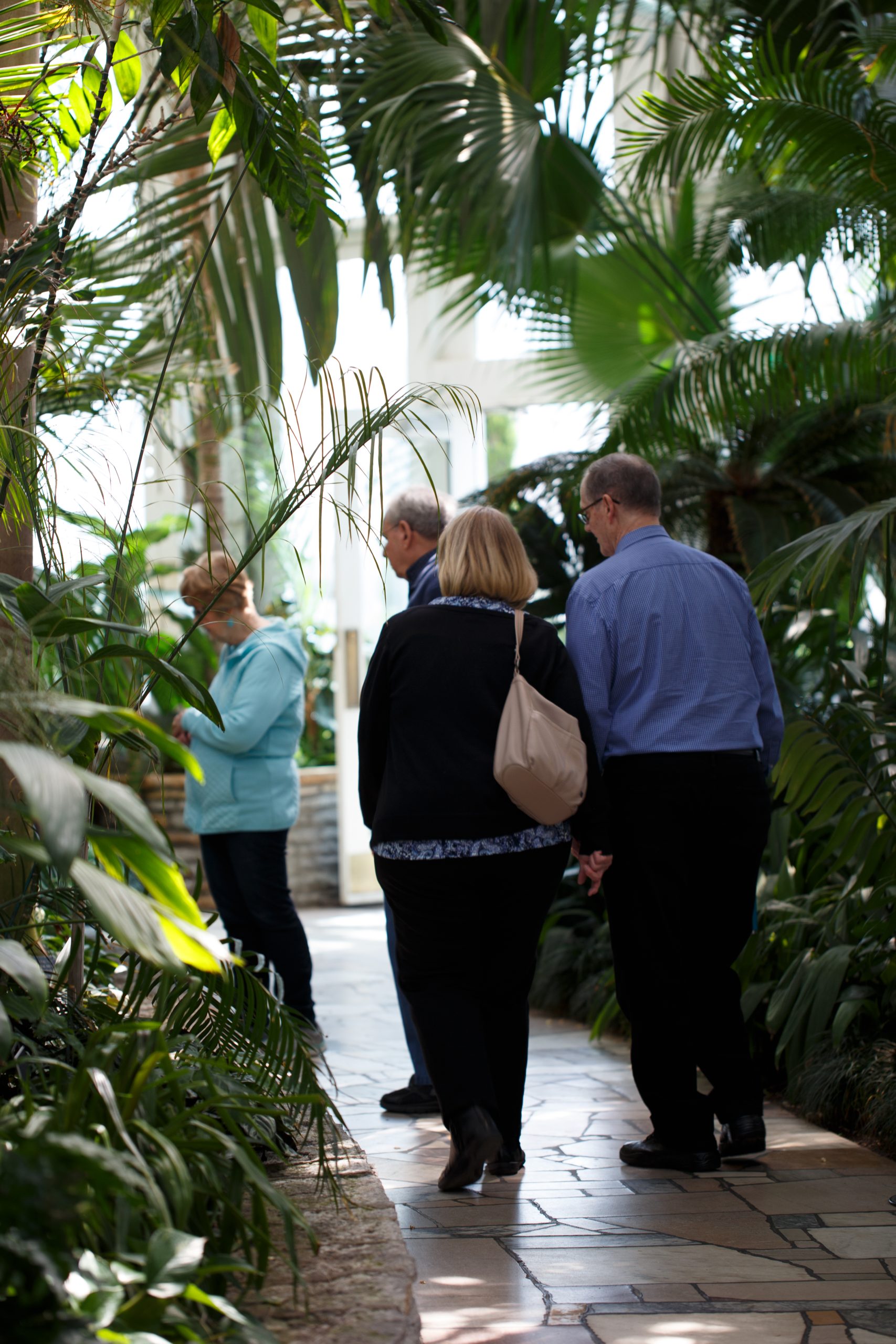
Insider’s Look
Have you ever wondered what it’s like before hours at the Zoo and Conservatory? Find out at Como’s popular new Adult Program: An Insider’s Look, offering an early hours behind-the-scenes glimpse of everything that goes on at Minnesota’s most visited cultural destination. Coming May 19, from 8:30 a.m. to 10 a.m., $25 per person. Reserve your ticket today: https://comozooconservatory.org/como/an-insiders-look/
-

Garden Safari Gifts Satellite Shops
Como Friends’ Garden Safari Gifts grows every summer with satellite locations in Como Town and at the kiosk in Polar Bear Odyssey, May 18 through September. With an unparalleled plush collection, cute gifts, and Como-themed apparel, every purchase helps to support the plants and animals you love at Como. And remember, Como Friends members enjoy 15 percent off every purchase!
-

Senior Strolls
Get fit and make new friends at one of these early access mornings, specifically for the 55+ and up crowd. Visit Como’s website to register in advance for the following dates: May 21, June 9 and June 18.
-
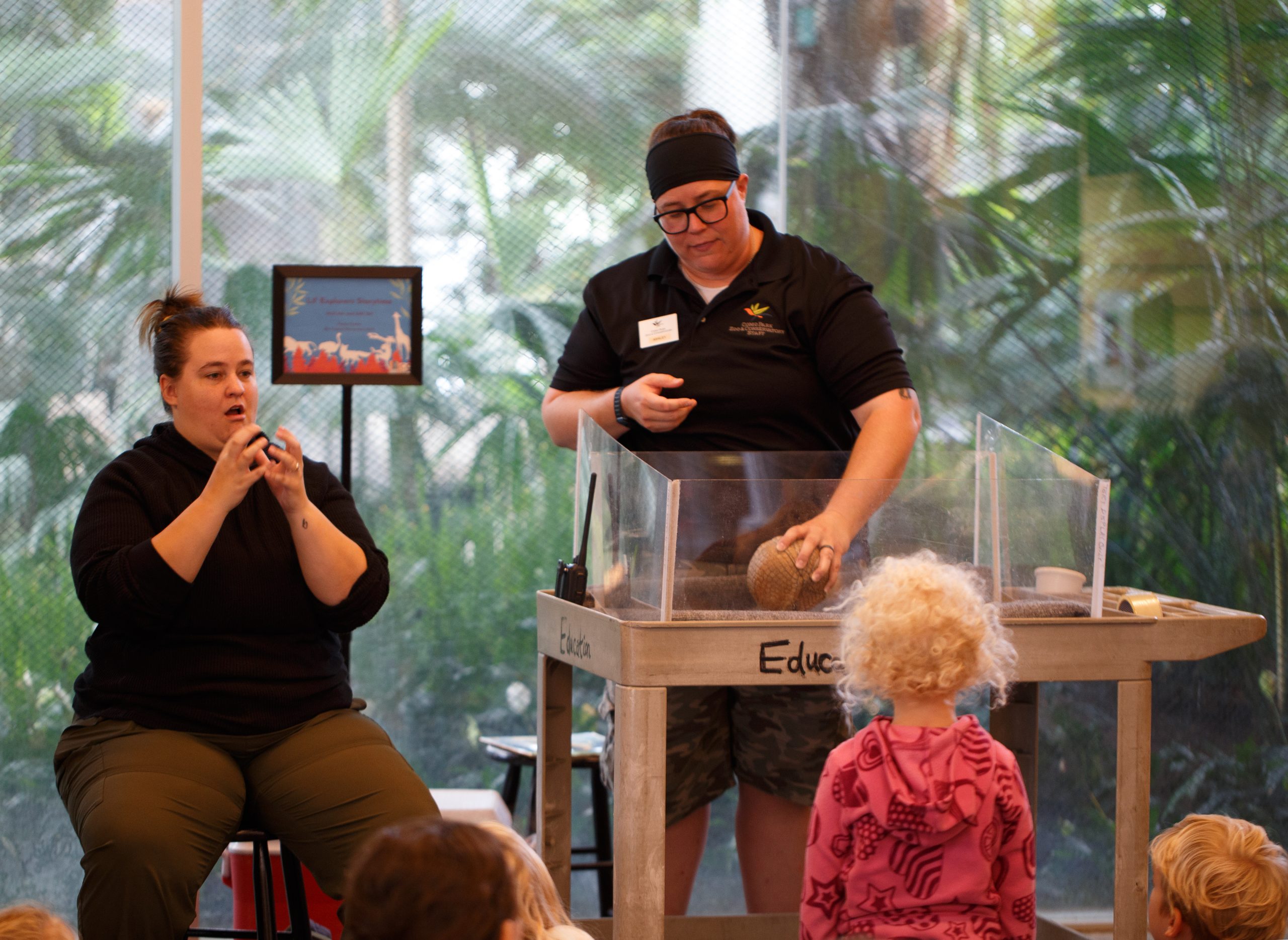
Little Explorers
Free every Thursday from 10 a.m. to noon, Como’s Visitor Center Donor Plaza becomes a fun conservation station for preschoolers, with story time, hands-on activities, and nature themes including Fun with Fish on May 16, Fancy Flowers on May 23, Bird Buddies on May 30, and Down on the Farm on June 6. An ASL interpreter will also be on hand most Thursdays to interpret the 10:30 a.m. story time, 11 a.m. zookeeper talk, and the 11:30 a.m. Blaze Sparky Show.
-

Sensory-Friendly Mornings
Experience Como with a little quiet and calm during these designated early morning openings designed for individuals on the autism spectrum and their families. Visit Como’s website to register in advance for these upcoming dates: May 26, June 11 and June 23 from 9 a.m. to 10 a.m.
-
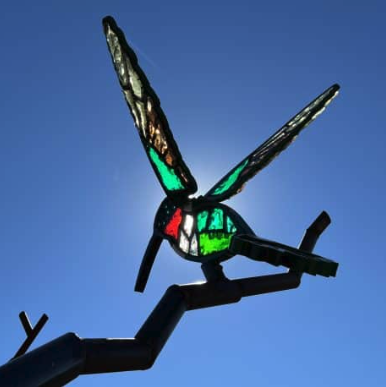
Glass in Flight
See the beauty of insects and other high-fliers through artist Alex Heveri’s traveling art exhibit, featuring bedazzling steel and glass butterflies, beehives, beetles, birds, and more, visiting Como’s campus from May 23 to August 31.
-

Como Town
Make time for the Tilt-A-Whirl on May 18, opening day at Como Town! This year’s new attraction is Dinosaur Expedition, a reservation-only experience for a limited-time is a must-see event featuring 11 life-size fully robotic dinosaurs. The dinosaurs come alive at Como Town from May 24 to September 2, daily 10:30 a.m. – 5:00 p.m.; September 7– 29, Saturday and Sundays only, 10:30 a.m.-5:00 p.m. Open from 11 a.m. to 6 p.m. Wednesdays through Sundays. Remember, Como Friends Supporter-level members receive a complimentary Como Town Fun Card filled with 32 ride points, thanks to our partners at Como Town.
Como Friends marks a major fundraising milestone thanks to community support from people like you
Created by visionaries and volunteers more than a century ago, Como Park Zoo & Conservatory has always relied on community support to keep this public treasure growing. Since 2000, that’s also been the mission of Como Friends, the nonprofit fundraising partner behind major improvements like Como Harbor and Polar Bear Odyssey, and countless behind-the-scenes projects that help Como’s professionals do more for the animals and plants in their care.
Thanks to the extraordinary generosity of people like you, Como Friends has just reached an important milestone, securing more than $50 million in private donations to preserve Como’s historic campus, improve visitor amenities, update animal habitats and gardens, and expand education programs—all while preserving the free admission that welcomes nearly 1.8 million visitors each year.
“When Como Friends started 23 years ago, it would have been hard to fathom that a little start-up organization could someday raise more than $50 million,” says Jackie Sticha, who has served as the nonprofit’s president since its founding. “But we had a big vision for what was possible at Como Park Zoo & Conservatory, and were able to engage some incredible community leaders who helped us to kick off the organization, and to grow our work year after year.”
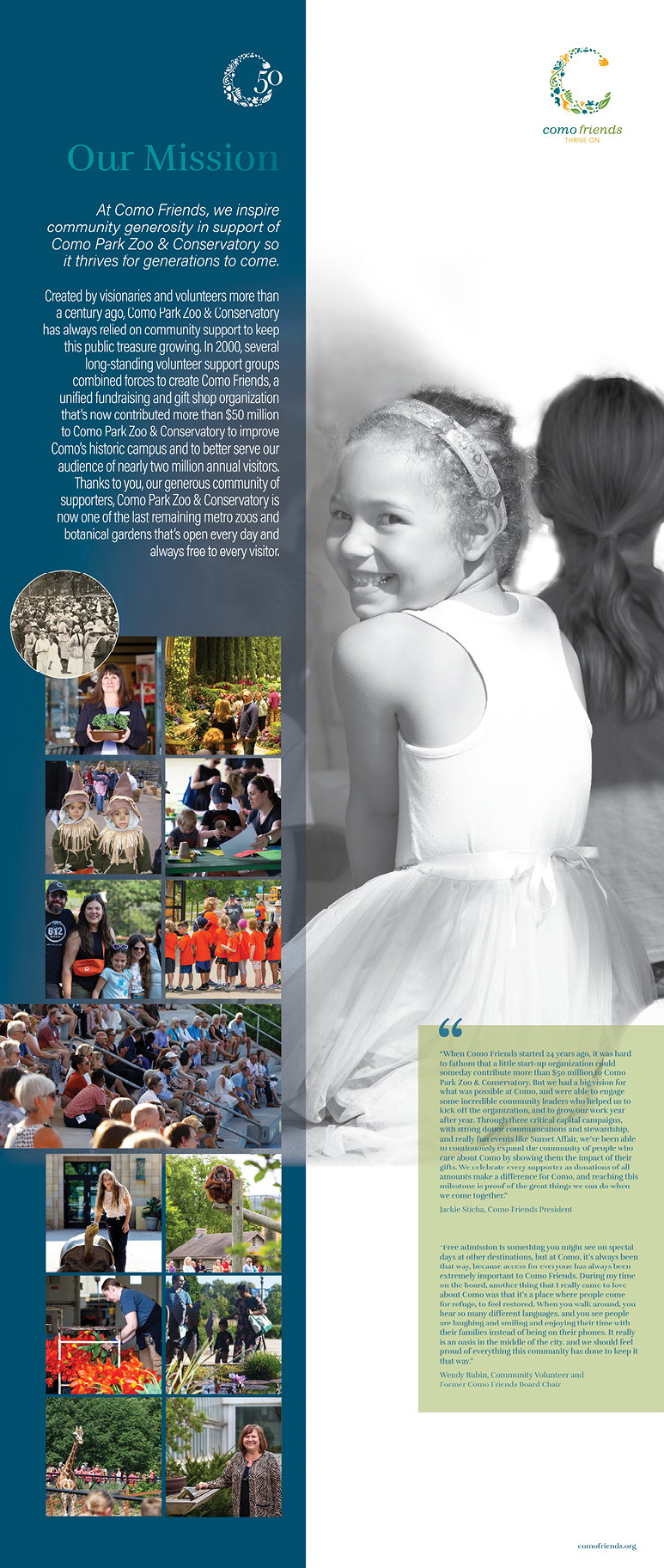
“Como’s transformation over the last 20 years is really rooted in this great public/private partnership,” says Michelle Furrer, Como Park Zoo & Conservatory’s director and campus manager. “Having Como Friends with us at the table at the start of every project has been a real benefit when it comes to the design process and value engineering of our capital improvements. They can see where we’re going to have challenges, and it helps them to be a better advocate for us as they’re seeking additional funding from the community. There’s so much that Como Friends makes possible year to year, from small projects, to major repairs, to behind-the-scenes operational support. Como just wouldn’t be where it is today without their support.”
Originally founded through the merger of several different fundraising and nonprofit groups, Como Friends has grown every year since its founding, expanding fundraising strategy and growing the retail operation at Garden Safari Gifts to keep pace with Como’s needs. From an initial contribution of $309,740 in 2000, Como Friends’ support has increased more than five-fold, with an average annual contribution of nearly $1.7 million each year—far more in years during capital campaigns the nonprofit has led. This commitment to Como’s daily operations has been critical to preserving the open-door policy at Como Park Zoo & Conservatory, one of the last major metro area zoos and botanical gardens that’s always free to visitors.
“Through three critical capital campaigns, with strong communications and stewardship, and really fun events like Sunset Affair, we’ve been able to continuously expand the community of people who care about Como by showing them the impact of their gifts,” says Sticha. “While we’re proud of achieving our mission as a nonprofit, we’re also incredibly grateful to the members, sponsors, individuals, businesses, and corporate and foundation donors that have helped us succeed through their generosity, commitment and affection for this place. We want this community to understand that every size donation does make a difference at Como, and reaching this milestone is proof of the great things we can do when we come together.”
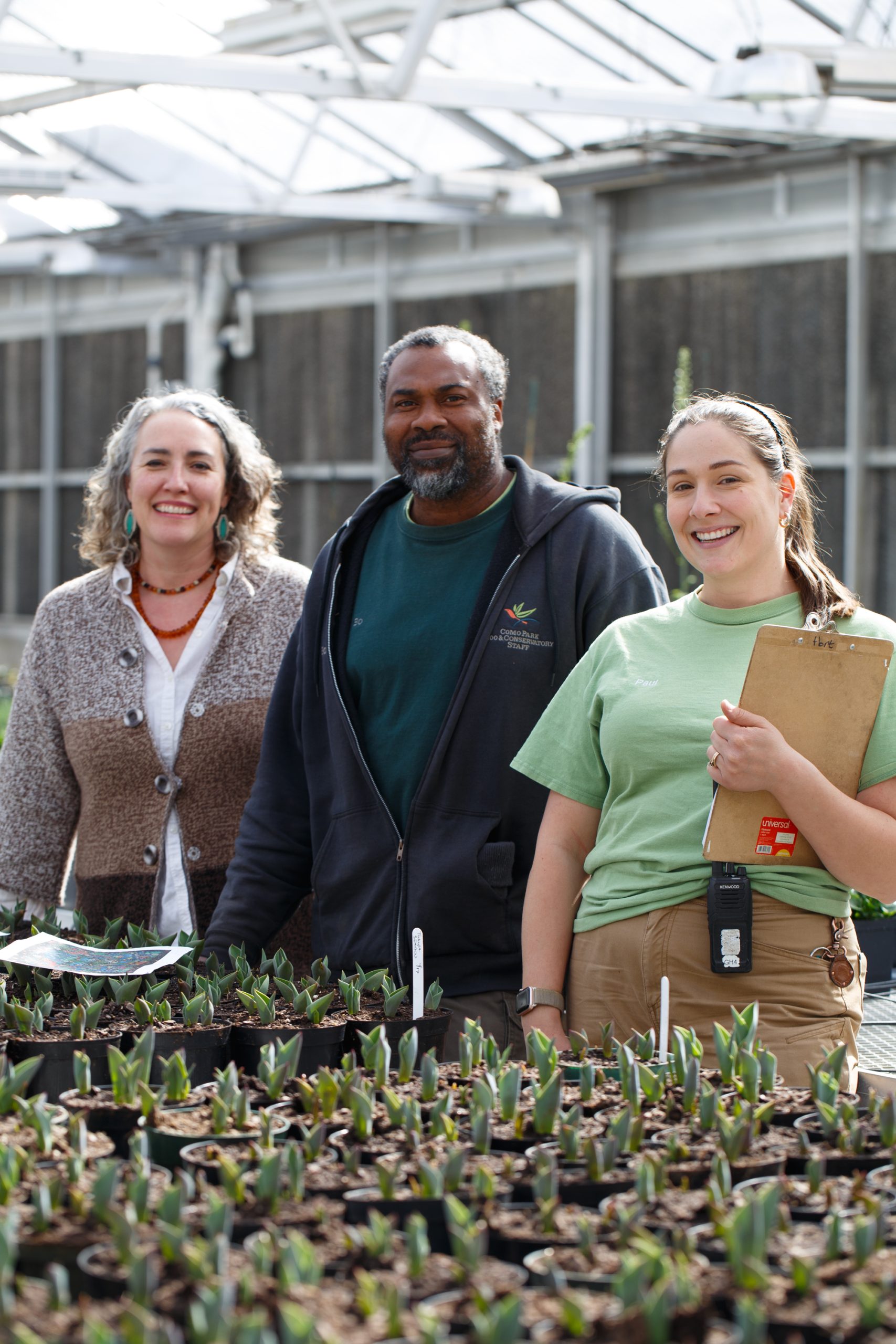
With more than 12,000 tulip, hyacinth, daffodil, crocus, and muscari bulbs grown especially for the Sunken Garden, The Marjorie McNeely Conservatory’s Spring Flower Show opening next week is always one of the Twin Cities’ most colorful rites of spring.
But this season, the plant list in “Minnesota’s most beautiful room” is also taking its cues from Minnesota’s springtime color palette. “Our goal is to make it look a little bit more like a forest,” says Como’s horticultural curator Dr. Lisa Philander.
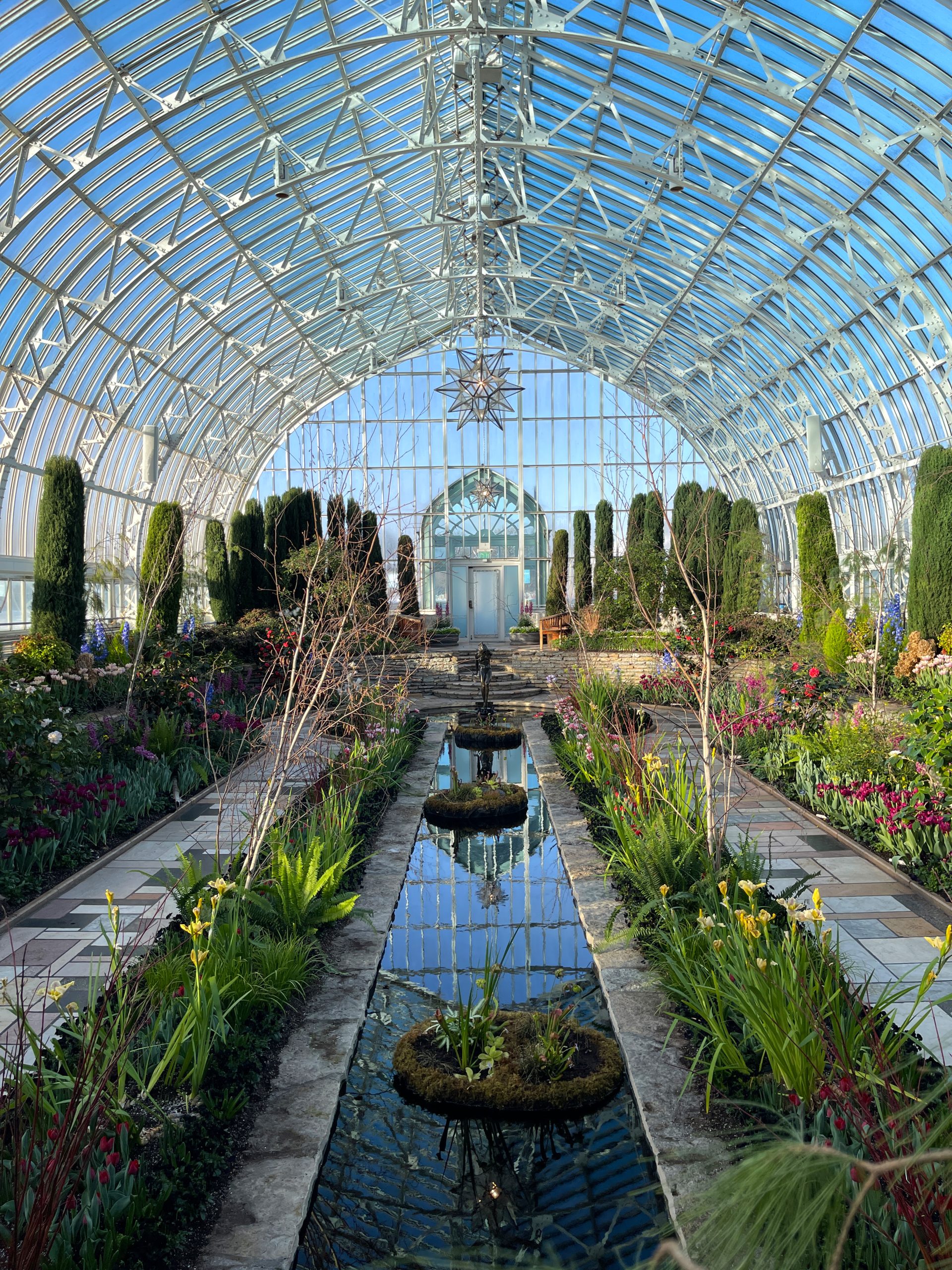
For the show, Philander and horticulturists Bo Akinkuotu and Katie Horvath are introducing plant material that reflects Minnesota’s boreal forests and prairies. Visitors will notice birch logs and larger trees, milkweed, catchflies and black-eyed Susans, black pansies, columbine, snap dragons and delphinium, and even mini bogs that mimic the look of Minnesota’s wetlands. The show will also feature skunk cabbage provided by the Eloise Butler Wildflower Garden, and the showy lady’s slipper orchid, a recent gift from the Minnesota Landscape Arboretum.
Thanks to your contributions to Como Friends, all of the Marjorie McNeely Conservatory’s rotating flower shows are free to the public. The Spring Flower Show runs daily from March 22 to April 28.
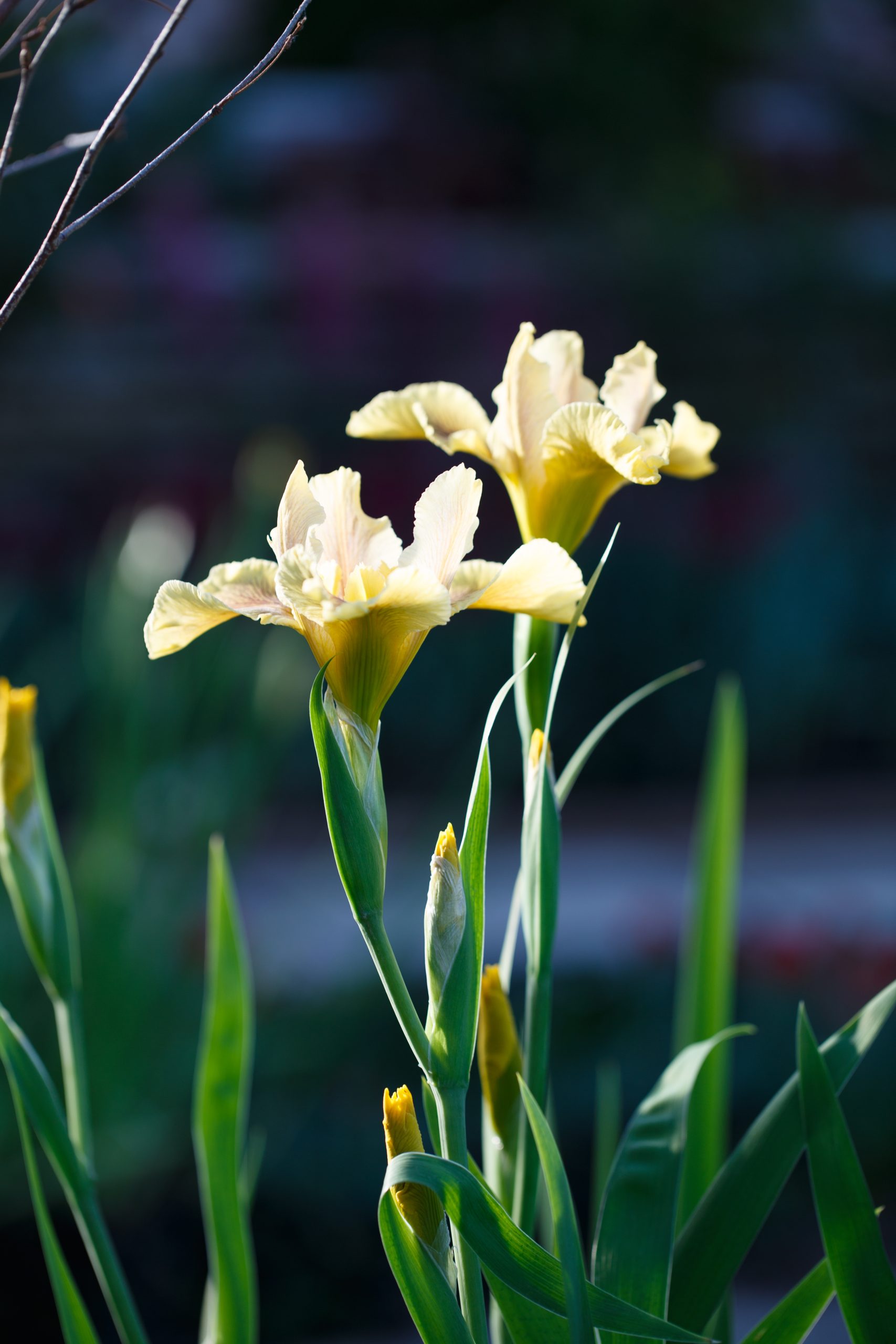
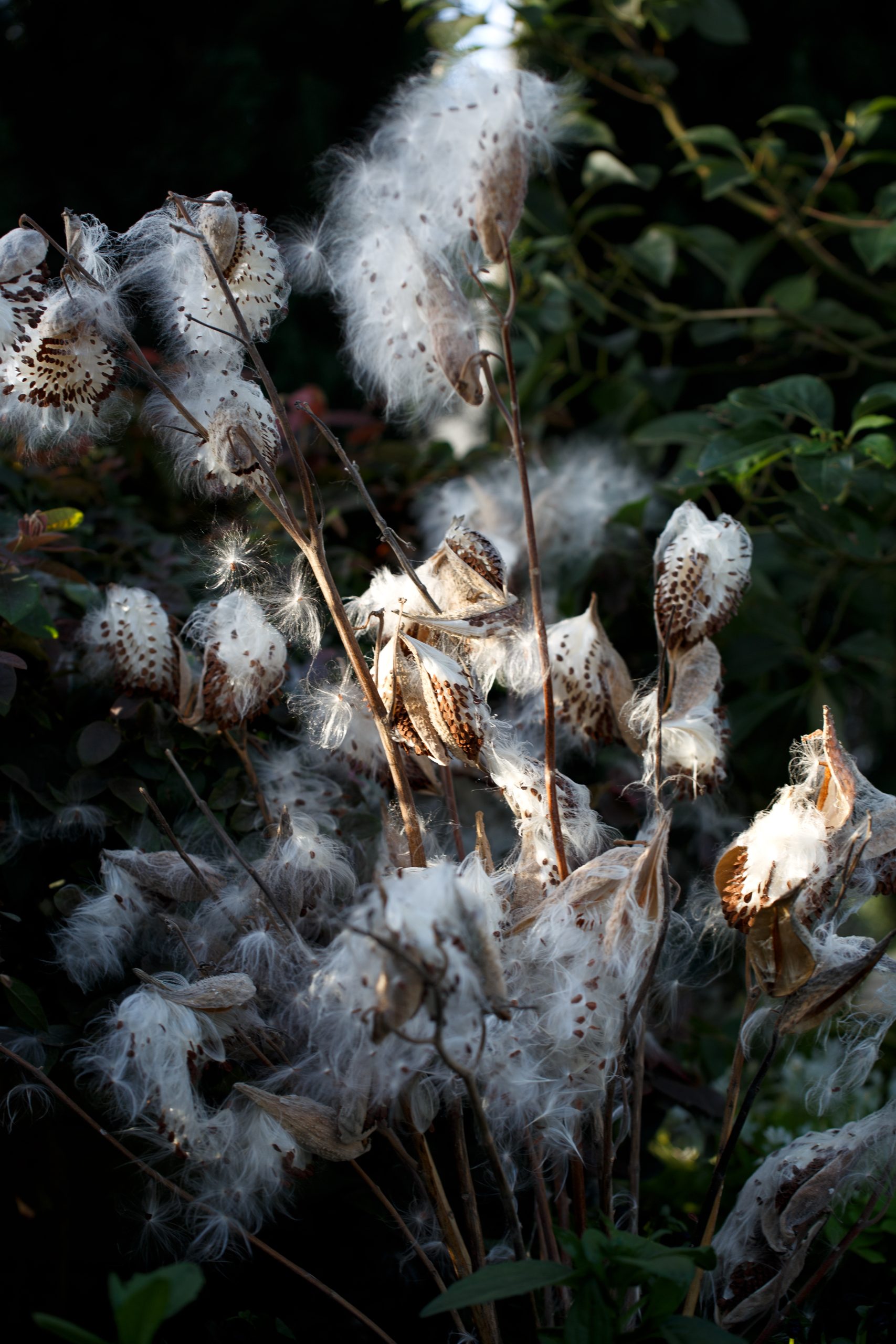
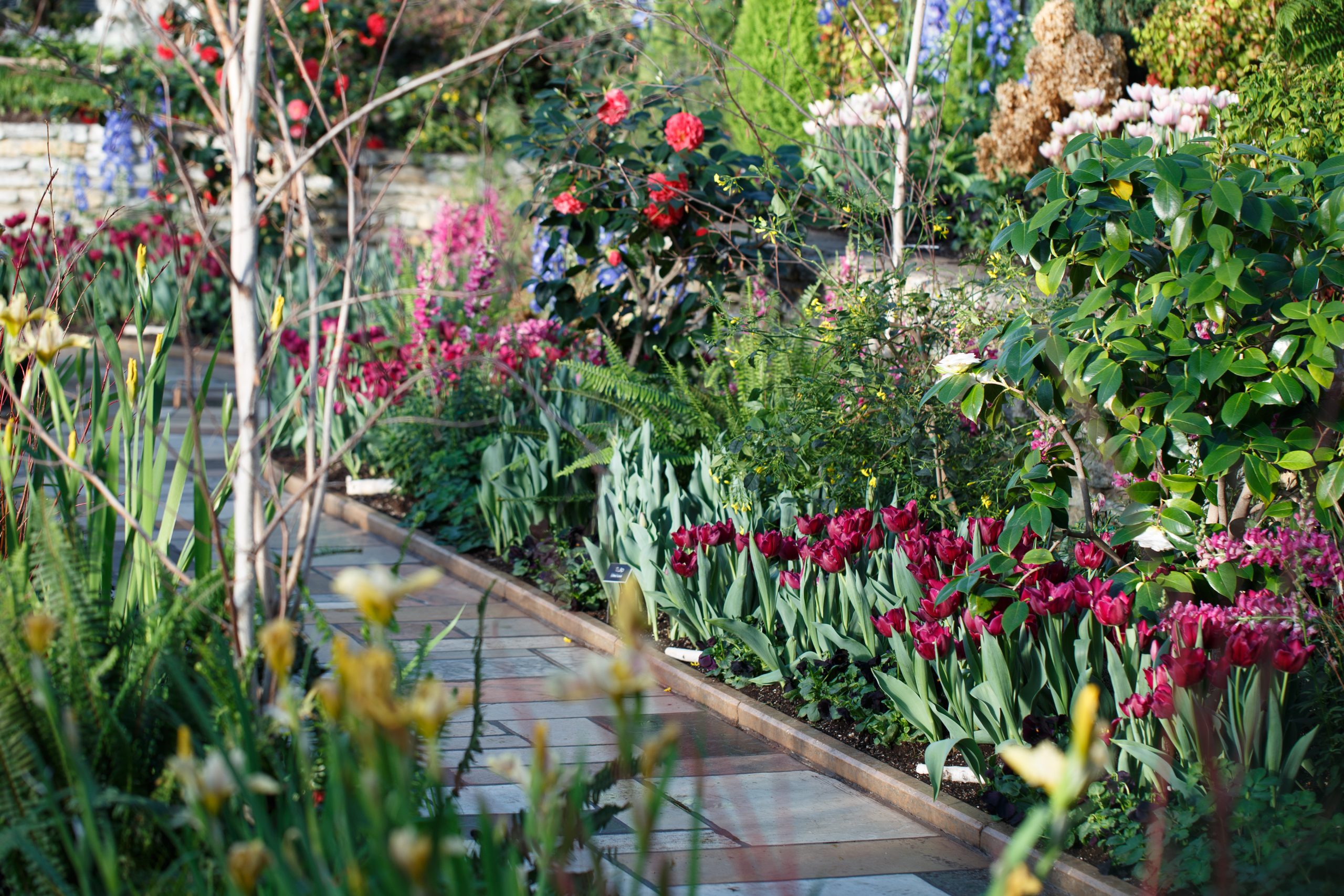
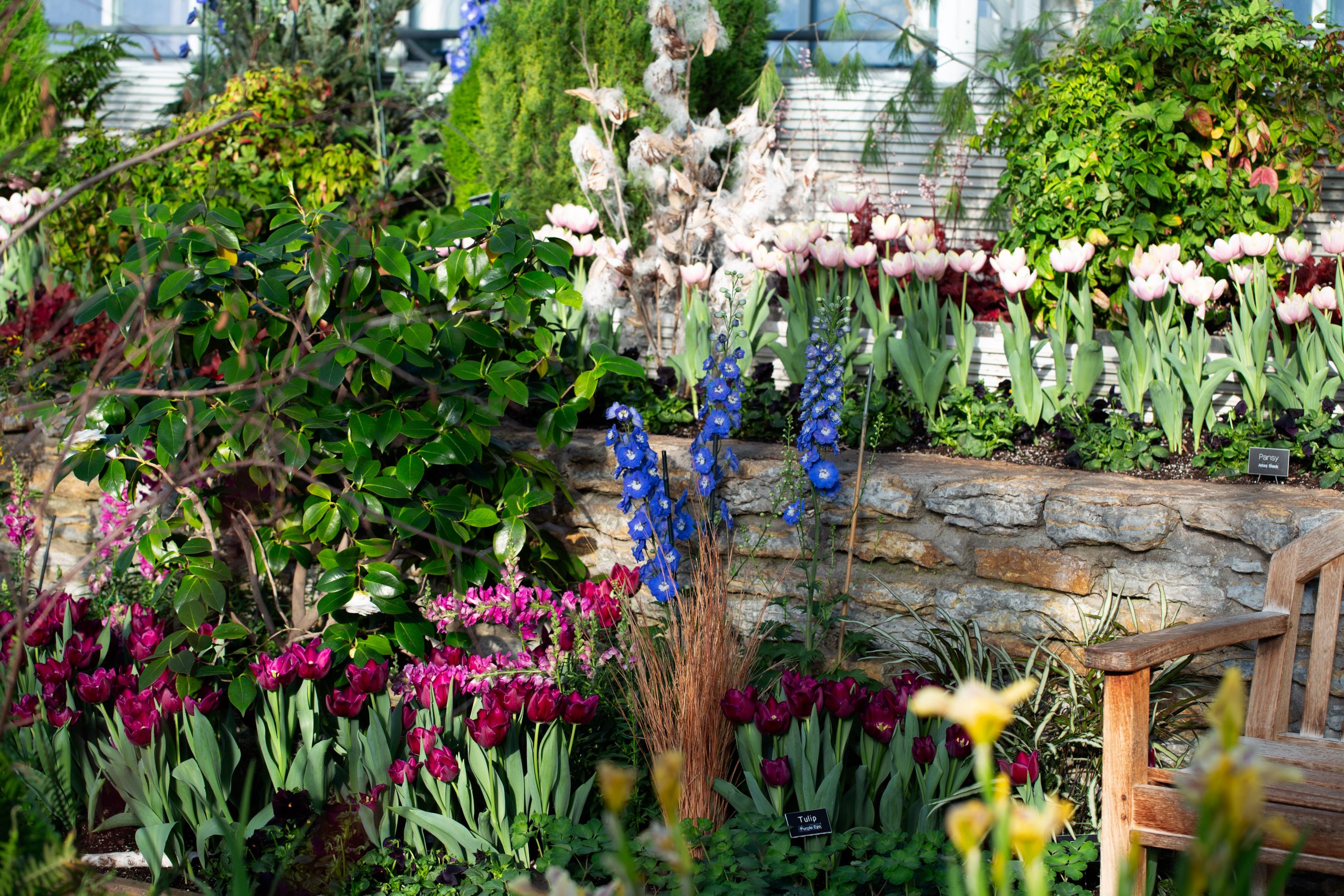
As a Conservation Champion, Como Zoo primate keeper Em Brunmeier traveled to Peru to learn more about spider monkeys in the wild

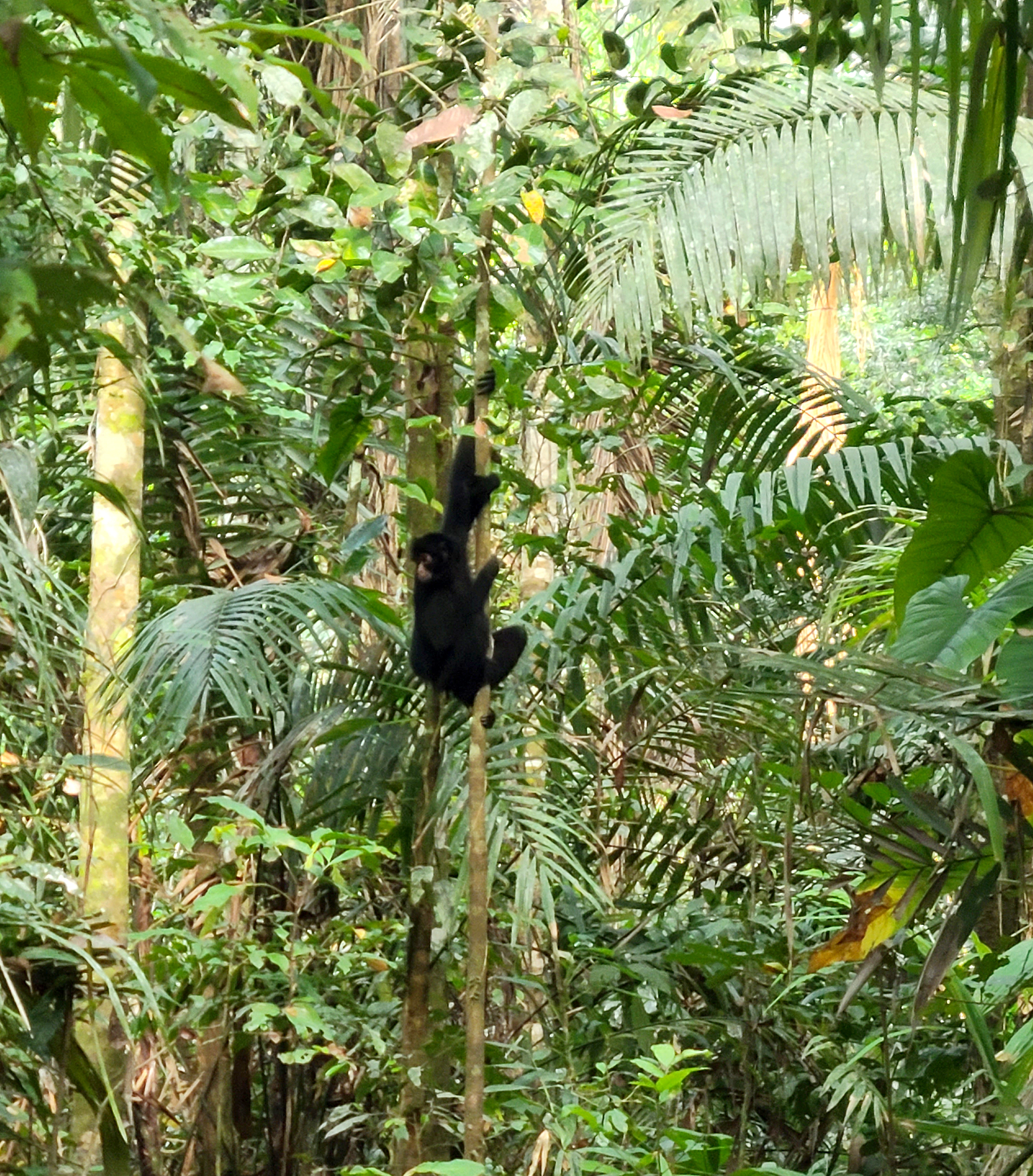
Behind the scenes in Como Zoo’s Primate Building, Brunmeier has become a big fan of the four spider monkeys in her care—Gomez, Katie, Ellie, and Jazz—and she applied to learn more about their cousins in the wild through Conservation Champions, the Como Friends micro-grant program that encourages Como’s keepers and horticulturists to take part in conservation efforts in the field. After researching conservation projects around South America, she decided that the Kawsay Biological Station in Puerto Maldonado, Madre de Dios, Peru was the place to be.
“What was really special about this location was that the team there had been able to bring back and restore a spider monkey population that had been locally extinct, and that was something that I was really excited to be part of, and to see how they were managing that,” she says. “They also work with other scientists in the area, like botanists and PhD students from abroad to research other parts of the ecosystem and how they all correlate with spider monkeys. I really wanted the chance to learn more about how all of these factors come together.”
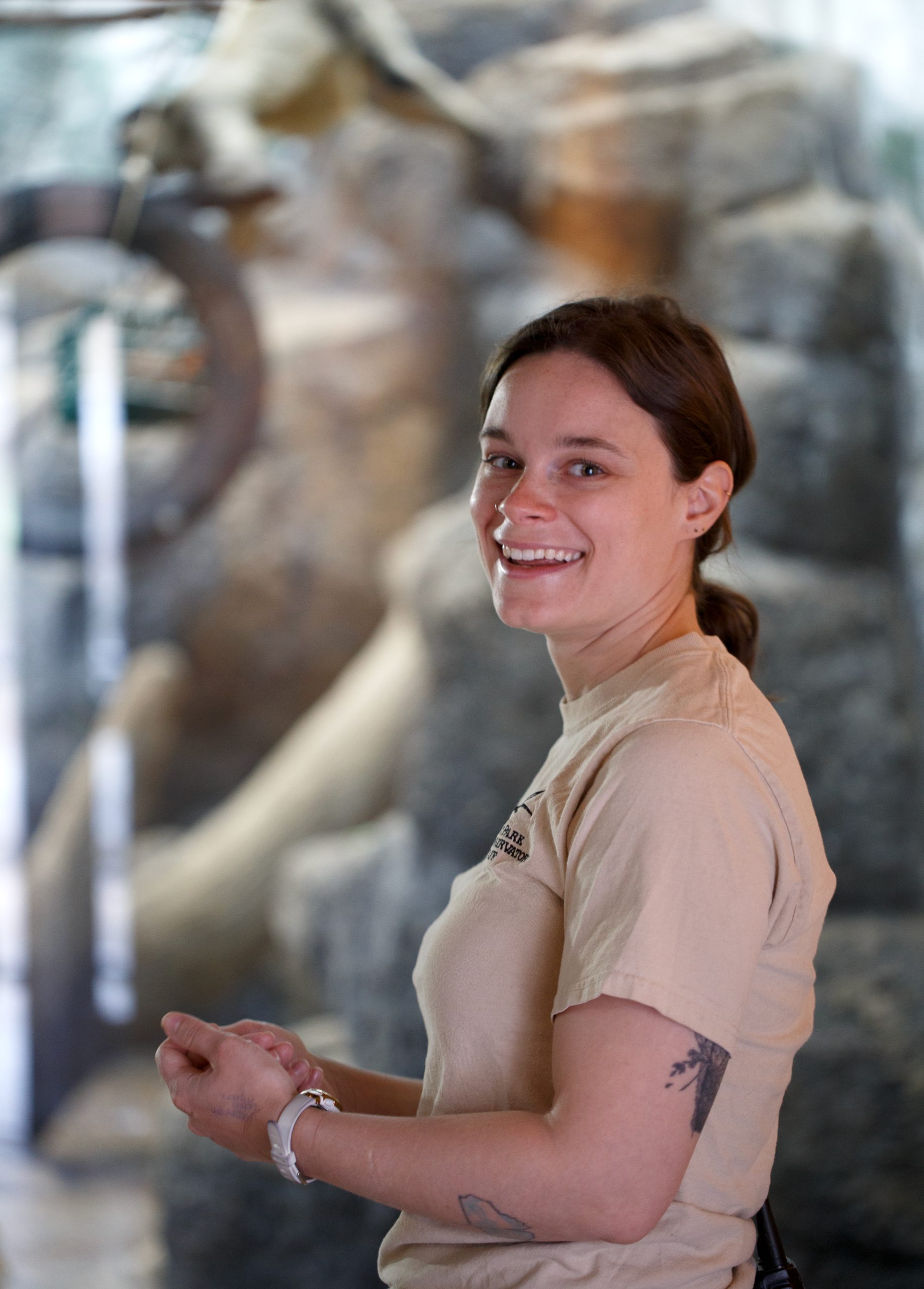
As part of the project, Brunmeier joined a team of researchers tracking spider monkeys that had been previously released into the Tambopata National Reserve to study the seasonal variation of their behavior. “With no GPS collars or other tracking devices, it was quite a task,” she says. “We had no guarantee we would find them and had to go pretty far into the Amazon rainforest.” But once the spider monkeys were located, Brunmeier got the chance to hear the full chorus of their vocalizations. “For spider monkeys in the wild, their home range is nearly 700 acres, and they often split up their group and then reunite at night to sleep together,” she says. “To do all of that requires quite a lot of logistics, so they’ve come up with quite a lot of vocalizations. They have little chirping sounds that they make when they’re close to each other, and really loud, bellowing calls that they use to try and find each other over long distances. It was so fun listening to them—they have lots of things to say.”
During her two and a half weeks in the field, Brunmeier also got the chance to care for young spider monkeys in a rehabilitation facility. “That’s where my personal expertise came in handy, because hands-on care of the animals is what I do every day,” she says. “I was also able to talk with the team about how we do primate enrichment at AZA [Association of Zoos and Aquariums] institutions in the U.S., which is something I’m passionate about.”
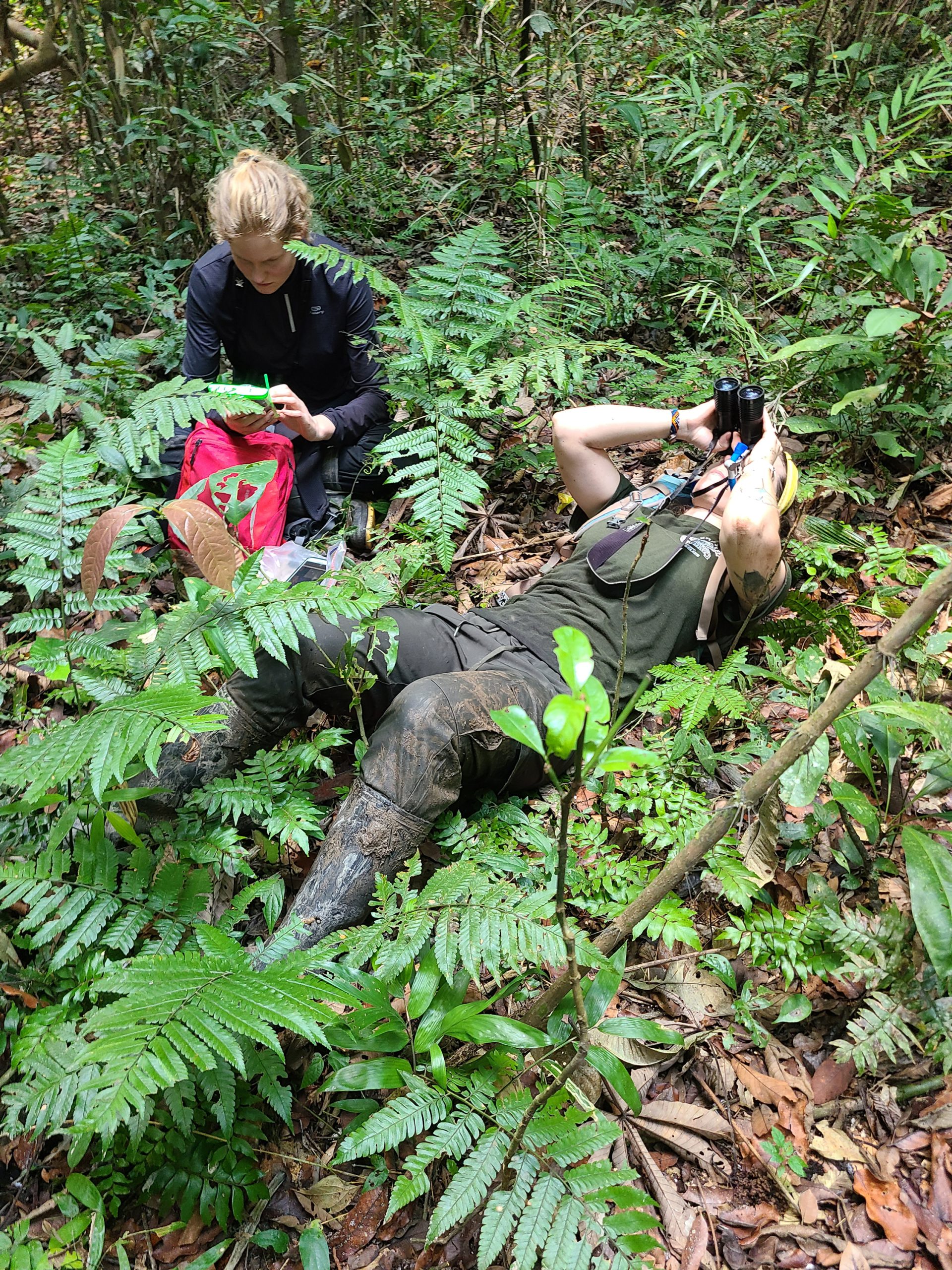
Now back at Como Zoo, Brunmeier says her trip to Peru has brought new insights to her work with spider monkeys, and new ideas for ongoing animal enrichment to the conservation work at Kawsay Biological Station. “What’s cool about the Conservation Champions trips is that it’s a two-way street,” she says. “We get the chance to learn about the animals we care about in the wild, and because we know our animals at Como Zoo so well, we also have important things to share with our conservation partners.”
Our Conservation Champions Program would not be possible without your support. Thank you!
Personalizing nature is one of the first steps in protecting it
Sparky, Neil, Chloe, and Schroeder are just a few of the Como Park Zoo & Conservatory animals known to millions of visitors by their first names. Though there was once a time when zoos shied away from showcasing the individual animals in their care, a growing body of research now tells us that encouraging the public to forge personal connections to nature is one of the best ways to protect it.
That thinking is the driving force behind a series of new education and engagement strategies now in effect at Como Park Zoo & Conservatory, thanks to support from Advancing Conservation through Empathy (ACE) for Wildlife, a learning network of AZA-accredited zoos, aquariums, and other institutions exploring effective practices for fostering empathy for animals.
“The old theory was that simply sharing knowledge would be enough to inspire action, but what we’re coming to realize is that fostering meaningful emotional connections is just as important. Having empathy for an animal builds the desire to act on their behalf,” says Bekah Hanes, Como’s education and conservation curator. “Empathy is a skill you can develop and build on, and it’s becoming an important tool to help people cross the finish line from thinking about conservation to actually acting out those values, long after a zoo visit is over.”

The official shift toward empathy-focused engagement started in 2016, when Como Friends secured a major grant to help Como Park Zoo & Conservatory implement a new education and engagement strategy called the ROADMAP (Reaching Our Audiences by Developing Mission Aligned Programs). While the pandemic put a pause on public education programs for a time, Como continued to move ahead with its mission, securing grants from ACE for Wildlife to rewrite Como’s volunteer interpretive programs with an empathy focus, to use empathy as the lens for a new education strategic plan, and to create new permanent signage in the wolves and large cats habitat that uses empathy-inspiring language. While Como is one of the inaugural members of the ACE for Wildlife Learning Network, a special project of Seattle’s Woodland Park Zoo, the empathy movement is gaining ground with many other AZA-accredited zoos and aquariums.

Public Engagement Coordinator Kelsey Raffel says “it’s a great shift that’s happened in a relatively short amount of time,” in part because it embodies an approach toward audience engagement that Como’s keepers, horticulturists, interpreters, and educators gravitate toward naturally. “Focusing on empathy in our education programs, volunteer training, and visitor engagement has gotten a great reception from the campus,” she says. “For instance, our interpretive staff have shared that they love talking about the individual animals we care for, their personalities and likes and dislikes, and this approach really encourages them to do that.”
Jackie Sticha, president of Como Friends, says community support is critical to providing the resources Como Park Zoo & Conservatory needs to stay current as a conservation educator and a national leader in animal care. “More than 20 years ago, Como Friends funding helped Como Zoo make a shift toward positive reinforcement training for animals, and we see this empathy work as part of that same evolution,” she says. “It’s just natural to want to know the names of the animals at Como Zoo, and now the research tells us it’s also a really powerful way of connecting visitors to the natural world.”
The St. Paul Winter Carnival Orchid Show is the cure for the mid-winter blahs
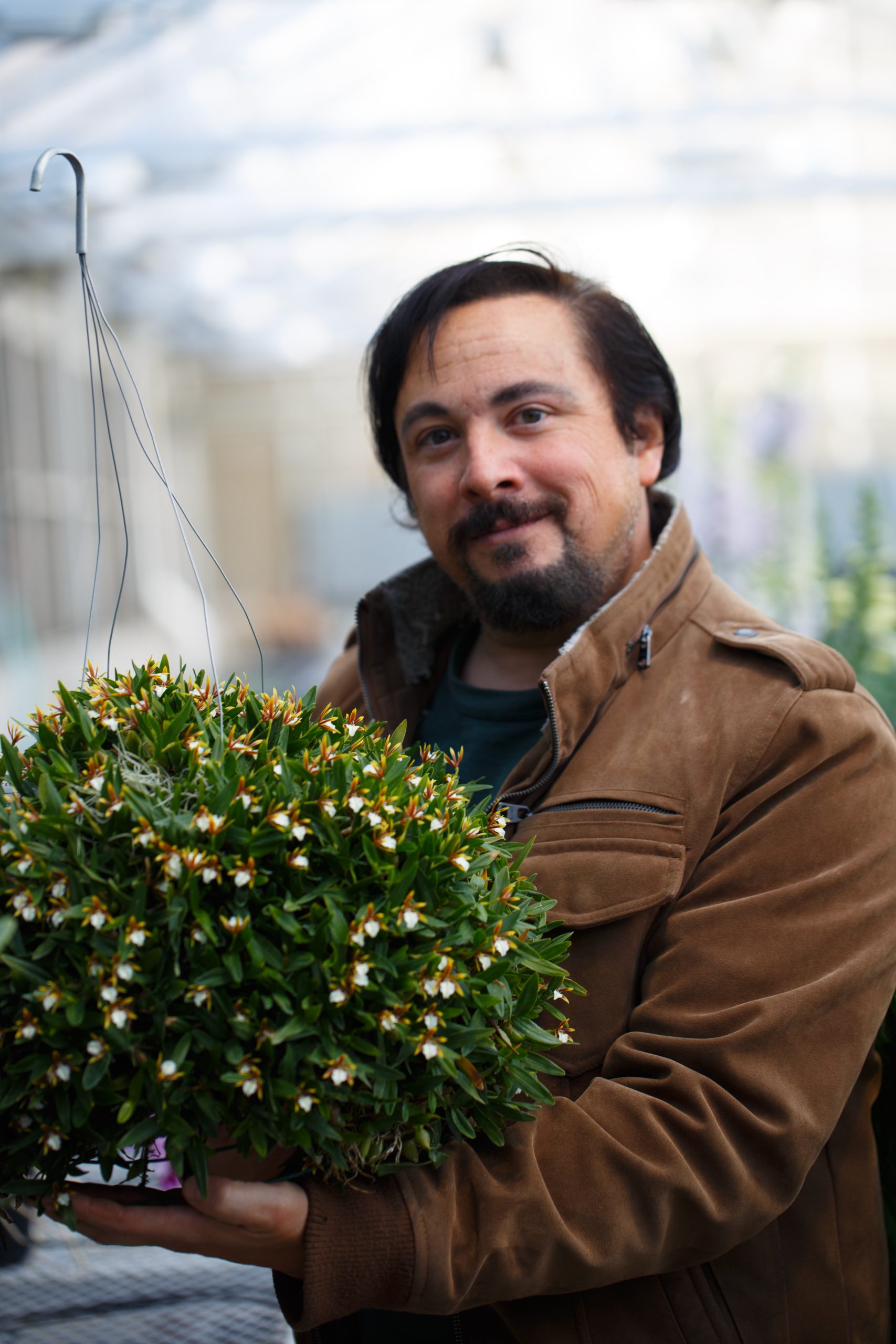
With more than 28,000 naturally occurring species, the Orchidaceae family is one of the largest and most diverse of the world’s flowering plants. On January 27 and 28, Marjorie McNeely Conservatory visitors will get a chance to see the cream of the crop at the St. Paul Winter Carnival Orchid Show, a Como tradition for nearly 50 years.
Curating and designing Como’s display this year is horticulturist Alejandro Balderas, who cares about orchids even in his off-hours. “Before I moved to Minnesota from California, I had about 70 plants and 30 cultivars of my own,” he says. While he’s trimmed his personal collection to a more manageable size, there’s a good chance it will grow again once he’s had a look at the newest species and varietals for purchase at the Orchid Show’s marketplace. “There are so many shapes and sizes, and there’s always something new on the market,” he says. “It makes it hard to resist.”
Like the tulip mania that hit Europe in the 1600s, orchids had a similar history in the 1800s, when so-called “orchidelirium” sent prices for rare tropical species soaring into the stratosphere. But now with so many hearty varieties widely available in garden shops and grocery stores, orchids are no longer quite as intimidating to curious home gardeners.
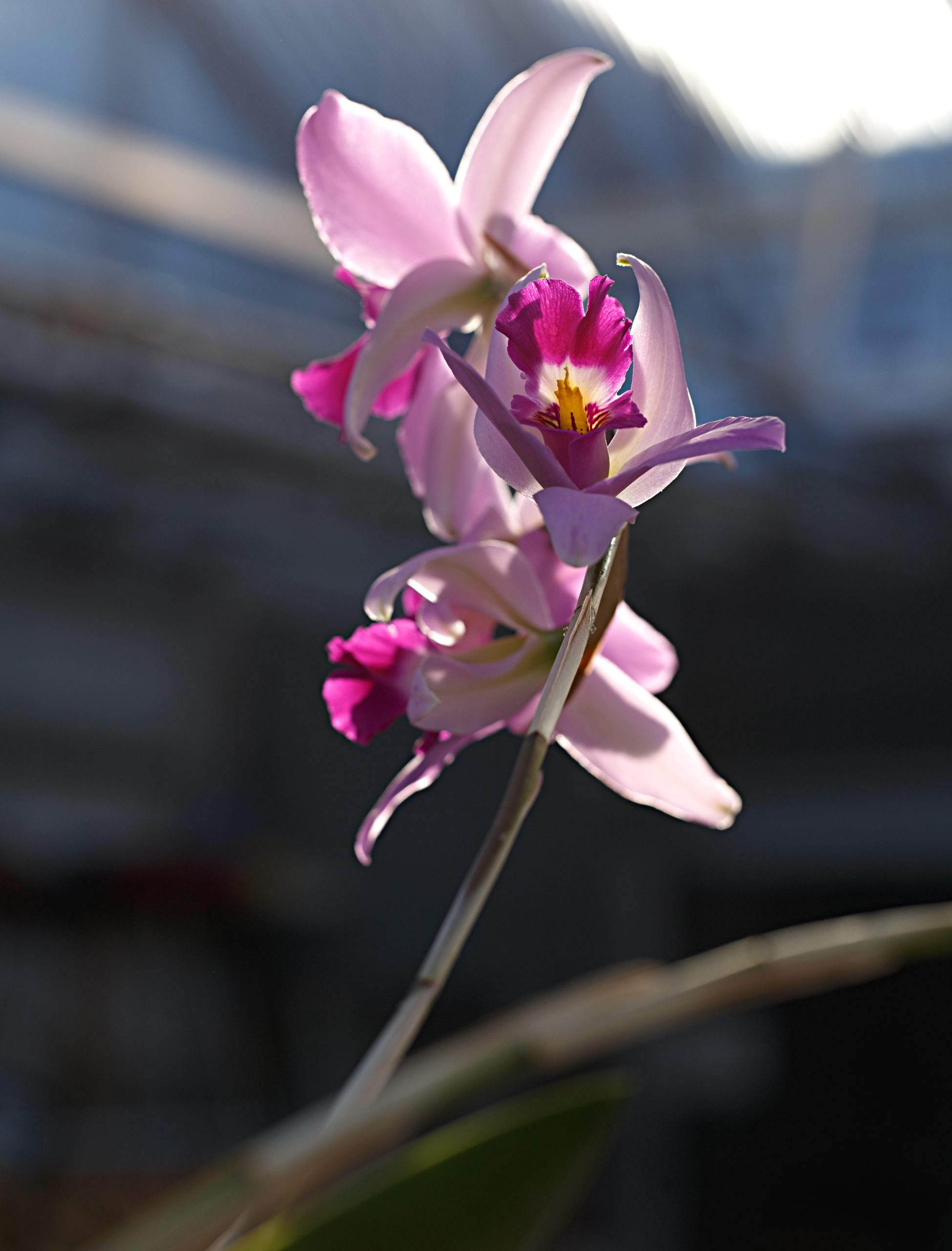
“Orchid growing has become much more transparent because of the internet and with people having access to the literature online,” he says, from groups like the Orchid Society of Minnesota, a co-sponsor of the Winter Carnival Show. “They’re one of the few houseplants that actually flowers consistently,” he says, with colors made to attract pollinators and people stuck indoors during the winter. “Minnesotans seem to really love their orchids,” he says.
For the show, Balderas and other horticulturists are planning to display more than two dozen of the Marjorie McNeely Conservatory’s best species, drawn from a large working collection predominantly featuring plants from Central and South America. Set in the Fern Room, the design will feature a sculpture dedicated to the Conservatory on its 50th anniversary in 1965.
Advanced admission reservations are required to attend the St. Paul Winter Carnival Orchid Show, and tickets are $5 for adults and $4 for Como Friends members, seniors, and children under the age of 12. Visit this link for more information.
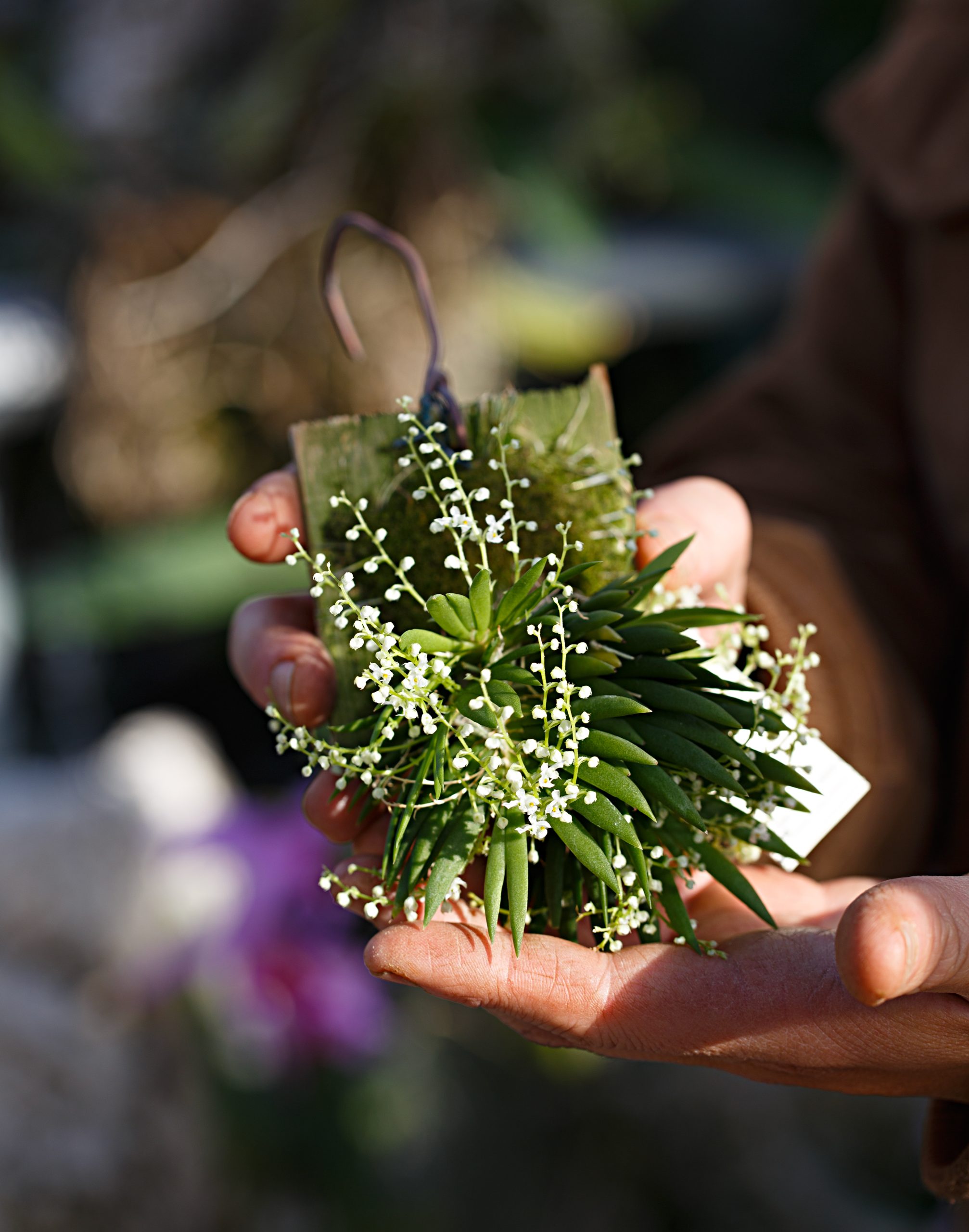
Your support for Como Friends helps to make the Conservation Champions program possible, supporting Como’s talented staff’s participation in conservation partnerships and in their continued professional development. Thank you!
